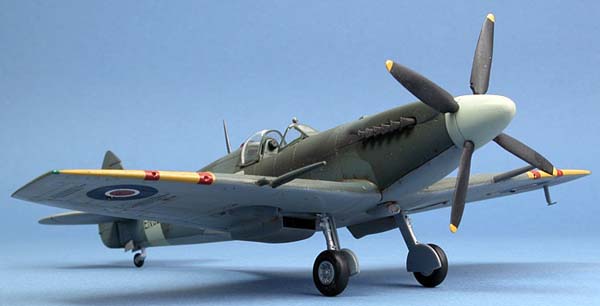|


|
Spitfire Mk I/II Landing light control (Cont
Pg 6 No 36)
This superb piece is an exact copy of
the control used to operate the landing lights on the MK
I/II Spitfire.
This part is a reproduction and is not
functional. This is made from metal from original drawings.
Click on
the pictures to enlarge.
   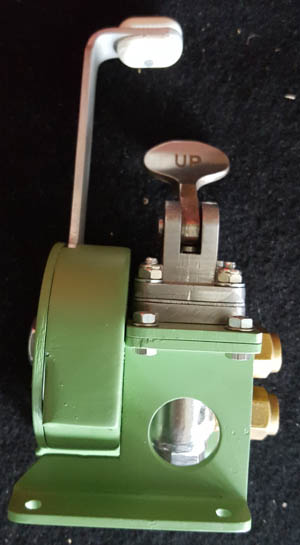
This piece is available in the
lighting page click on this link to navigate the lighting
pages.
|
|
Click on
pictures to enlarge
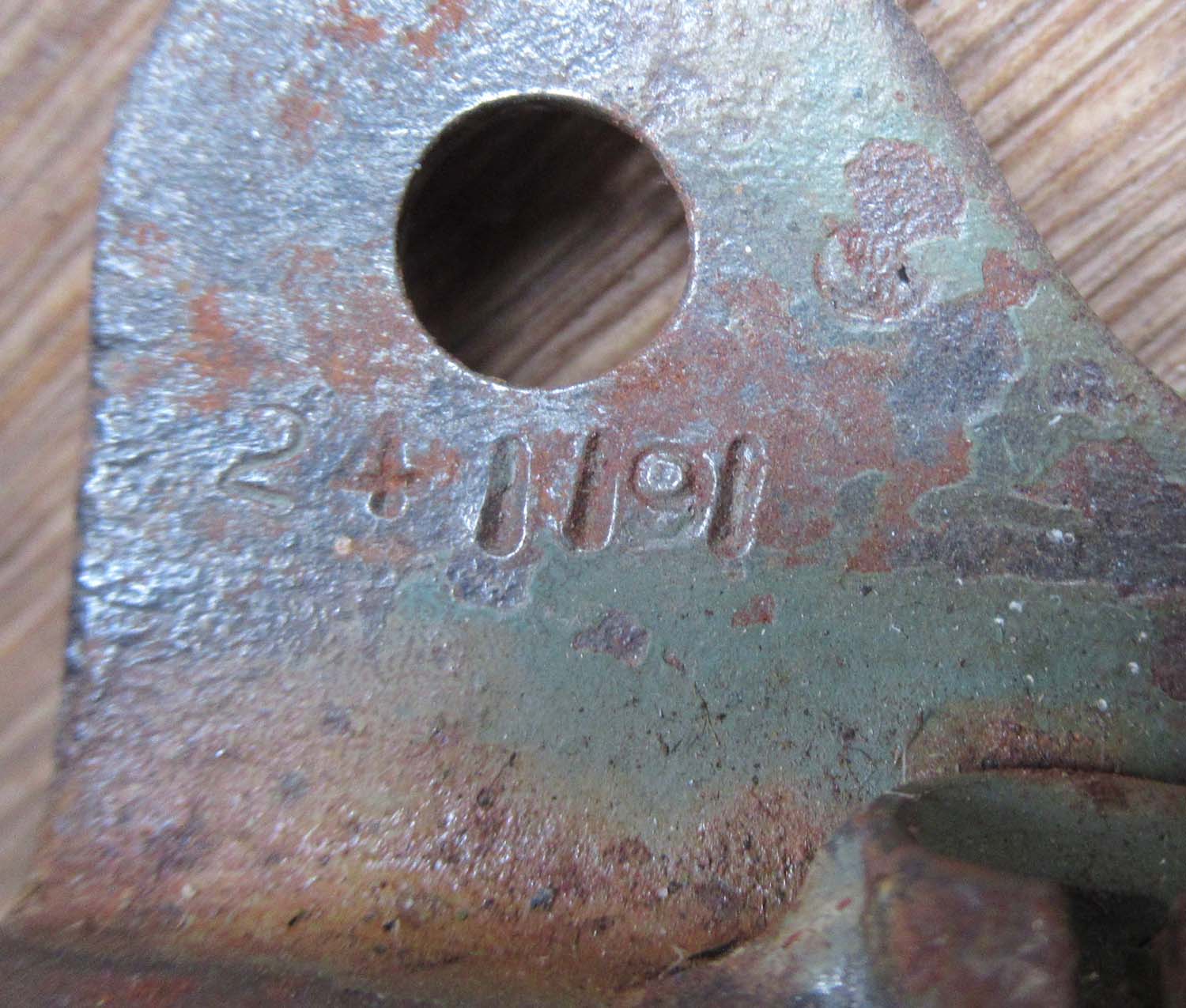
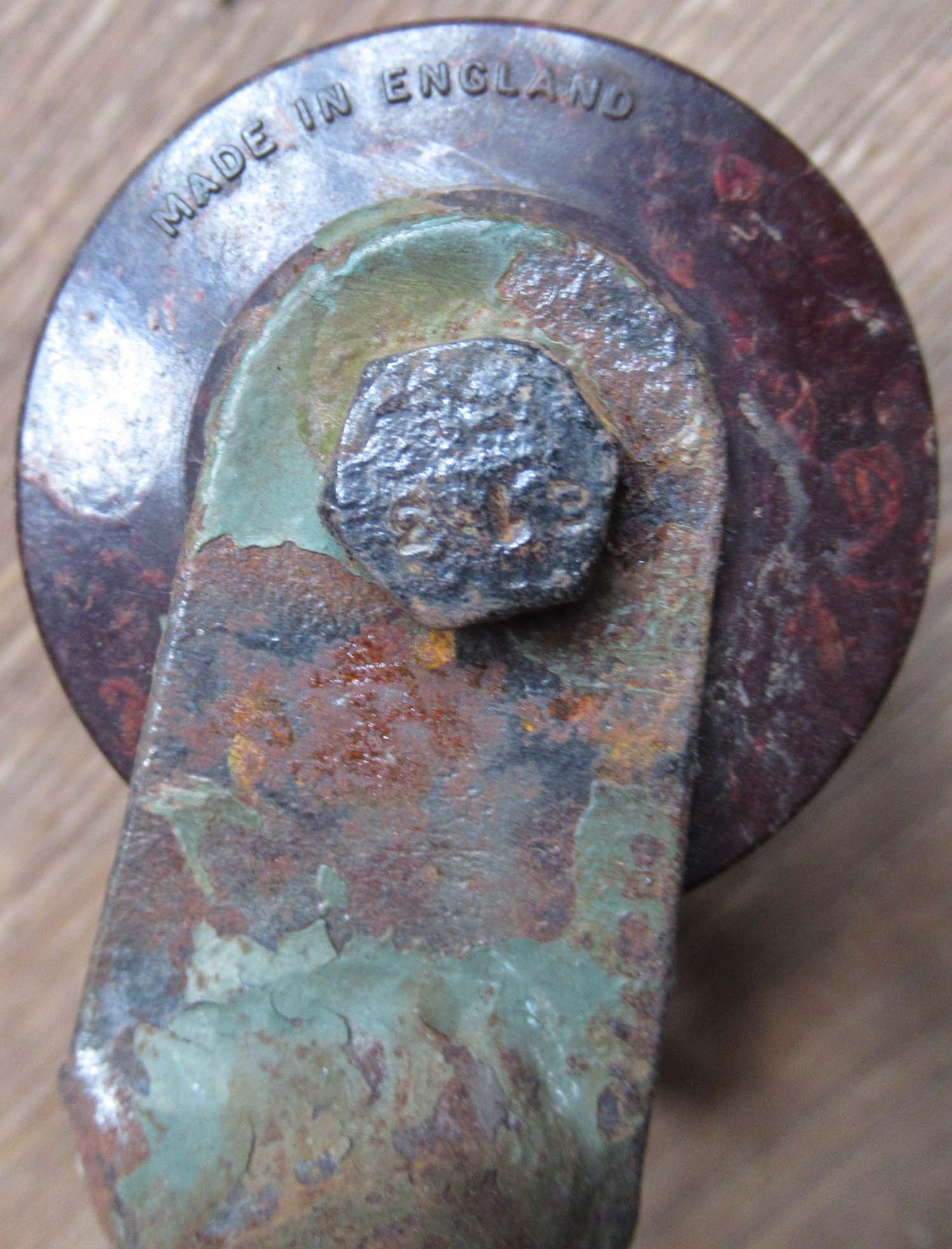
|
Bracket with pulley (Cont Pg 6
No 35)
I have no idea what this is but
is British with a steel bracket and had a cable running to it.
If you can tell me what this is would be much appreciated please
contact me.
241191
Click on
pictures to enlarge


£35


|
|
Click on
pictures to enlarge
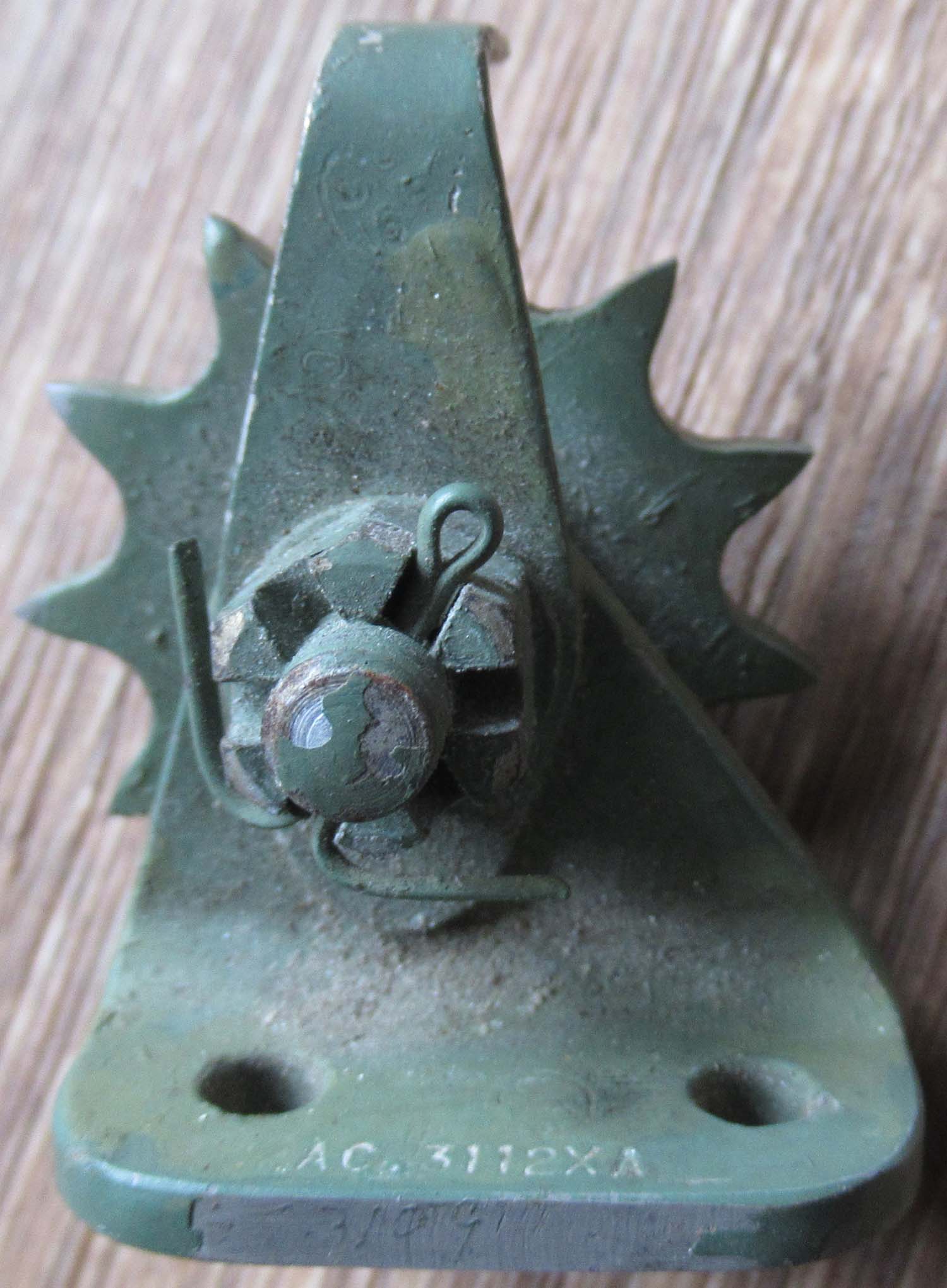
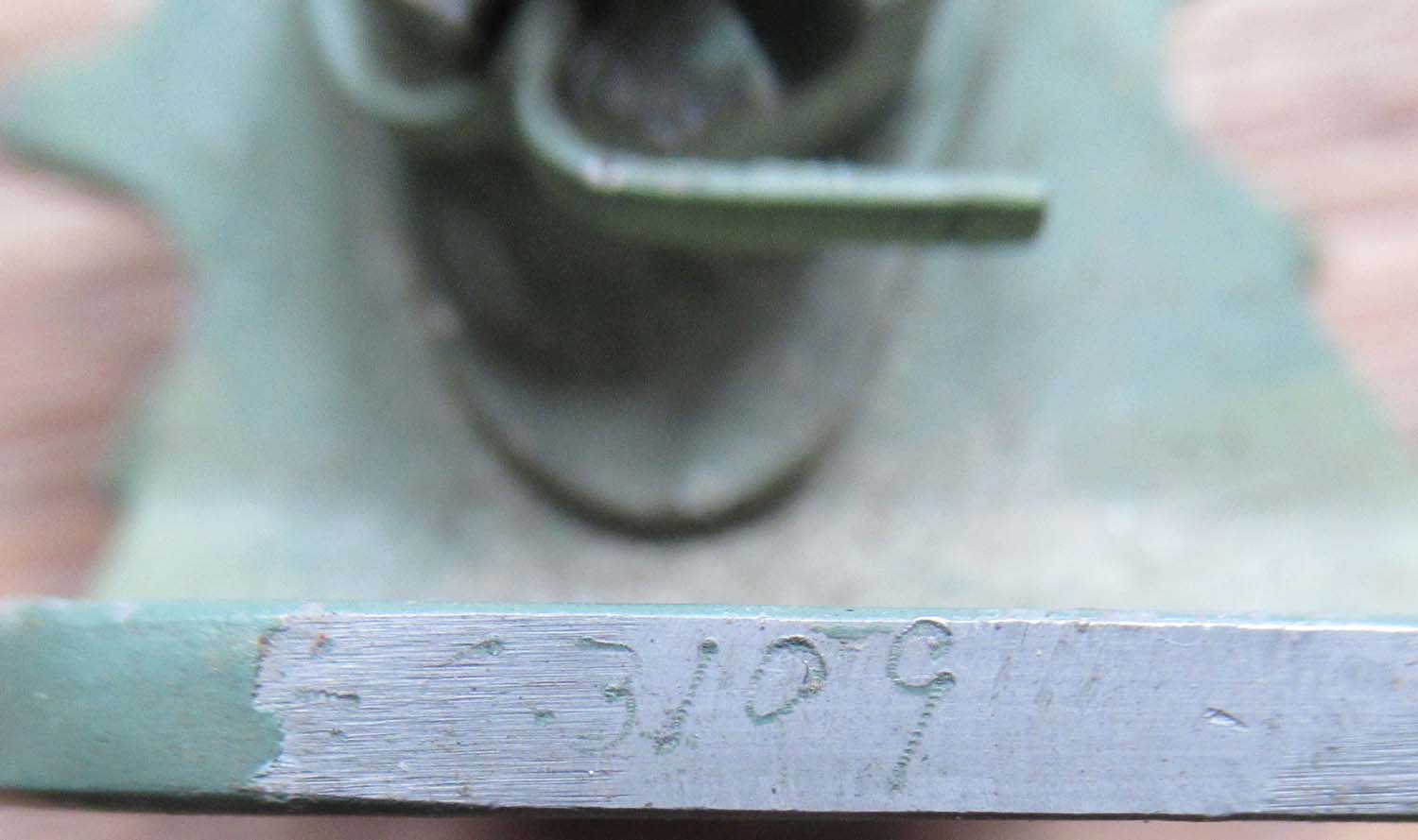
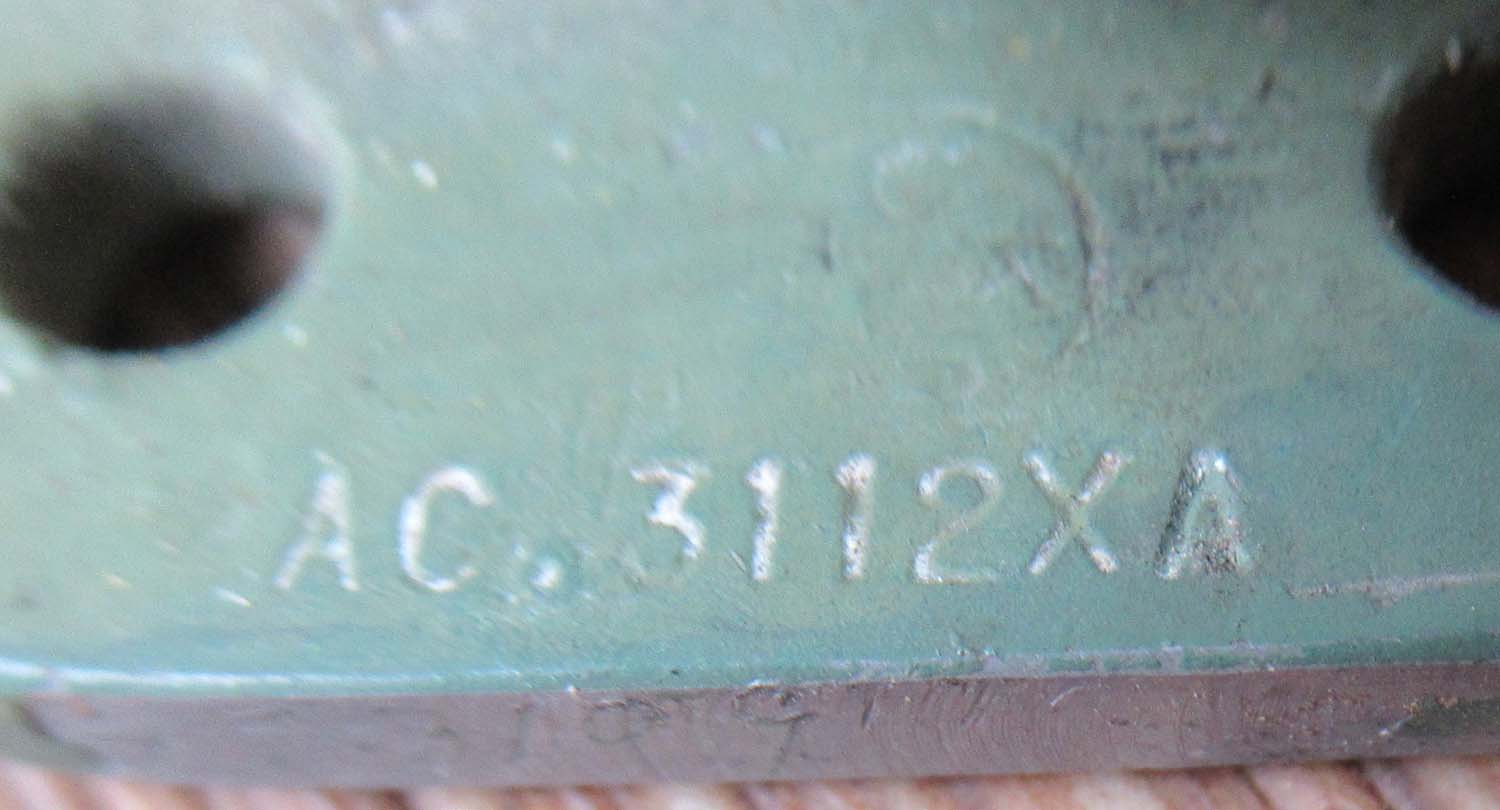
|
Bracket and Cog (Cont Pg 6
No 34)
Here we have a small cog and bracket If you can tell me
what this is would be much appreciated please
contact me.
AC 3112XA
?..310G
Click on
pictures to enlarge
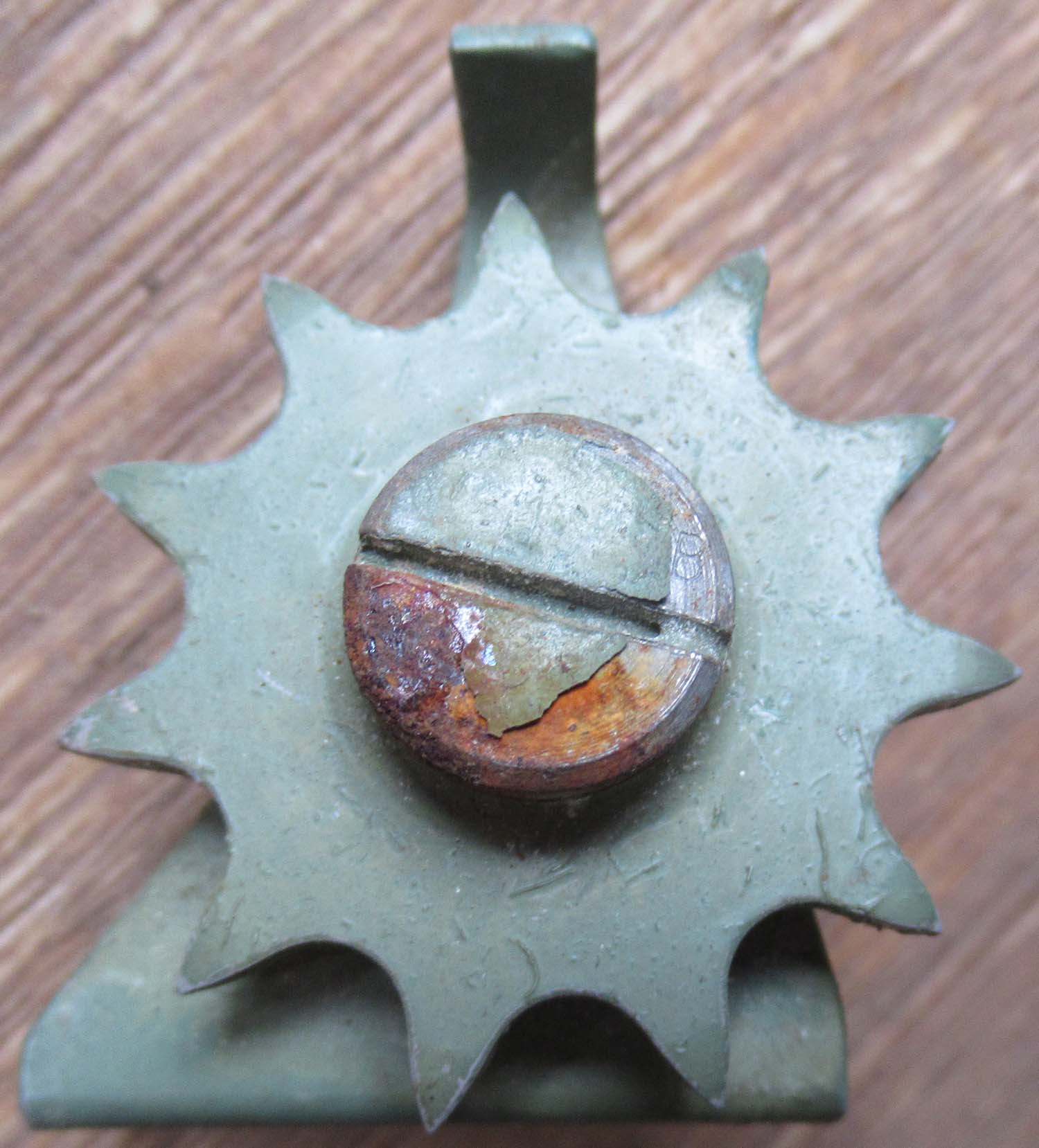
£75


|
|
Click on
pictures to enlarge
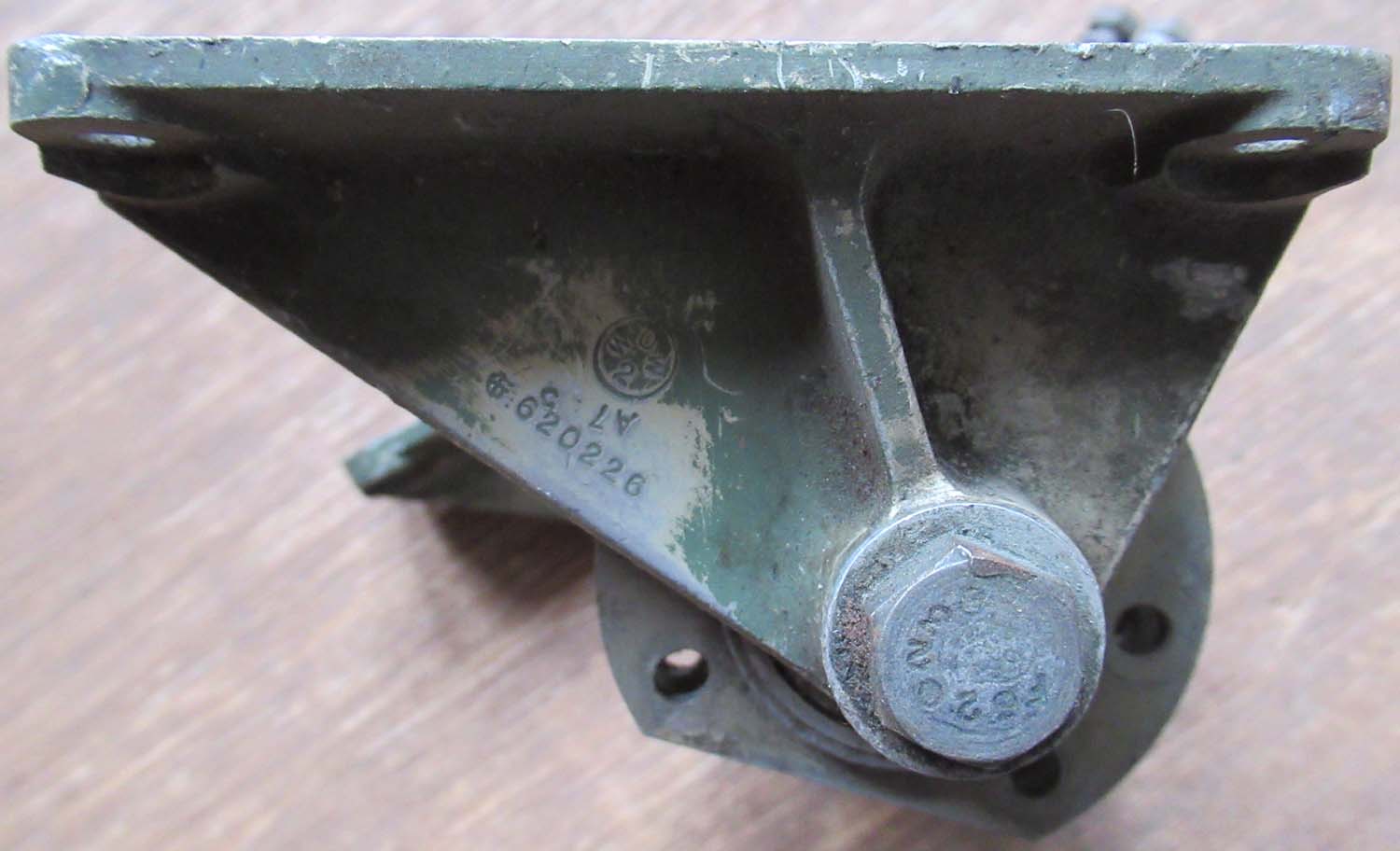
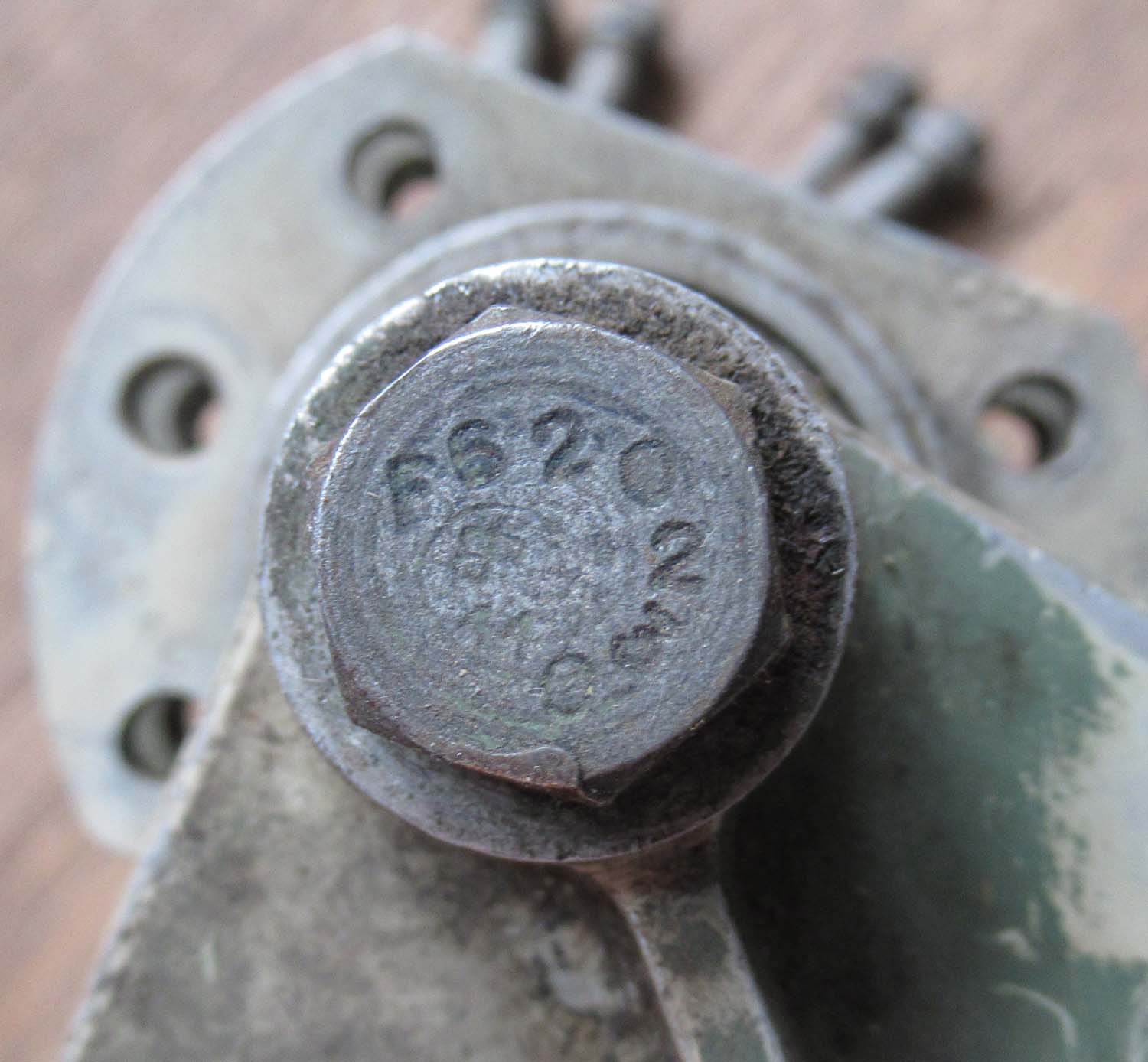
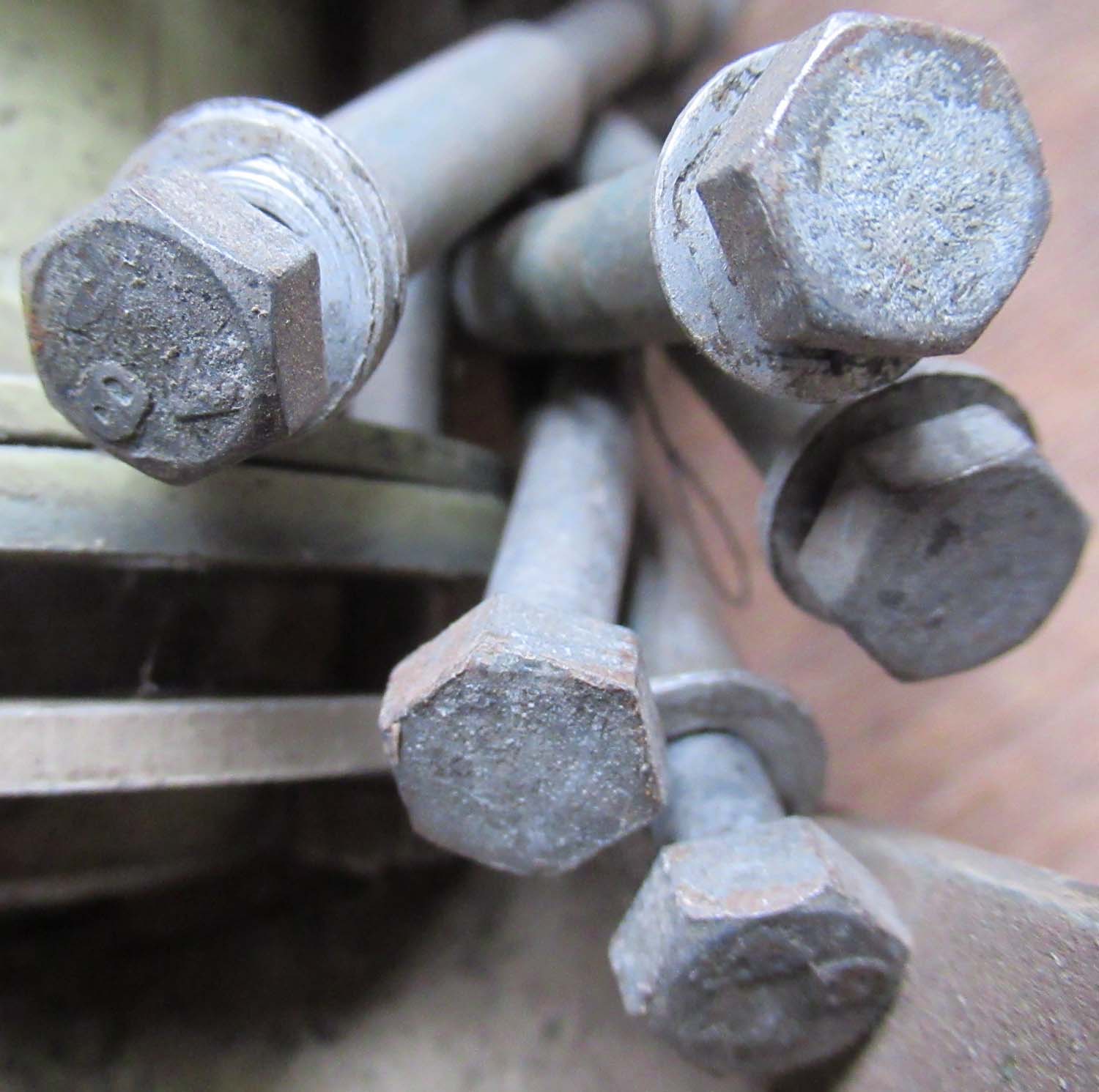
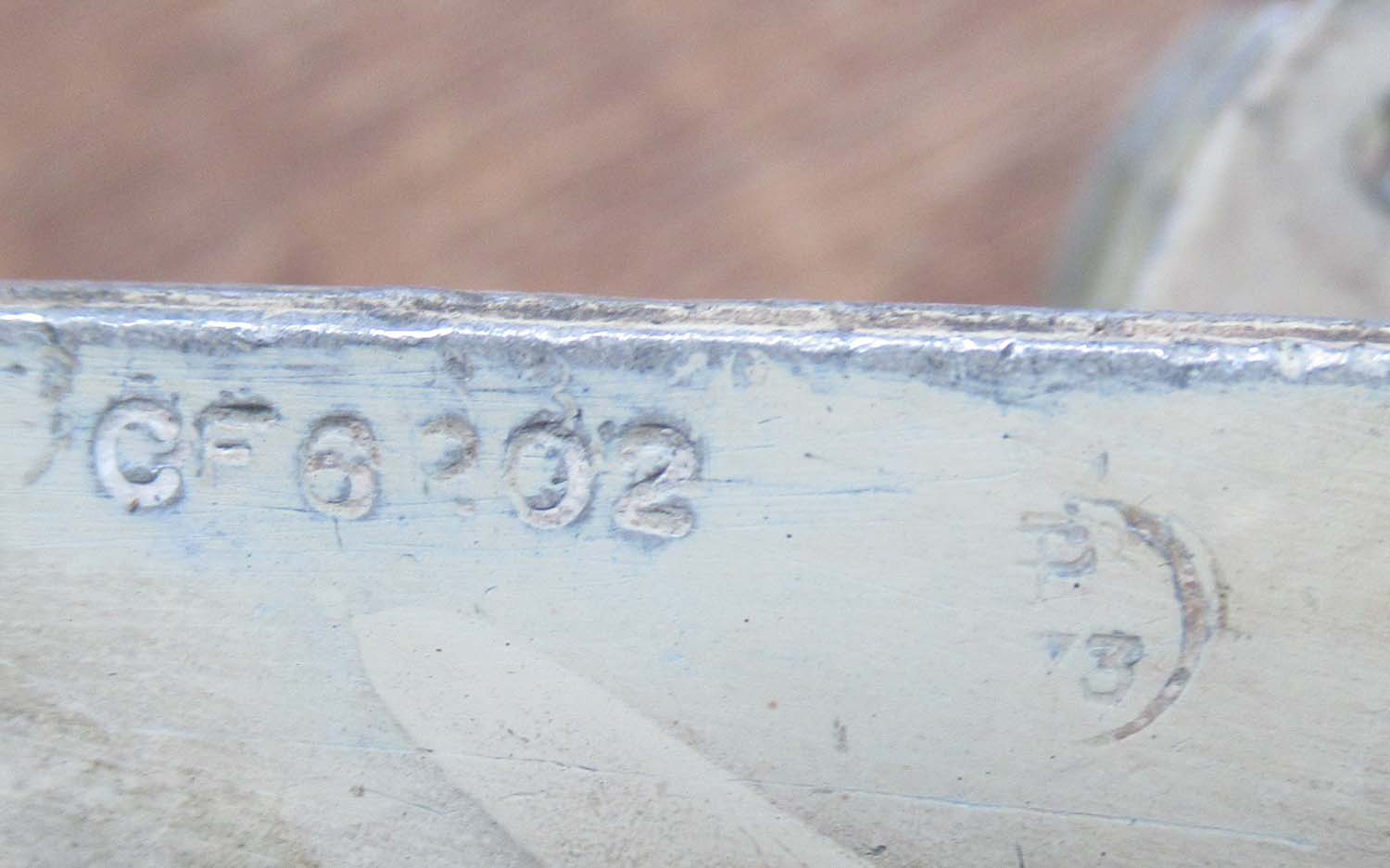
|
Crank (Cont Pg 6
No 33)
Here we have another part, so far unidentified
F620218
620226
CF6202
Click on
pictures to enlarge


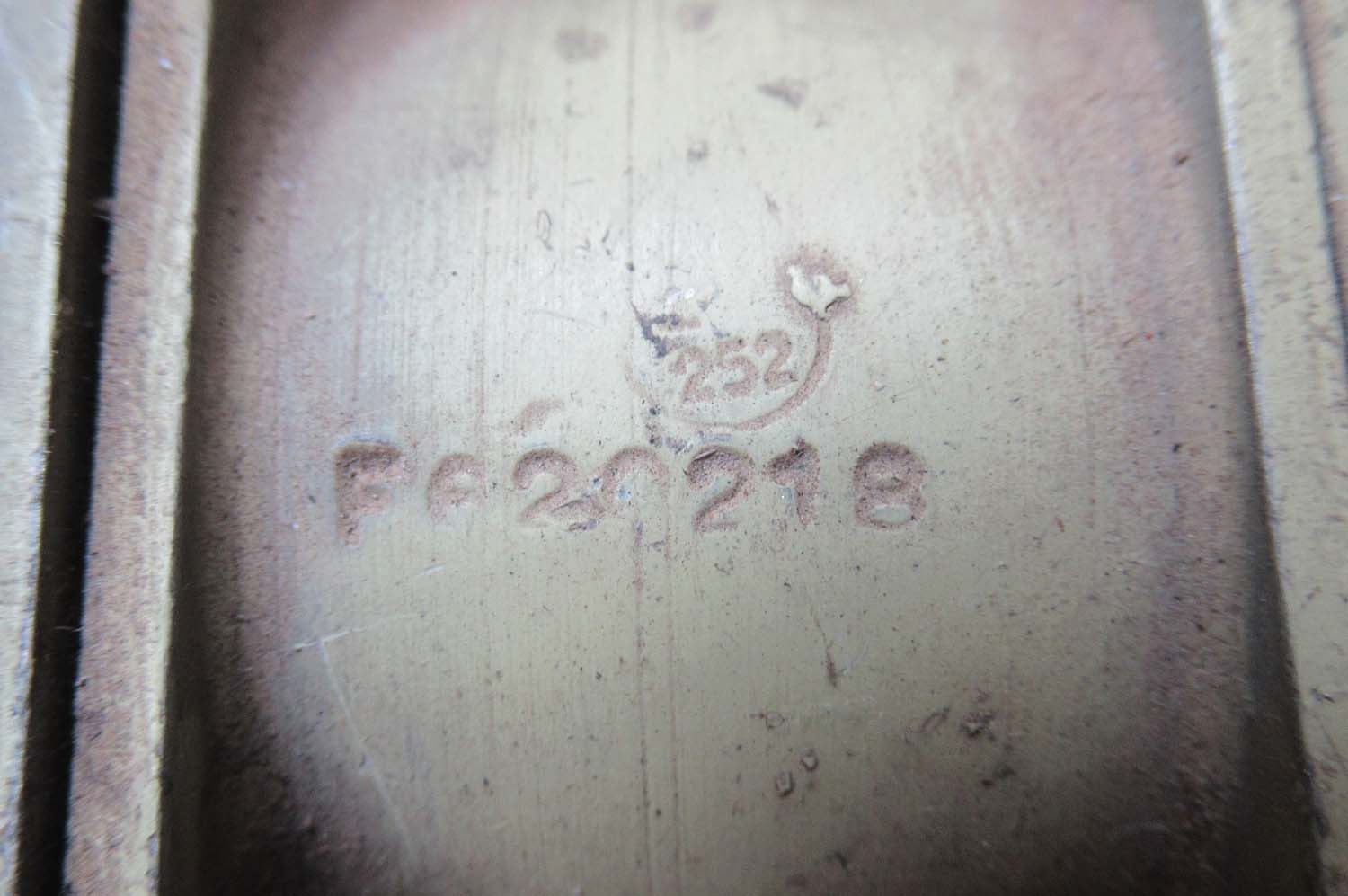
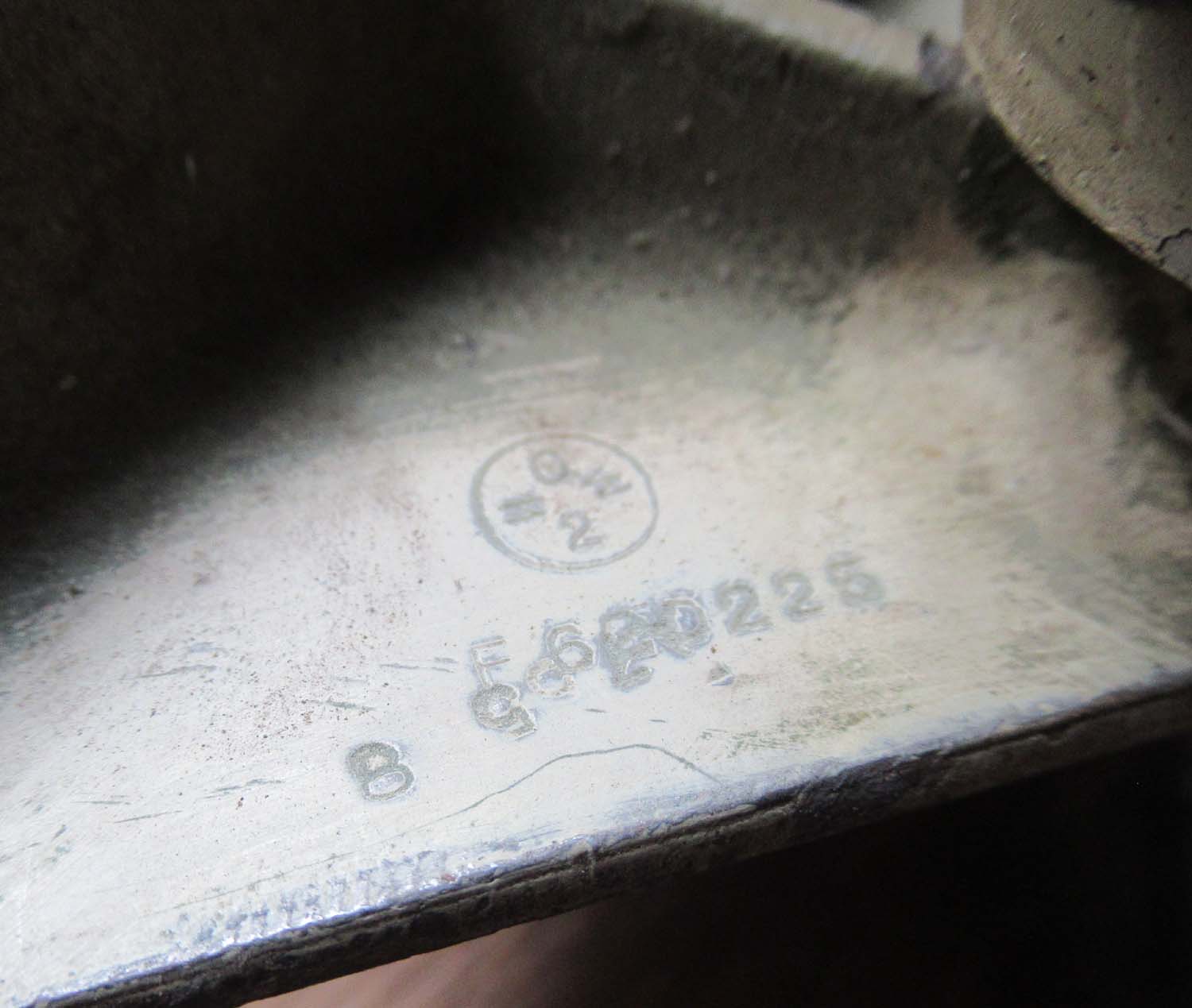
£75


|
|
Click on the
pictures to enlarge them

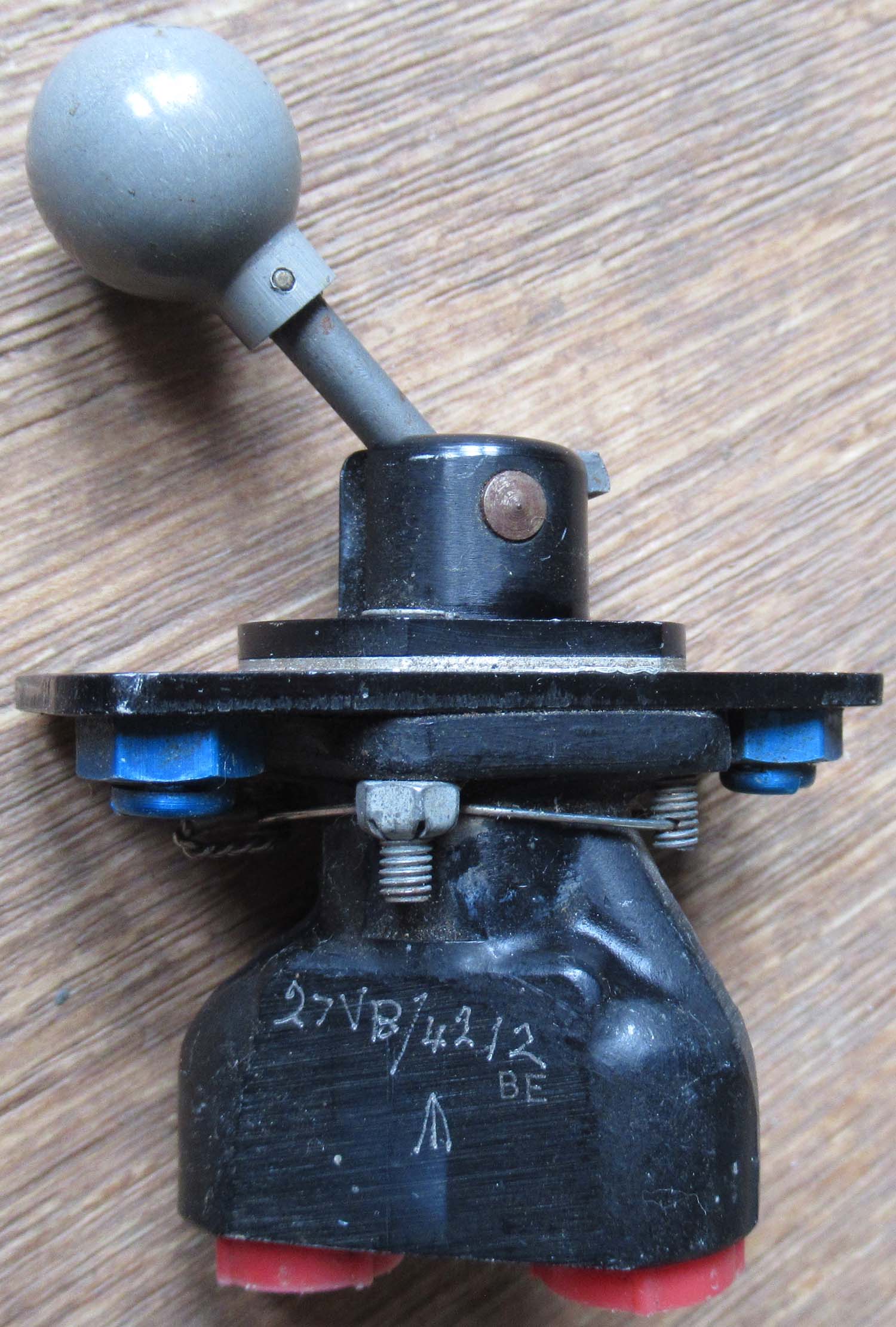
|
Flap lever Hymatic (Cont Pg 6
No 32 )
Unfortunately I have no idea what this switch is from but its
Hydraulic or air and is very similar in design to the Spitfire
flap lever and could possibly be adapted as a viable substitute
in a panel.
Click on the
pictures to enlarge them
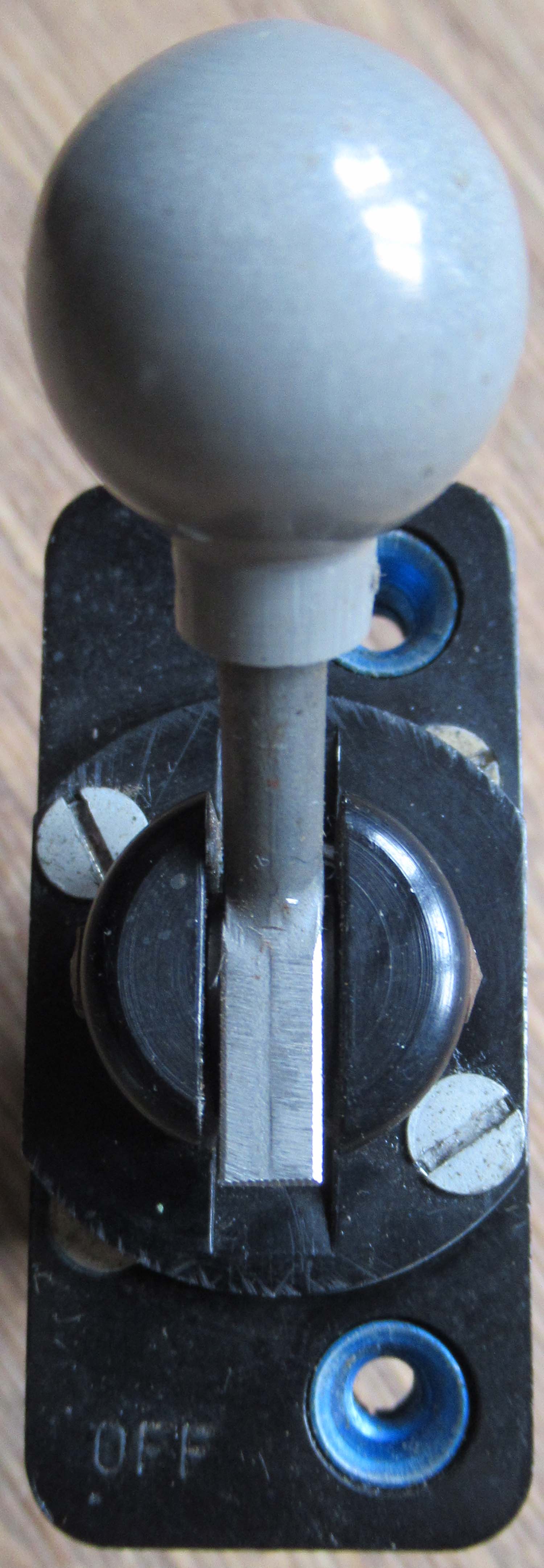


£75


|
|
Click on the pictures to
enlarge
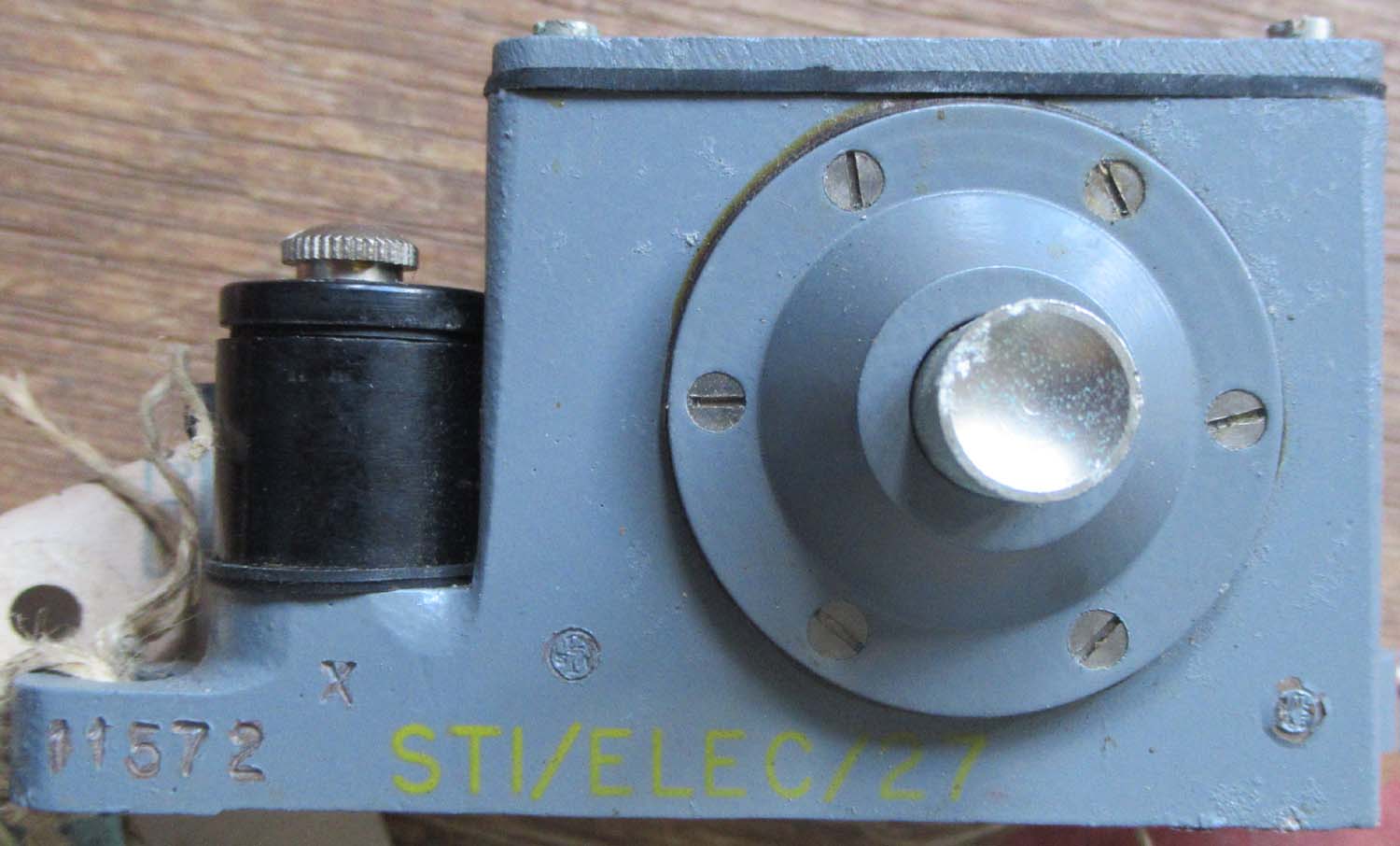
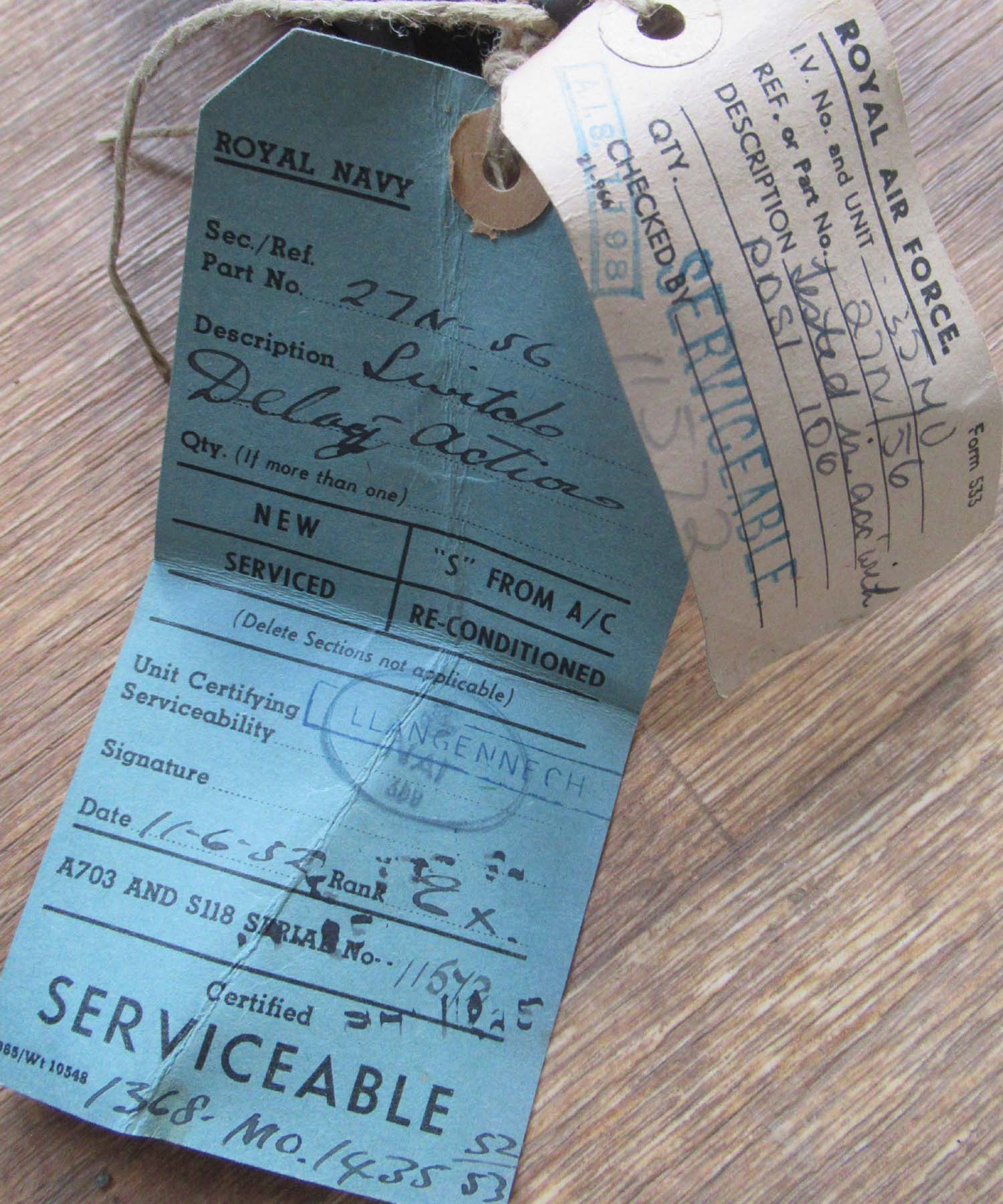
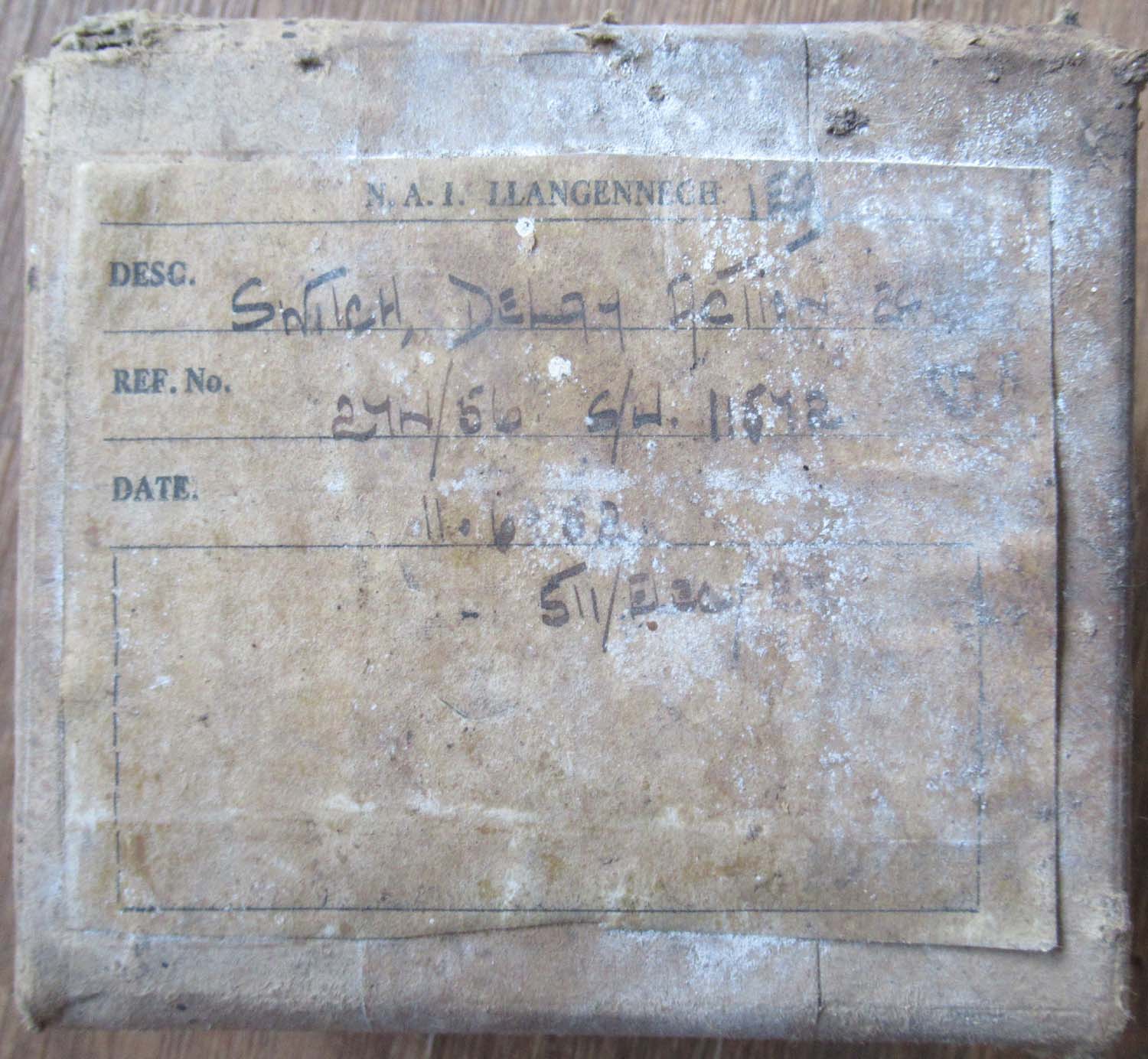 |
Switch Delay Action (Cont pg6 No 31)
Here we have
a 24 volt switch delay action in good condition old new stock, in
original box with tags.
Ref: 27N/56
Click on the pictures to
enlarge
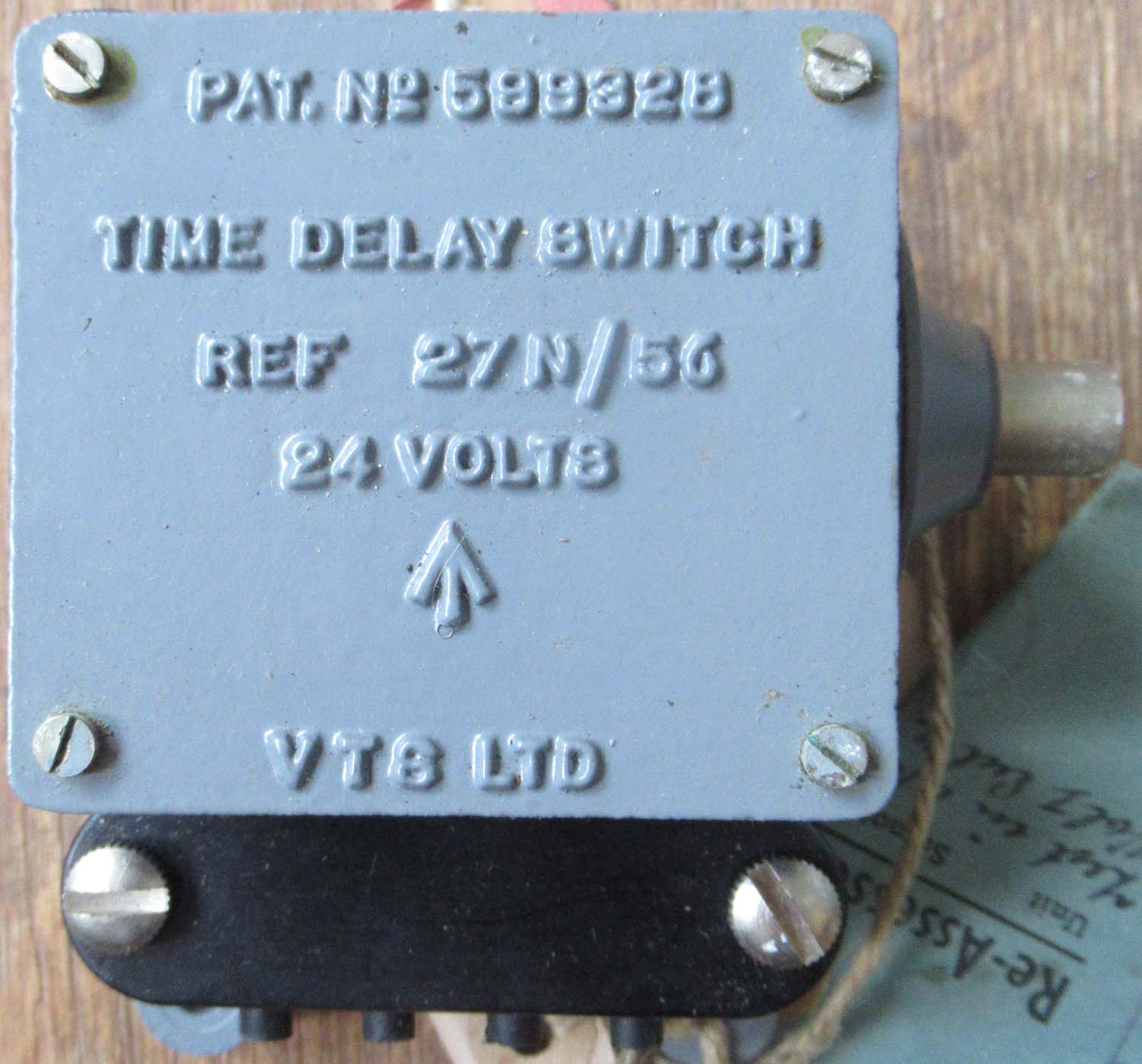
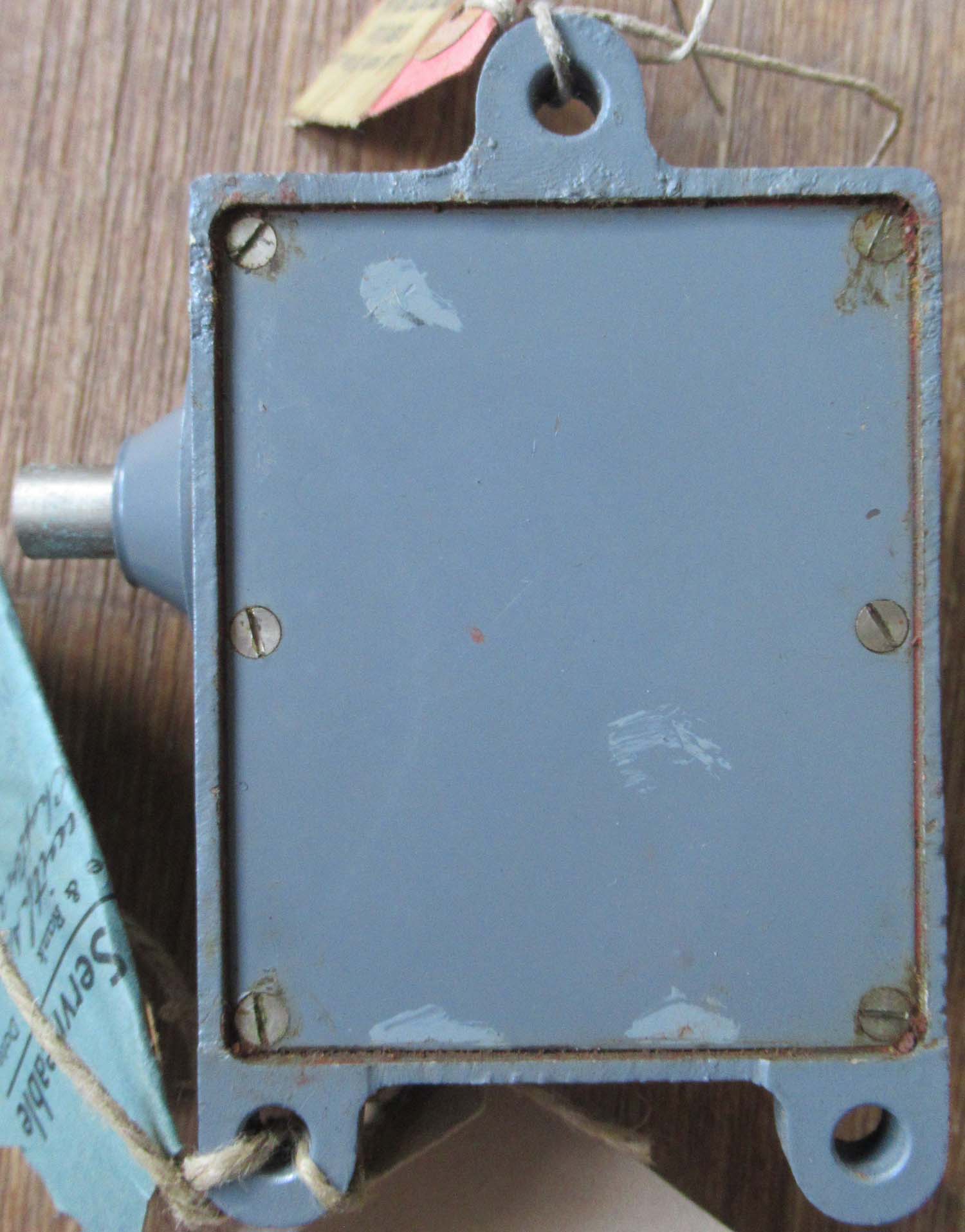

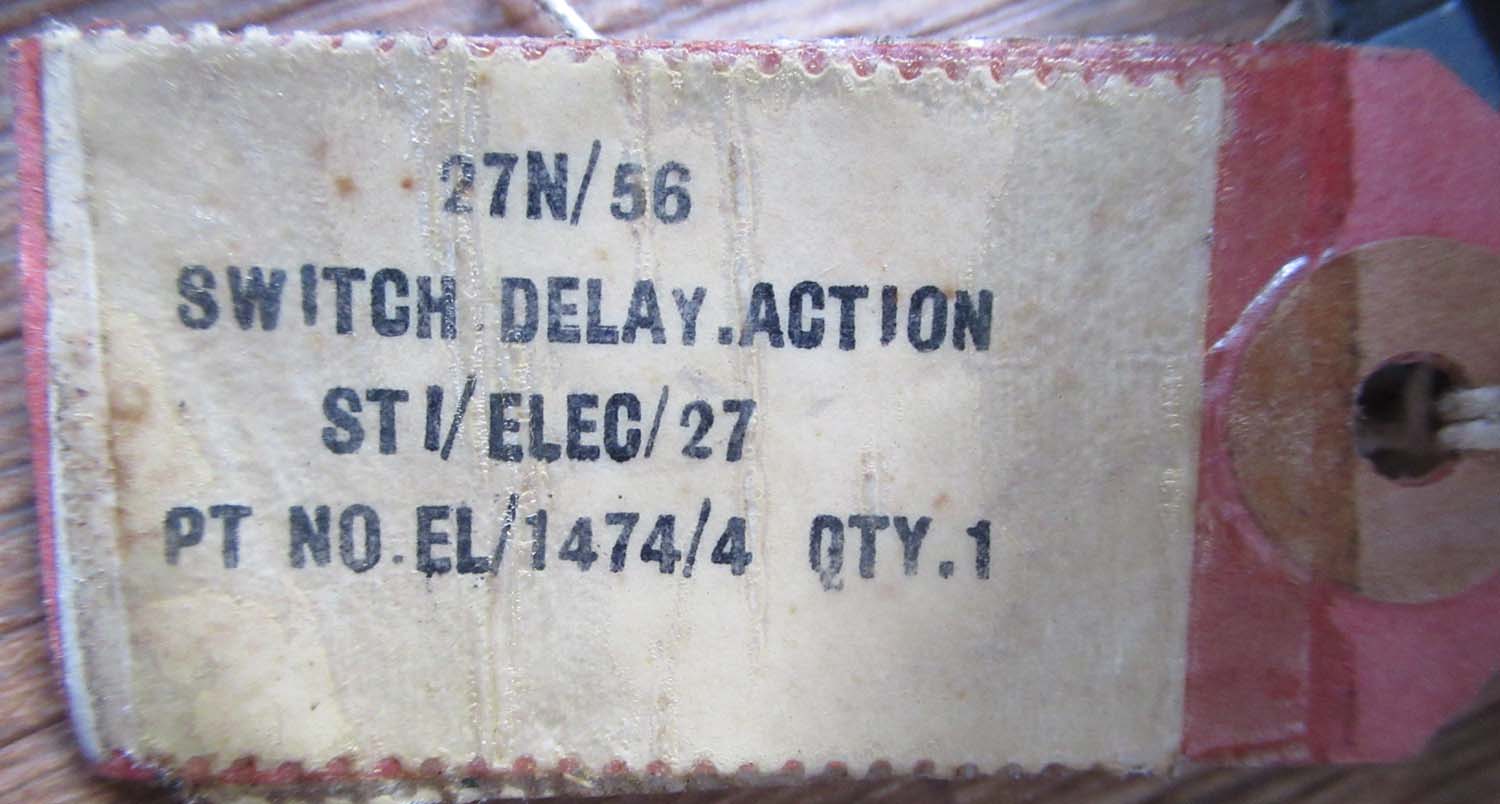
£75


|
|
Click on the pictures to
enlarge
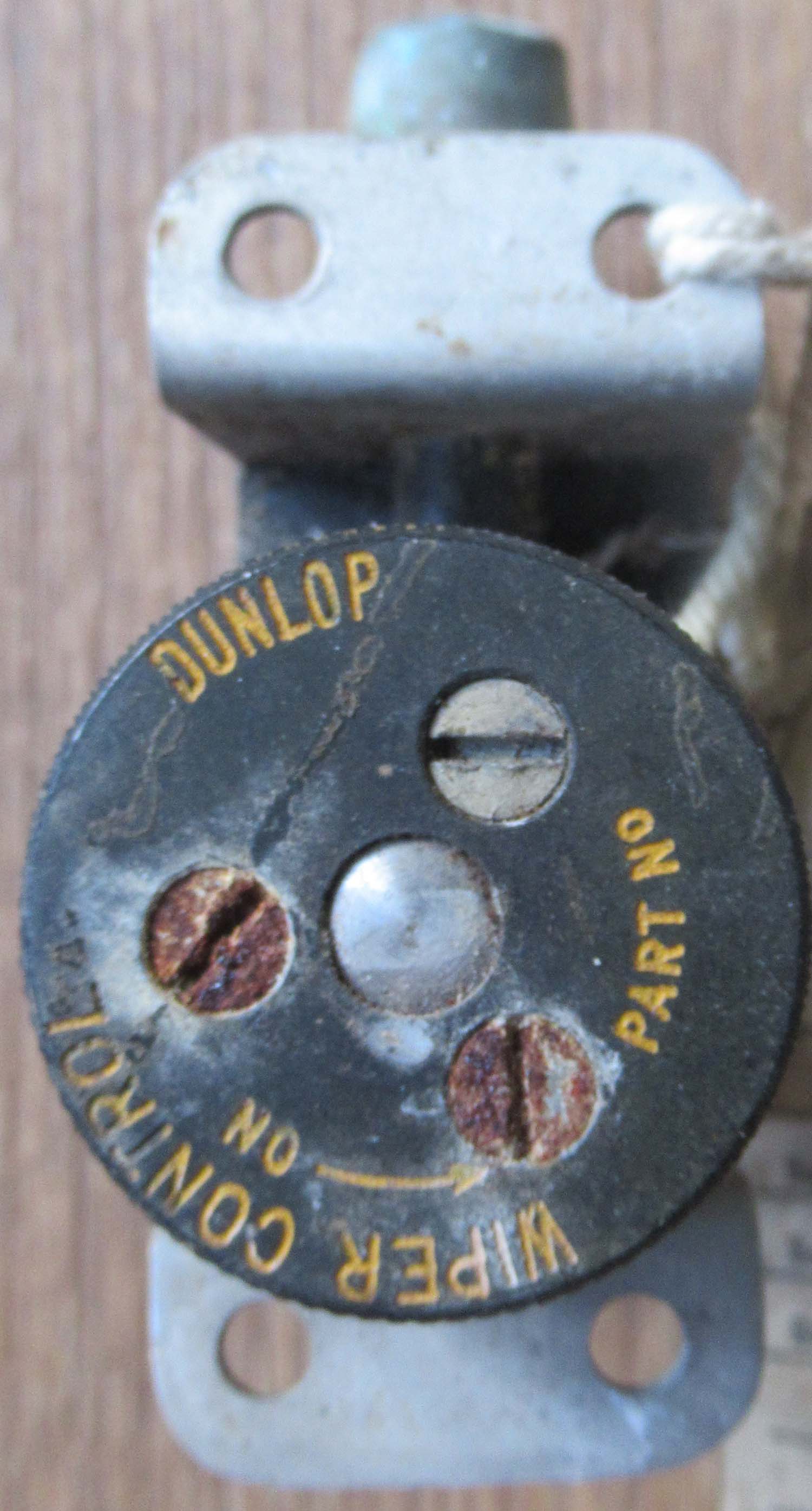
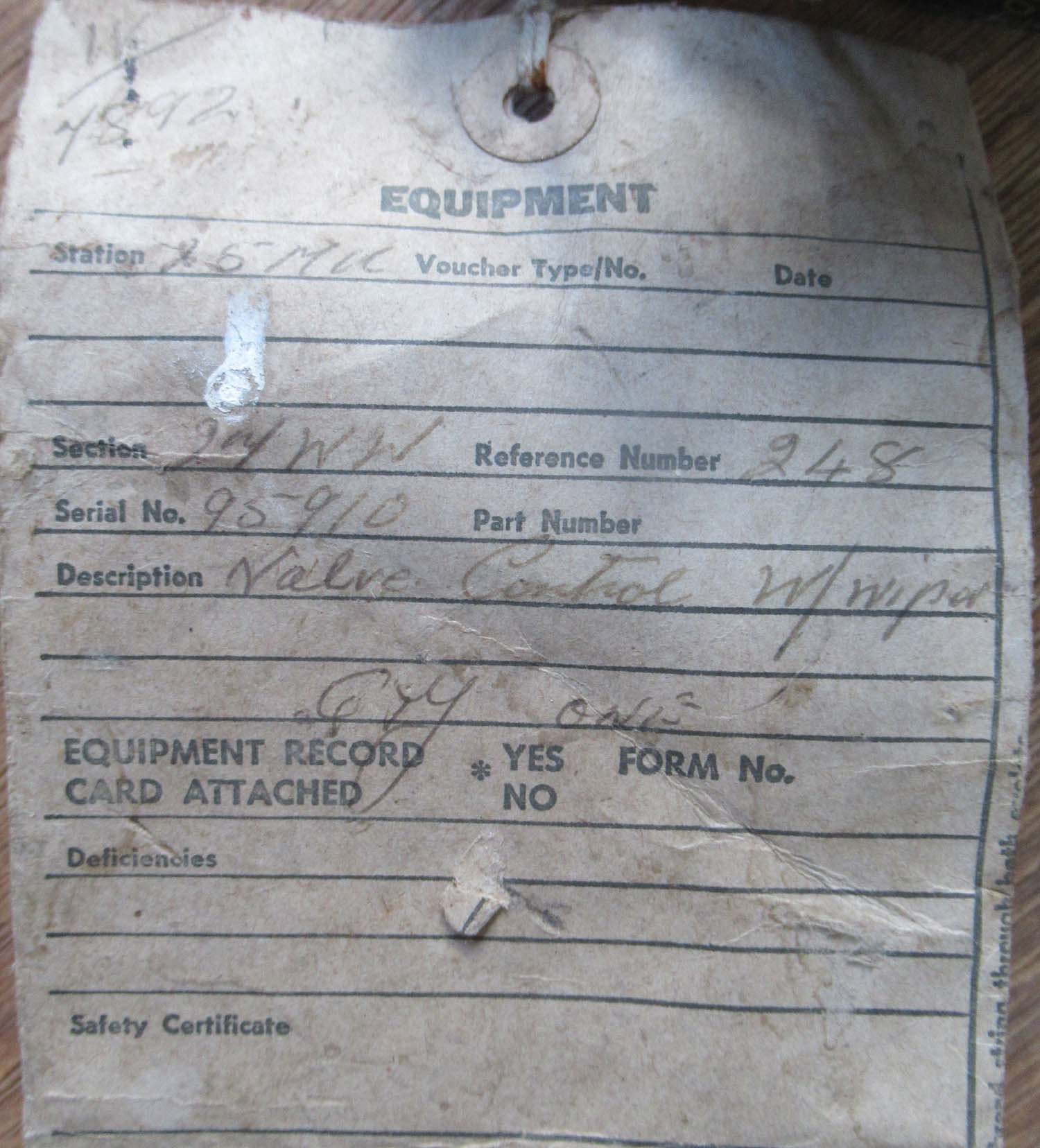 |
Dunlop Valve Wiper Control (Cont pg6 No 30)
Here we have
a Dunlop Valve Wiper Control
No: 95910
Click on the pictures to
enlarge

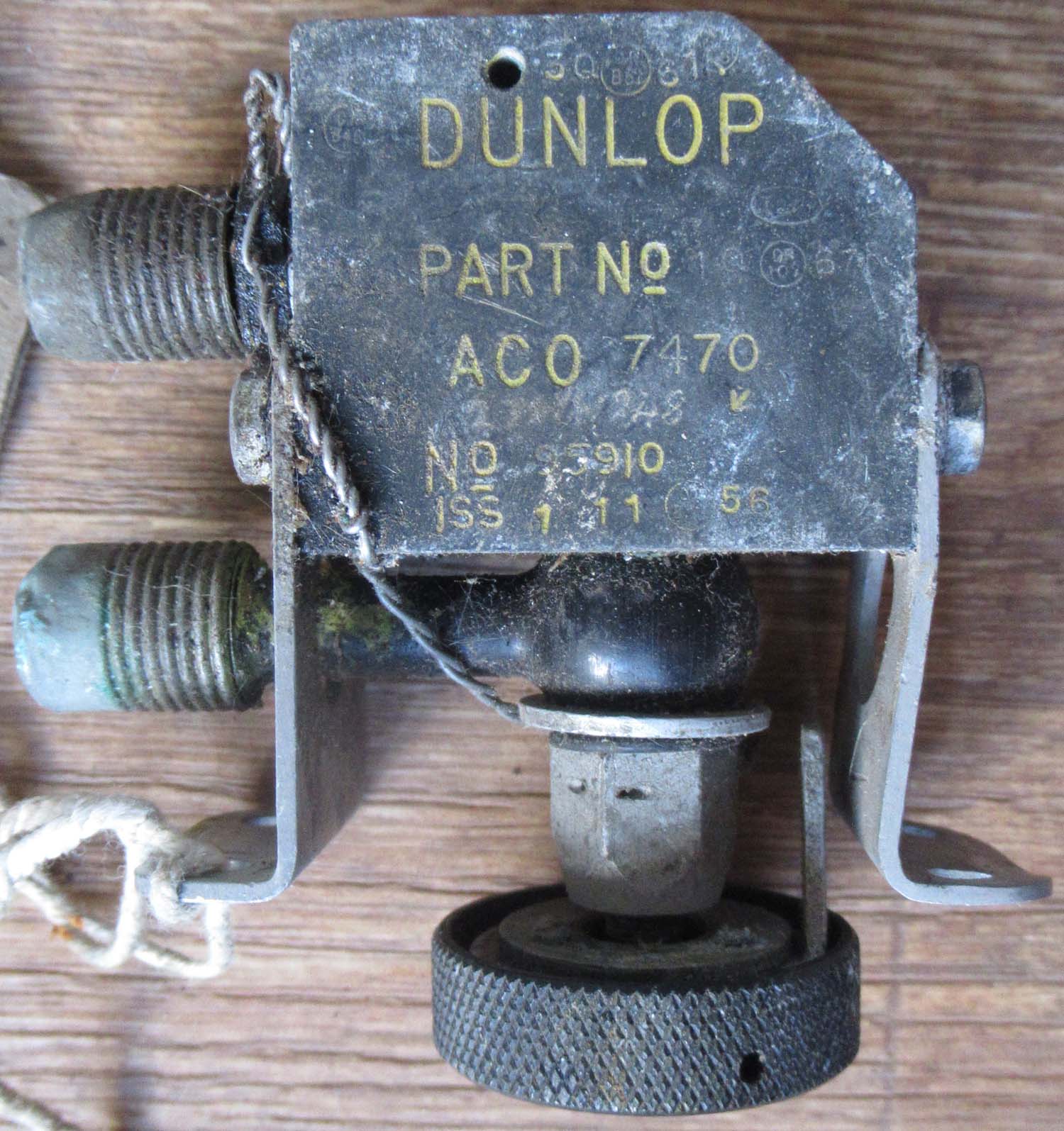
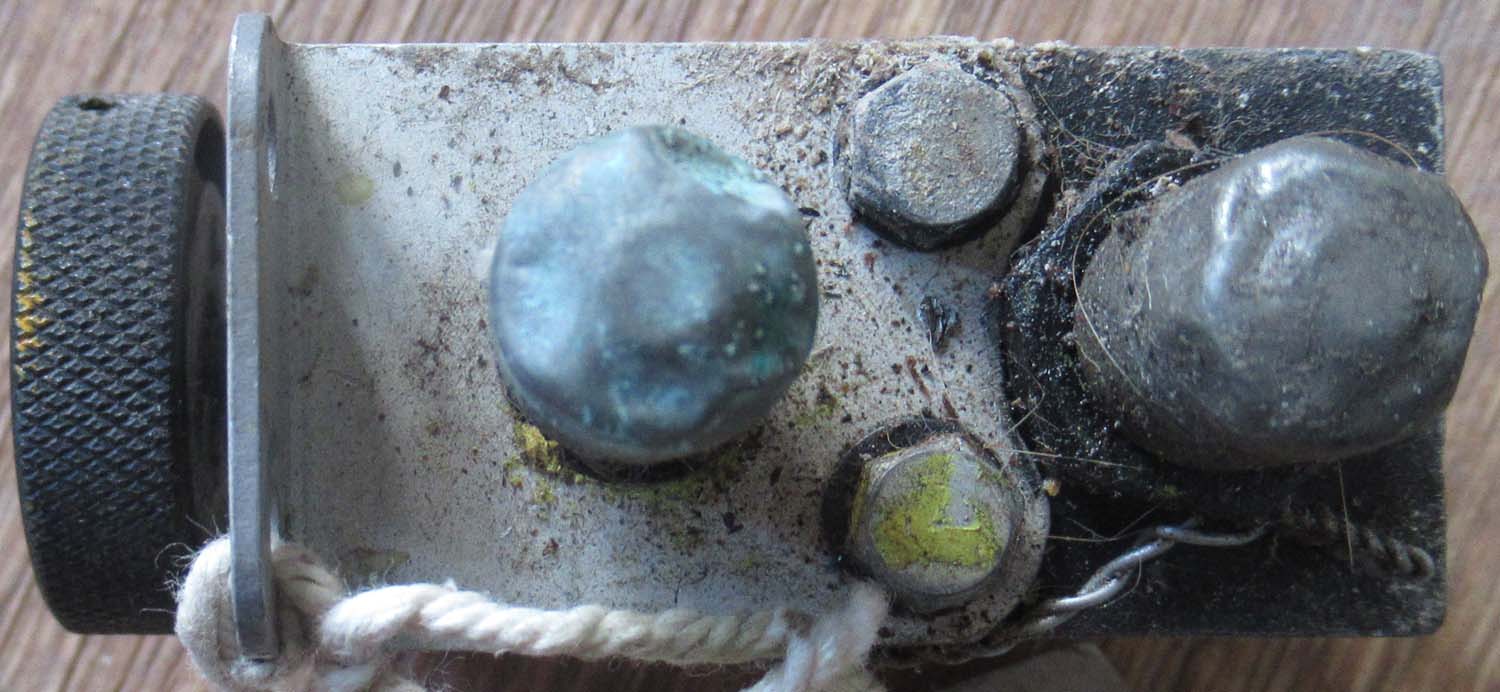
£45


|

Click on the
Pictures to enlarge them

You will
find this part listed in the fuel section
link here
|
Hawker Hurricane Emergency boost control 1 (pg1 fuel)
This is a superb quality
reproduction of the Hurricane emergency boost control, used
to give maximum boost in combat situations the engine could
only withstand a limited time of this before being
destroyed. In twenty years I have never seen an original.
These pieces were fitted with slightly different variations
in colour and we have all three available. the knob
functions as it was originally designed.

Seen in
situ above in the Hurricane cockpit
|
|
Click on the pictures to
enlarge
 |
Harness Release Unit (Cont pg6 No 29)
Here we have
a Harness Release Unit
It Carries
the Assy No: D74285/21
Click on the pictures to
enlarge
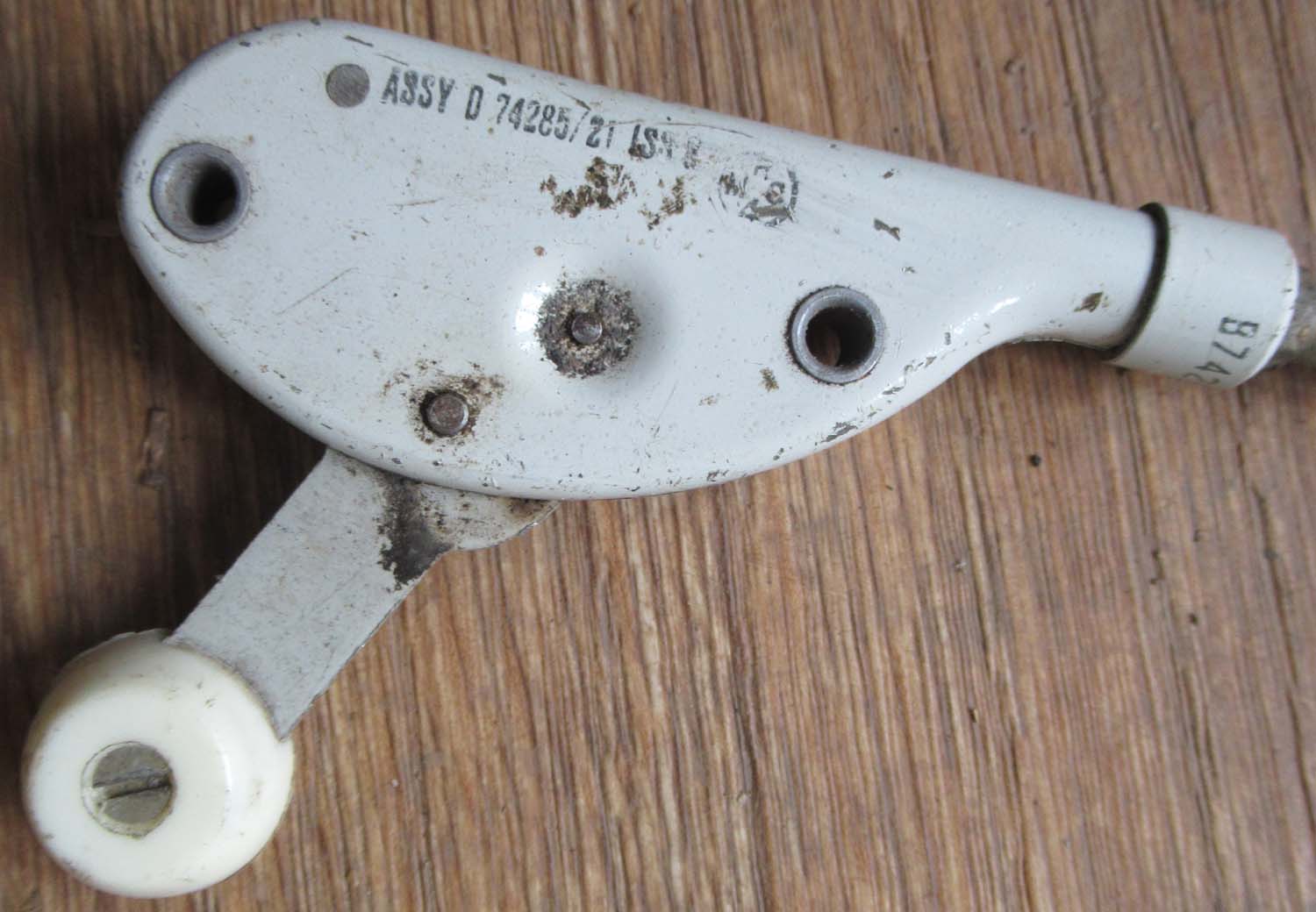

£45


|
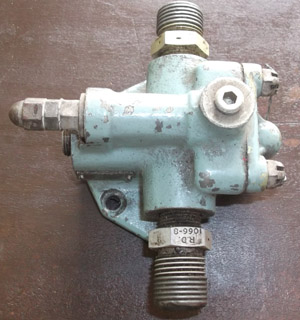
Click on the pictures to
enlarge

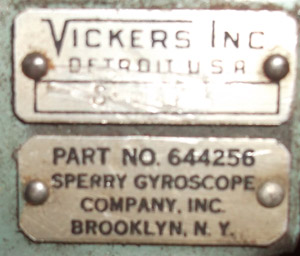
|
Gyropilot Oil Pressure Regulator (Cont pg6 No 28)
Here we have a Gyropilot Oil
Pressure Regulator from a Sperry Autopilot System
Part Number 644256
Sperry Gyroscope Company
Vickers Inc
Sperry Autopilot Systems were fitted
to The B-17 Flying Fortress as well as other USAAF and RAF
Aircraft

The Sperry Corporation developed the original gyroscopic
autopilot in 1912. The device was called a “gyroscopic
stabilizer apparatus,” and its purpose was to improve stability
and control of aircraft. It utilized the inputs from several
other instruments to allow an aircraft to automatically maintain
a desired compass heading and altitude.
The key feature of the gyroscopic stabilizer apparatus was that
it incorporated a gyroscope to regulate the control surfaces of
the aircraft. Lawrence Sperry managed to design a smaller and
lighter version of a gyroscope, and the device was integrated
into an aircraft's hydraulic control system. Using a negative
feedback loop, the gyroscope automatically adjusted the control
surfaces of an aircraft to maintain straight and level flight.
£295


|
|
Click on the pictures to
enlarge

 |
Tempest Control Pulley (Cont pg6 No 27)
Here we have
a Control Pulley as Used in the Hawker Tempest II
This is
Boxed NOS in Original Packaging and Has only been Removed for
Photographing
Airframe
Part Number 26ER-615
Manufactures
Part Number A121093
Click on the pictures to
enlarge

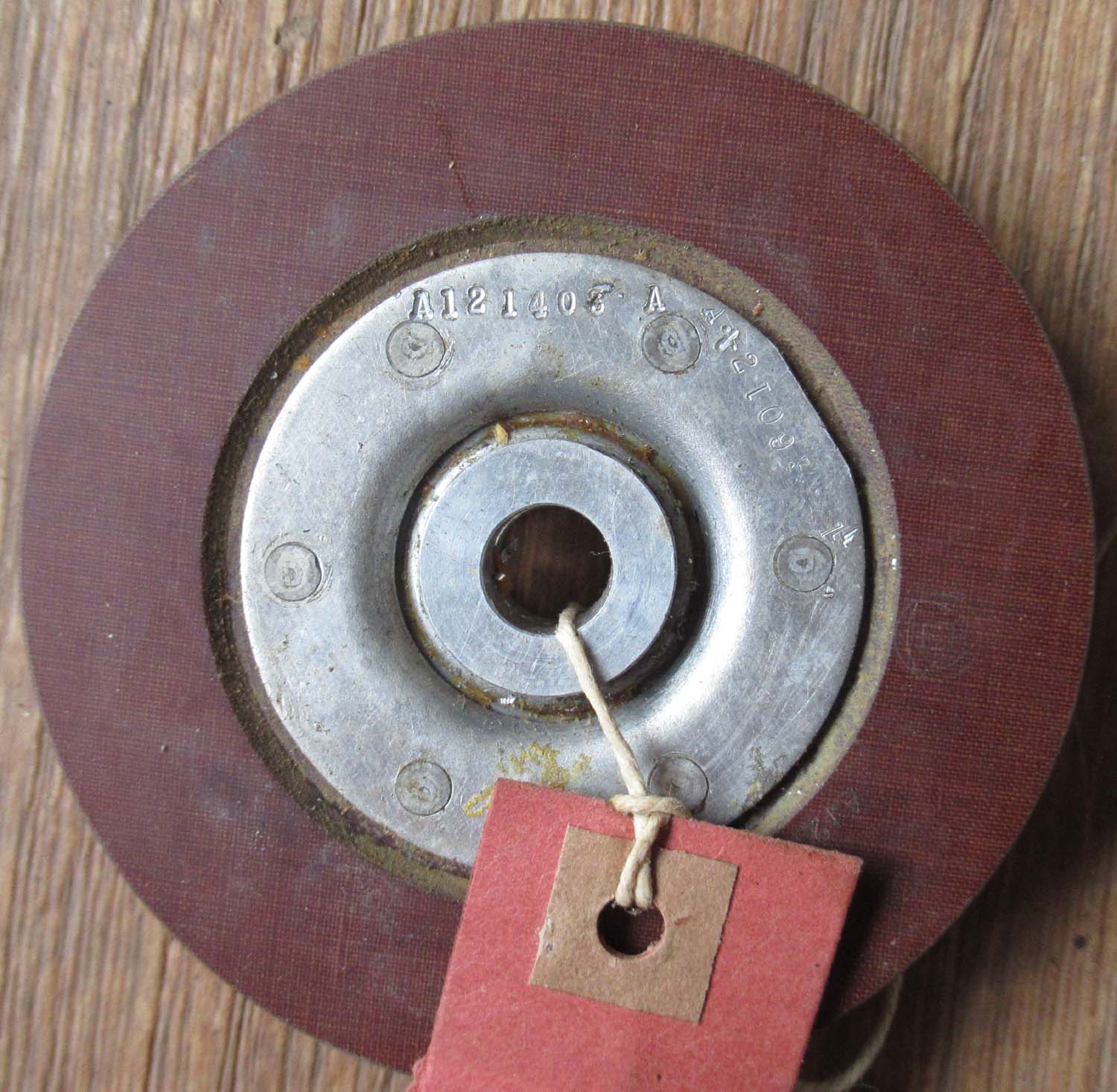
£175


|
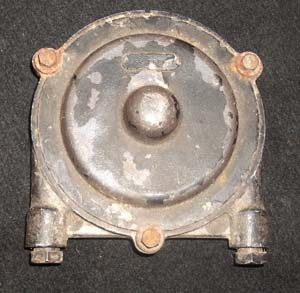
Click on the picture's to
enlarge
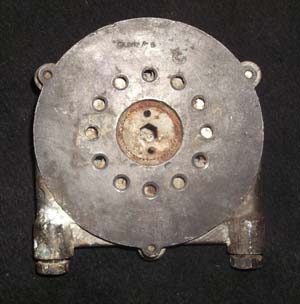
|
Teleflex Control (Cont pg6 No 26)
Here we have
a Teleflex Control
This could
be used in the Bristol Beaufighter as well as other RAF Multi
Engined Bombers
Assy Number
C5216/3
Bristol Beaufighter

£95


|
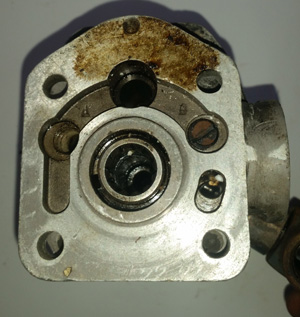
Click on the picture's to
enlarge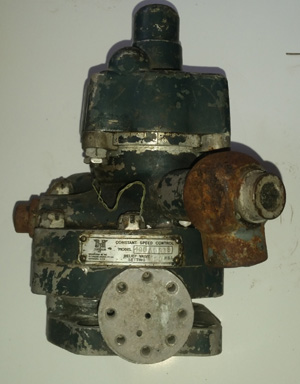
Click on the picture's to
enlarge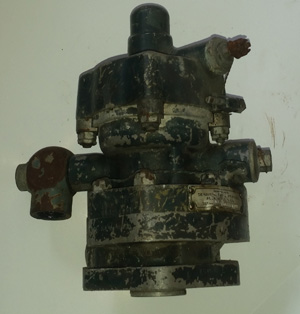
Click on the picture's to
enlarge
|
DH
Australia Constant Speed Control Unit (Cont pg6 No 25)
Here we have
a Constant Speed Control Unit
This was
Manufactured By DeHavilland Australia
Model:
4G8ADH38
Set to 400
PSI

An aircraft
propeller operates as the source of thrust that moves the plane
forward.
When an aircraft is
stationary with the propeller spinning (in calm air), air flows
past the narrow leading edge of the propeller. This is the most
efficient configuration as the drag forces on the propeller are
the lowest. As the airplane starts moving forward, the airflow
begins to push against the front, wider cross section of the
propeller, creating greater drag.
A constant-speed
propeller is able to rotate along the longest axis of the blade
to take a sharper bite of air with respect to the airplane,
allowing the propeller to maintain the most efficient
orientation to the airflow around it. This balances the trade
off that fixed-pitch propellers must make between high take-off
performance and high cruise
performance.

A
constant-speed unit (CSU) or propeller governor is the device
fitted to one of these propellers to automatically change its
pitch so as to attempt to keep engine speed constant.
£195


|
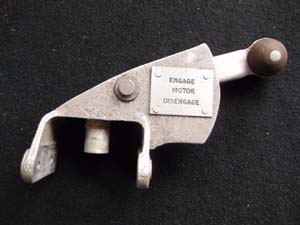
Click on the
Pictures to Enlarge

£125


|
Short Sunderland Motor control (Cont pg6 No 24)
This piece
carries the Sunderland part numbers although I am not 100% sure
of its actual function the Sunderland carried an auxiliary motor
which operated pumps to clear the bilges, as a flying boat as
with all boats it leaked and so it was essential the bilges were
clear before flying.
A nice collectable piece specific to the
Sunderland.
Part Number:
S25E37174
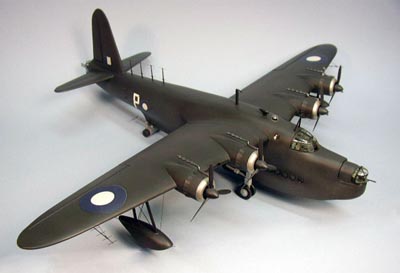
|
|
Click on the
pictures to enlarge them.

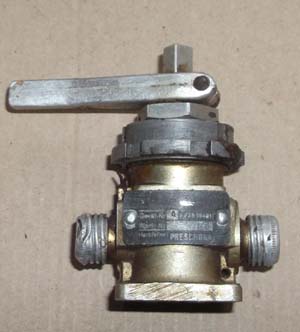
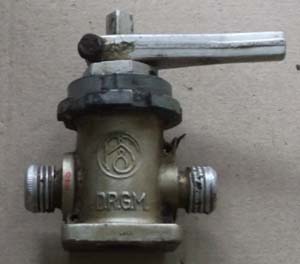 |
BF 109 De Icing switch (Cont
pg6 No 23)
Here is a de icing switch from a BF 109
makes a nice comparison with the British Spitfire version shown
above. In good original condition the lever still turns and the
ends still have their caps. I believe this was also used on the
FW 190 ?.
Seen in situ
below in a BF 109 cockpit click on the picture under to enlarge.

Click on the
pictures to enlarge them.
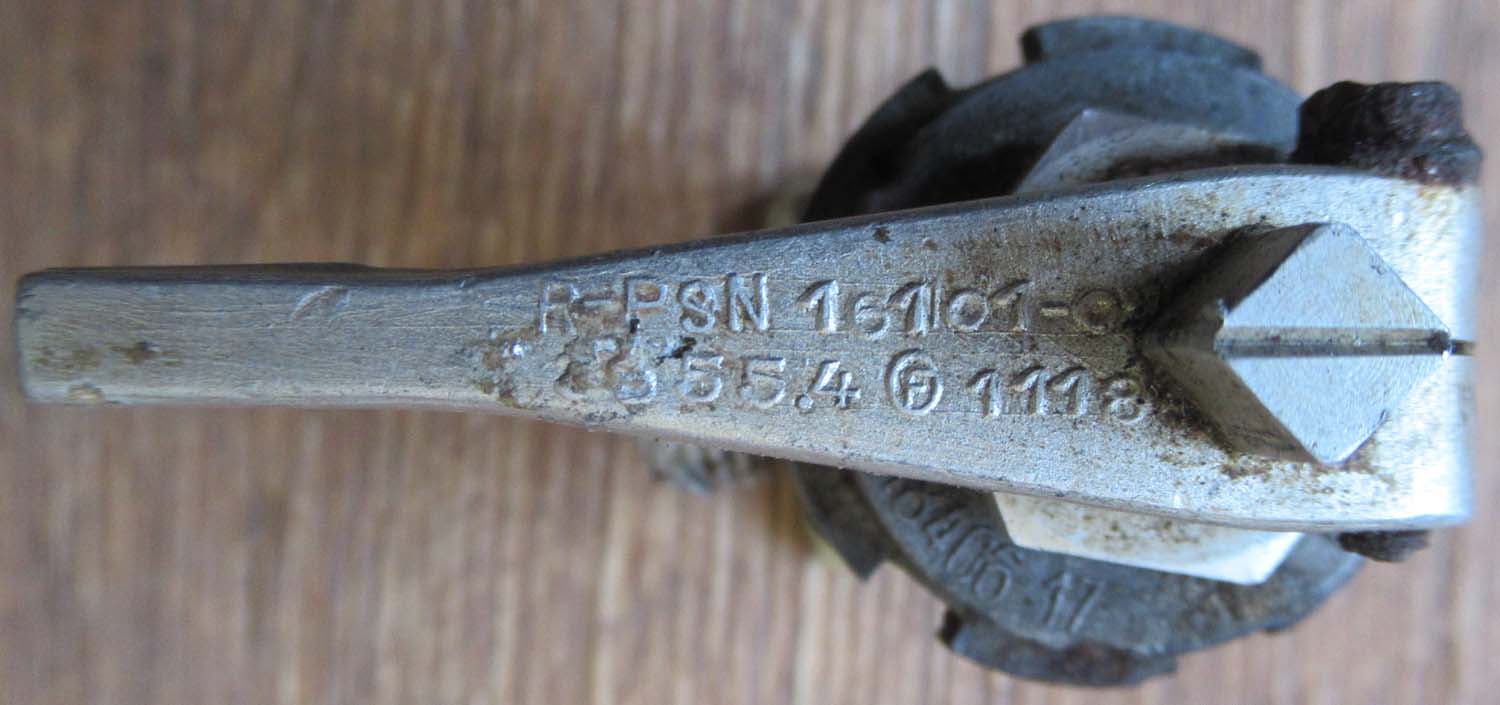
£275


|
|
Click on the
pictures to enlarge them.
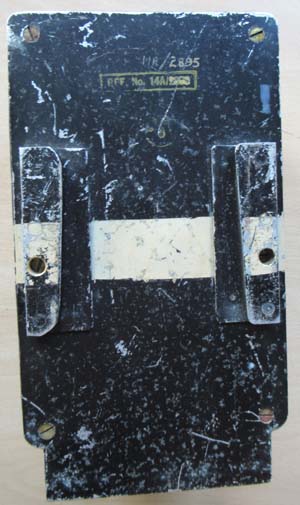
£295


|
Camera control unit (Cont pg6 No 22)
Here is a camera control unit which
operated the camera's for taking pictures of the bombing damage.
Generally used in heavy Bombers but
also in photo recognisance aircraft like the Spitfire and the
Mosquito. In good used condition.
Click on the
pictures to enlarge them.
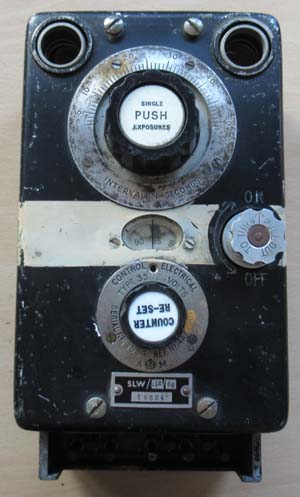
|

Click on
the pictures to enlarge them
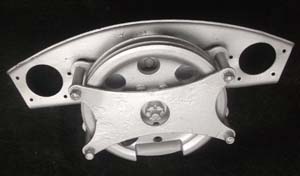

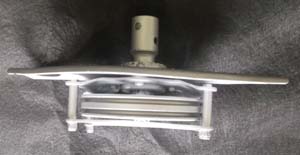
|
Hawker Typhoon
Aileron Control cable drum assembly (Cont pg6 No 20)
Part Number
B.101252.
This is a
Aileron Control Cable Drum Assy in good restored condition
complete with guard plate, support bracket and torque tube
plug-end.
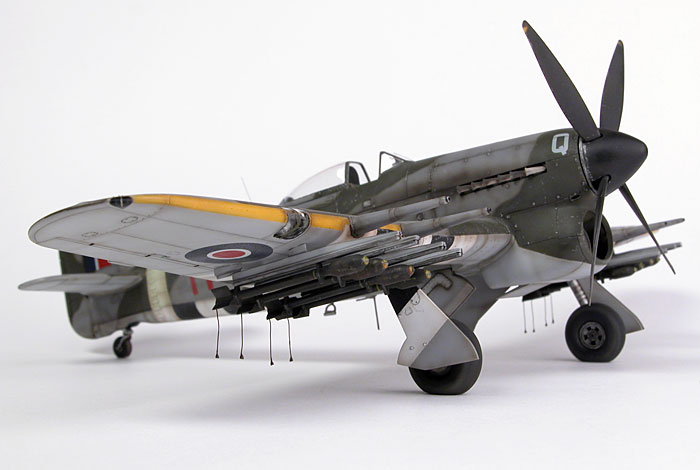
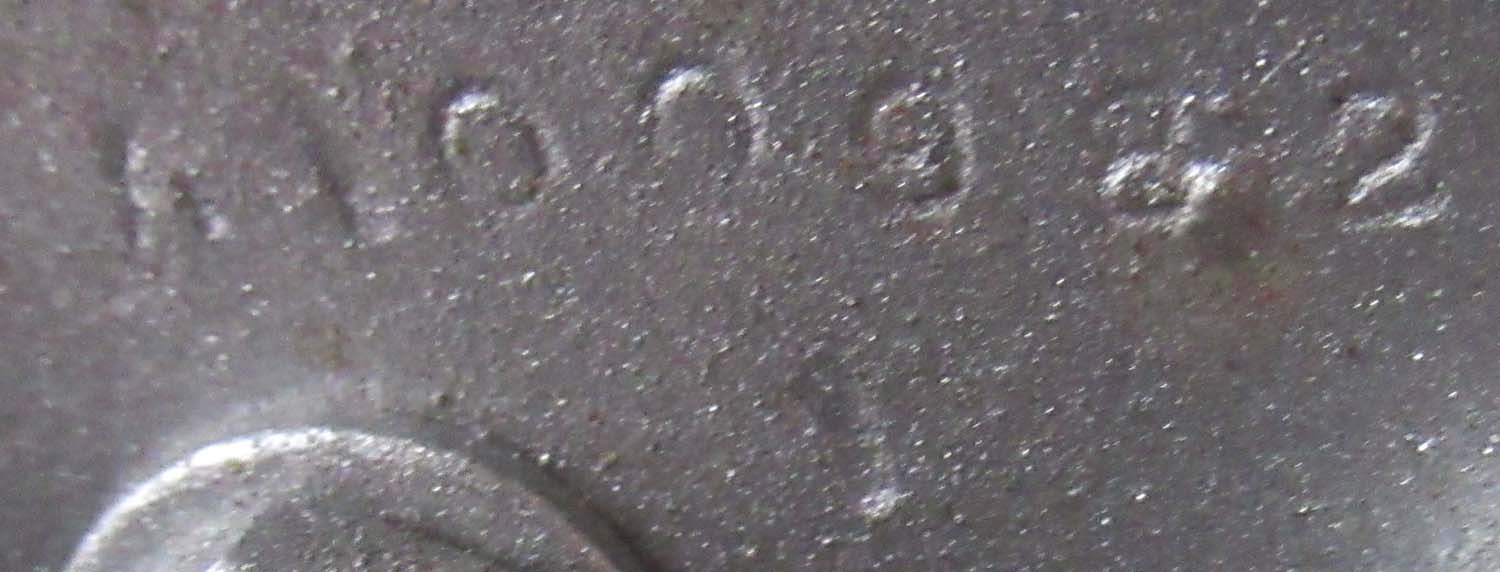

£349


|

Click on
the pictures to enlarge them

 |
Repro Flap Valve for Spitfire panel (Cont
pg6 No 19)
These reproduction flap
levers have been a long time coming. They are a vast
improvement over the cast alloy ones we had previously.
They are perfect copies of
the visible section of the flap valve and are completely
machined from steel by hand.
They contain a piston and a
spring so that they snap crisply up and down as in the
original. I am confident there is not another reproduction
of this quality currently being produced.
They have a nice heavy feel
to them and will complete your Spitfire panel to the highest
standard.
Click on
the pictures to enlarge them

The piece shown above was
used in the MK V onwards
On demand we can also supply
the type used in the early Spitfires which had a more
angular bracket see below.

£295


If you require the early version please
contact me to order.
|

Click on
the pictures to enlarge them

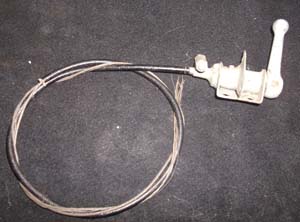 |
Harness Release (Cont
pg6 No 18)
This is a nice little harness
release and cable from a so far unidentified aircraft. It
came with a collection of Beaufighter instruments so
it may be Beaufighter but not sure.
contact me if you have
any further information. The Spitfire had a very
similar lever for releasing the pilots harness in an
emergency bail out situation.
Part numbers C or possibly G 59010dX2
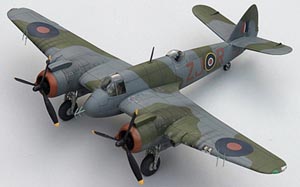
A literal "jack of all
trades", the Beaufighter served as a ground attack fighter,
a night fighter, a torpedo bomber and an anti-shipping
strike aircraft. It served in Europe, the Middle East and
the Far East Theatres. It's heavy armament (the MK.VI
carried six wing-mounted .303 calibre machine guns and four
fuselage mounted 20mm cannons as well as eight 90lb. rockets
under the wing) and long range made it a devastating weapon
wherever and however it was deployed. The Italians called it
"il flagello di Dio", which meant the "Scourge of God" and
the Japanese referred to it as the "Whispering Death". It
obviously had a profound impact on it's opponents
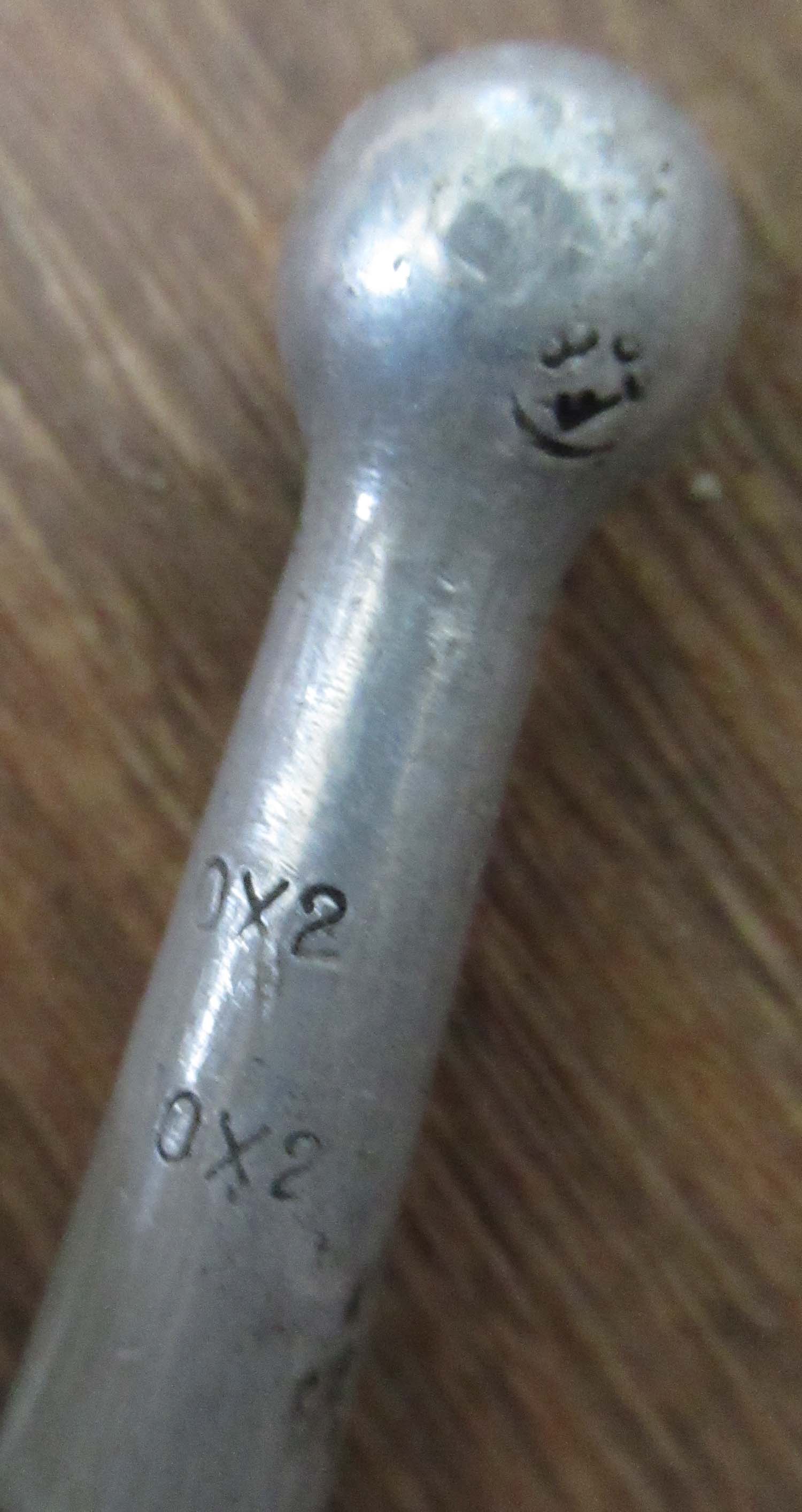

£250


|

Click on
the pictures to enlarge them
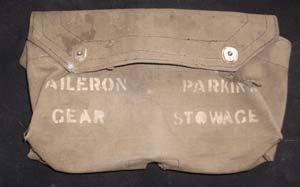
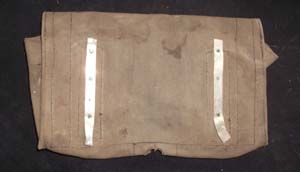

£399


|
Halifax Aileron parking brake (Cont
pg6 No 17) This is a really nice
piece of kit complete with its original stowage bag. It is
for locking the control column to the pilots seat when the
aircraft is on the ground to prevent damage to the ailerons.
It would have
been stored on board when not in use hence the brackets on
the bag.
This has now been
indentified as Halifax. The quality stamp is EEP. this is the code
letter for English Electric Preston.
The 57 Part Number Denotes
Halifax Mk.1
Click on the
picture's under to enlarge part number

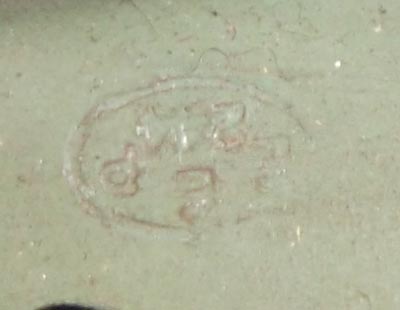
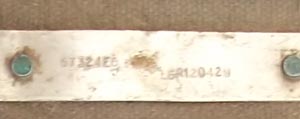
In 1938 English
Electric became a 'shadow' aircraft manufacturer, able to
build other companies designs for the war effort. Preston
was chosen as the aircraft factory and an airfield at
Samlesbury was built. 80 aircraft a month were built at the
peak during 1944.
During the war production was spread
across other sites in Preston to protect it in case of
attack. It appears the Germans weren't aware of what the
factory built.
A successful run of
5000 Hampden, Halifax and Vampires led to the design of the
Canberra and Lightning

|
|
Click on the
pictures to enlarge them

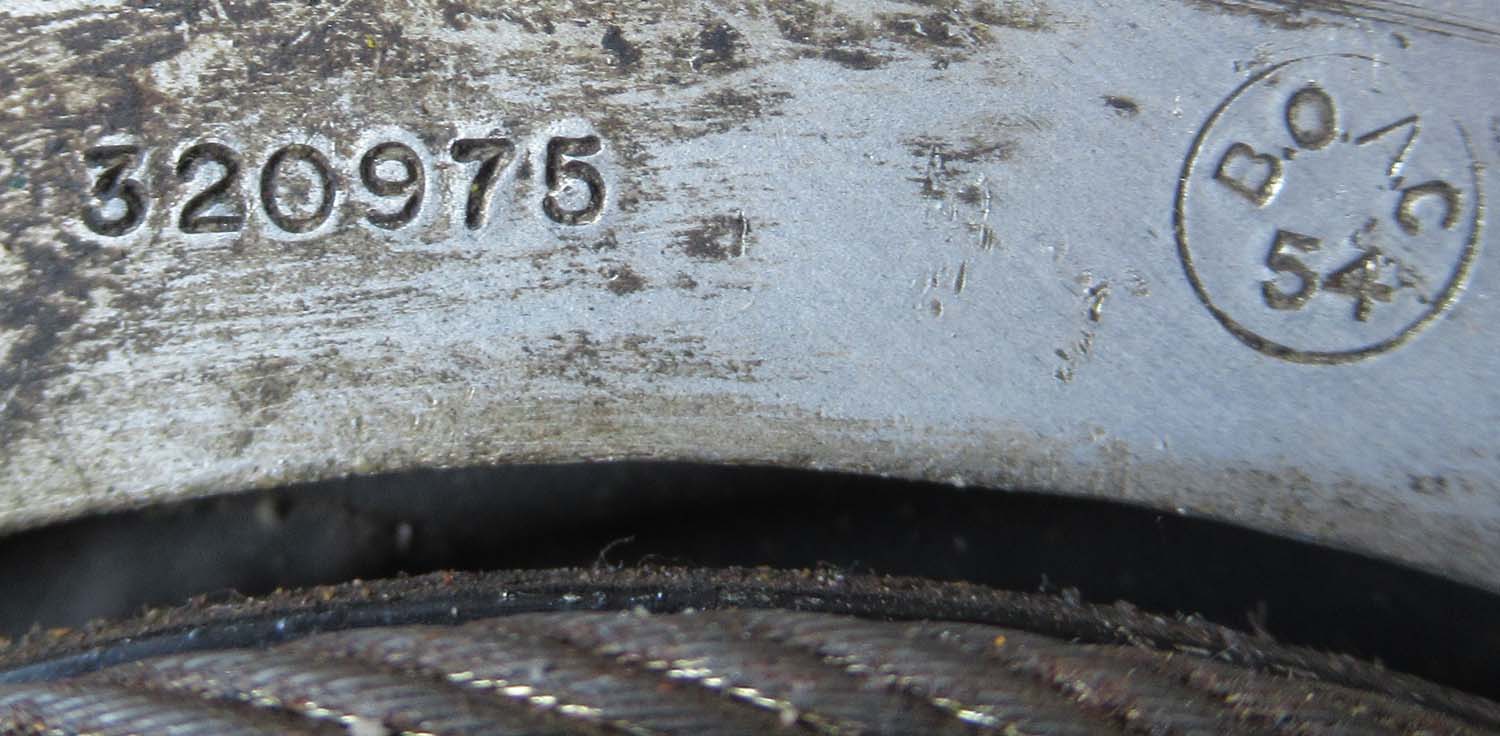
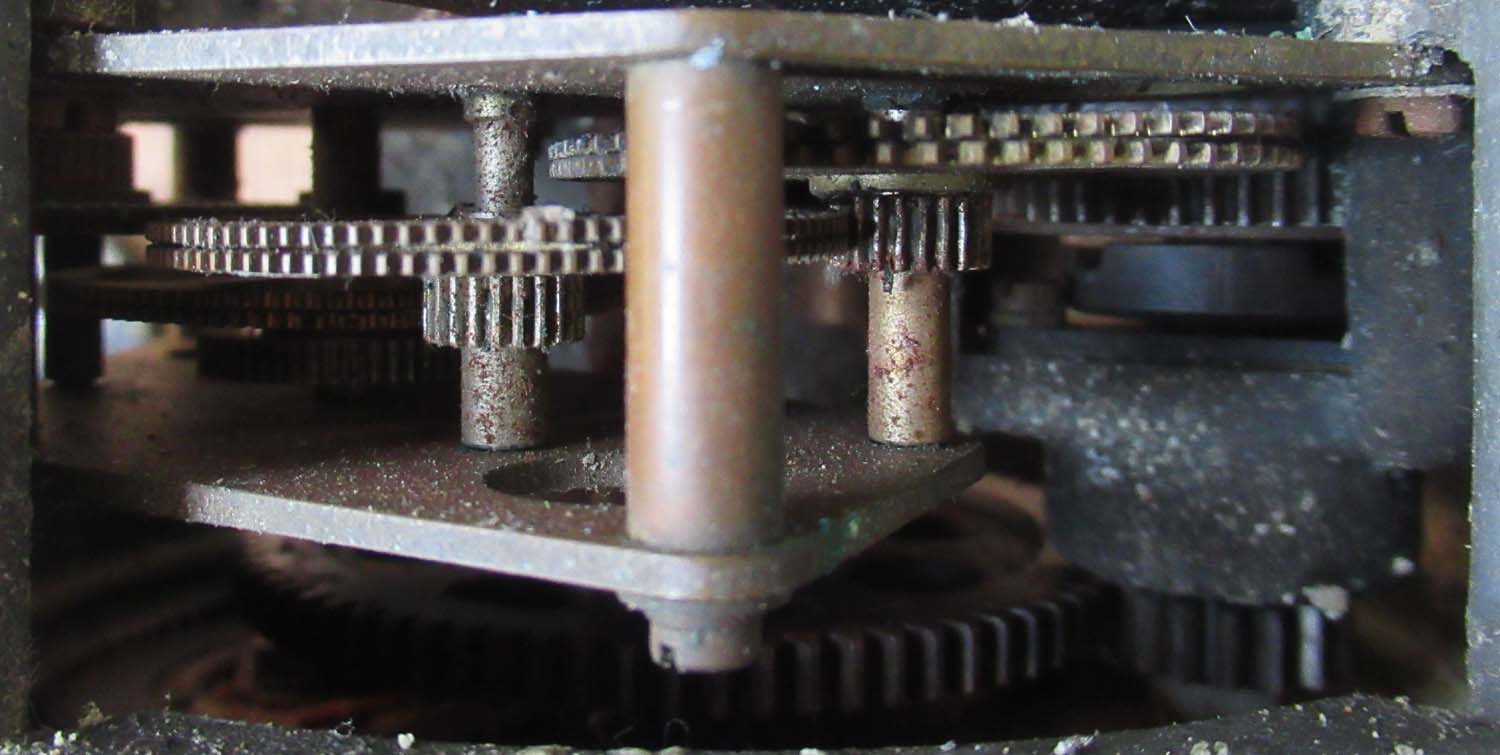
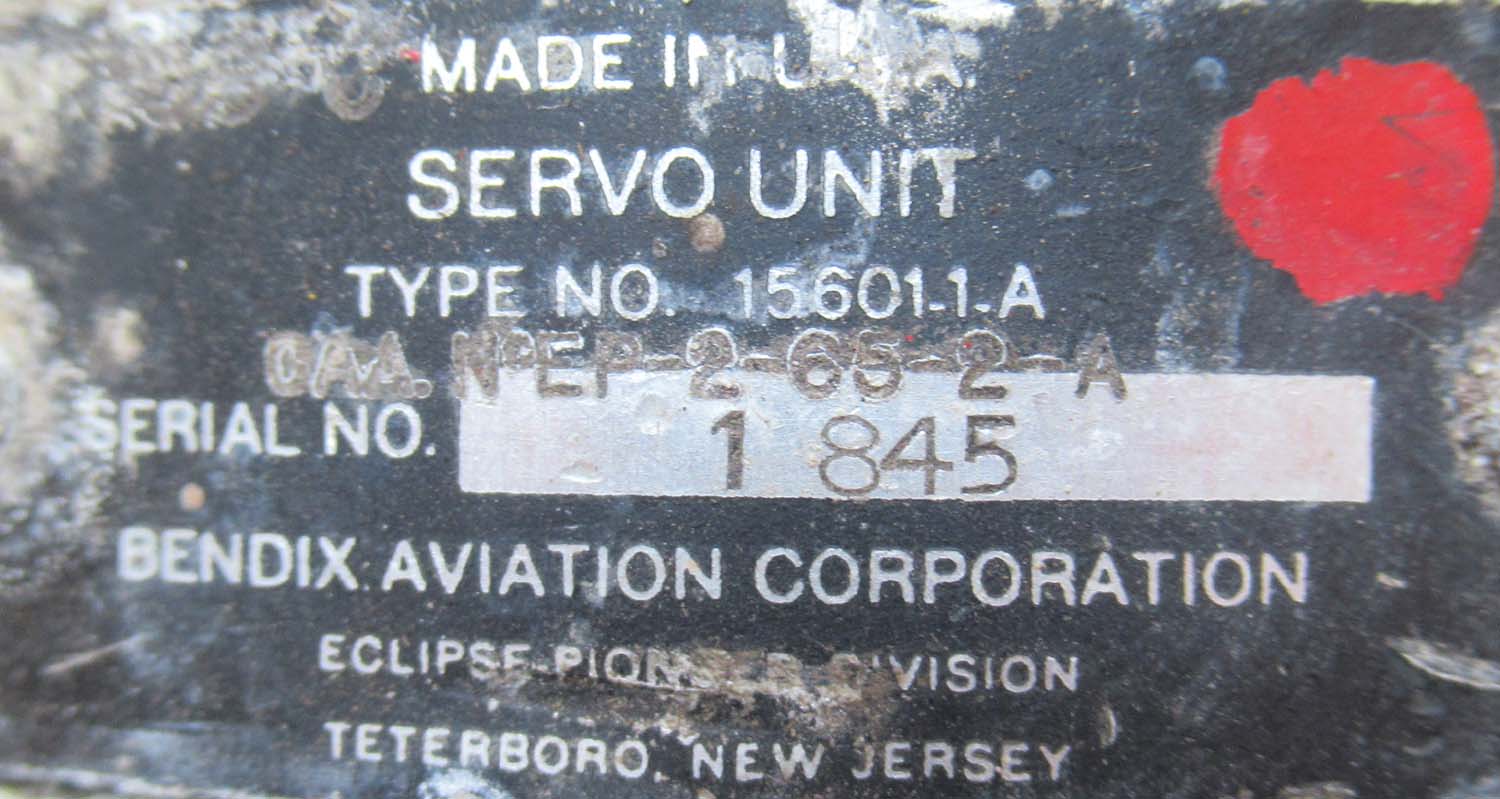
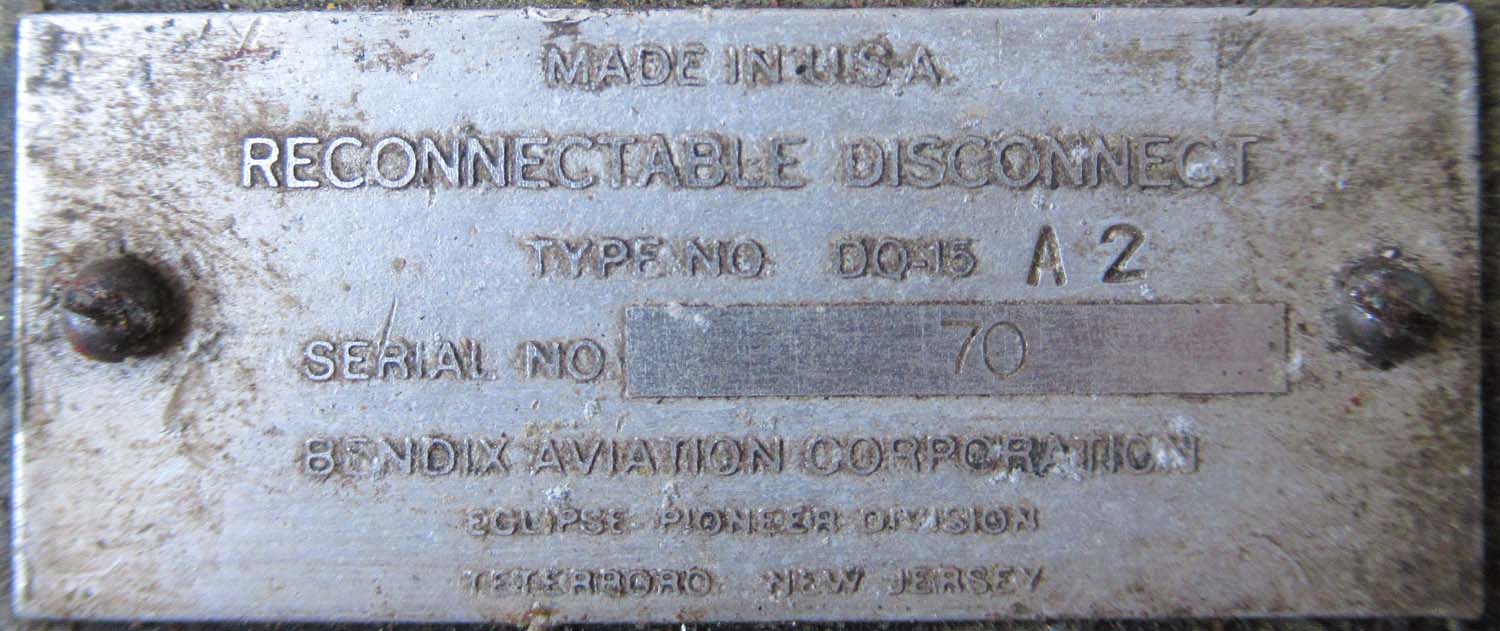 |
B17 servo unit type 15601-1-A (Cont
pg6 No 16)
This is a servo unit used with
the Bendix auto pilot system in a B17 I have been told this
is the tail servo.
Its possible it was used in other US
aircraft during the war, if you can tell me more about this
piece please email me.
320975
1-845
Click on the
pictures to enlarge them

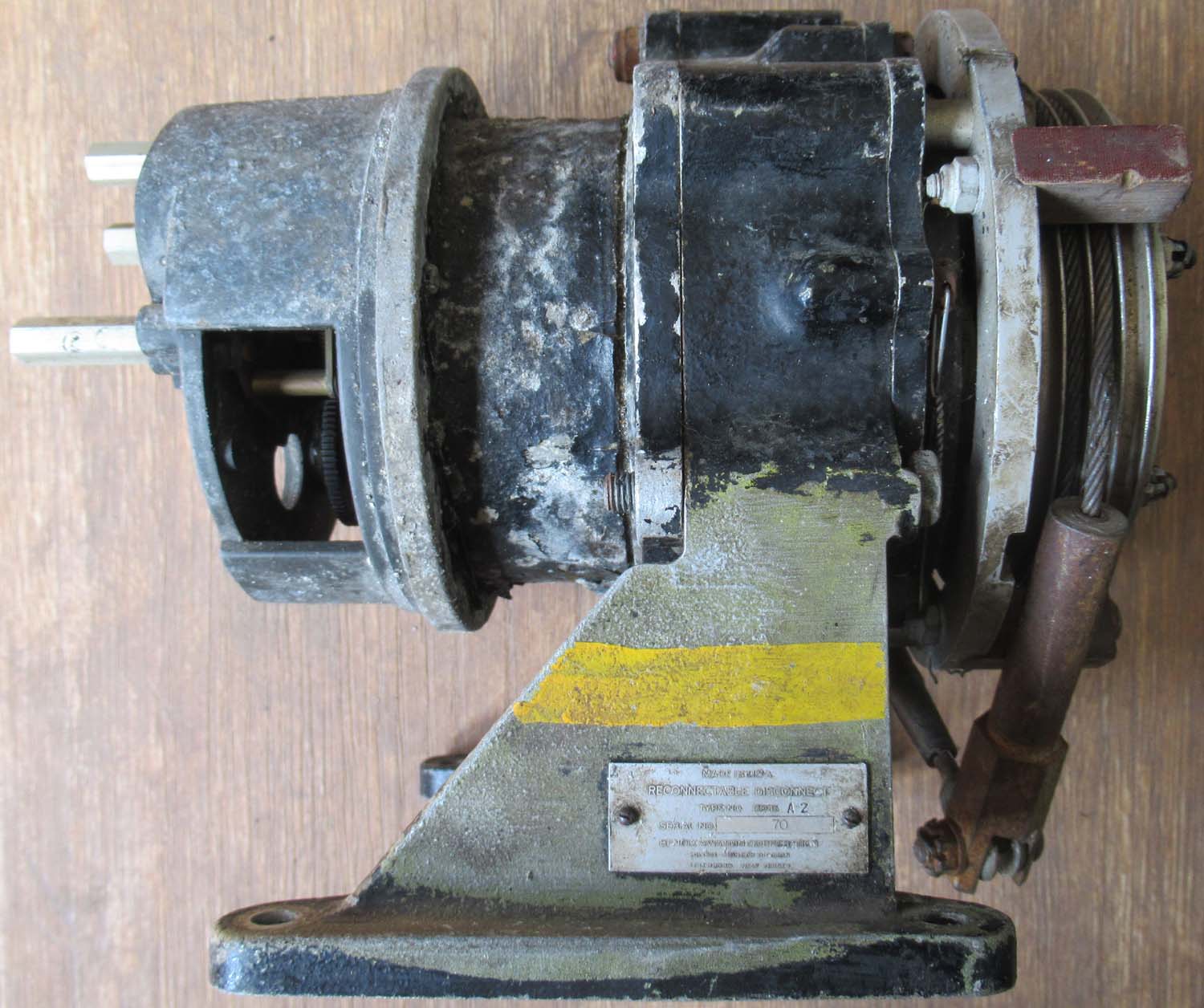
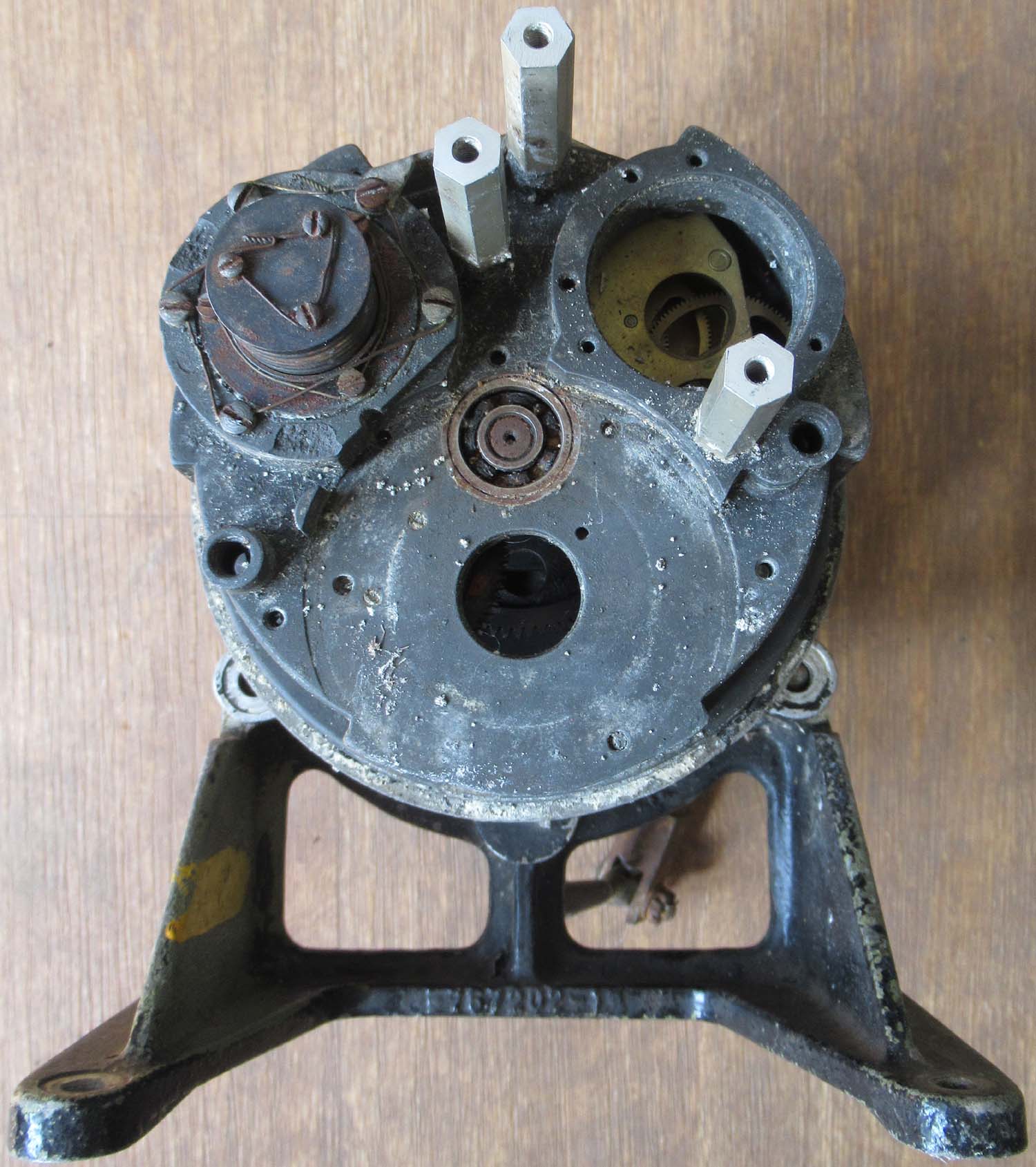

£275


The master
compass which controls the auto pilot system is listed in
instruments
compass page link here
|
|
Click on the
picture to enlarge
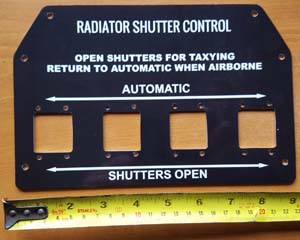 |
Lancaster Radiator Shutter
Control panel (Cont
pg6 No 15)
This is a quality reproduction panel
for the Lancaster shutter controls. It is made of alloy
plate approximately 2mm thick.
£125


|
|
Click on the
pictures to enlarge

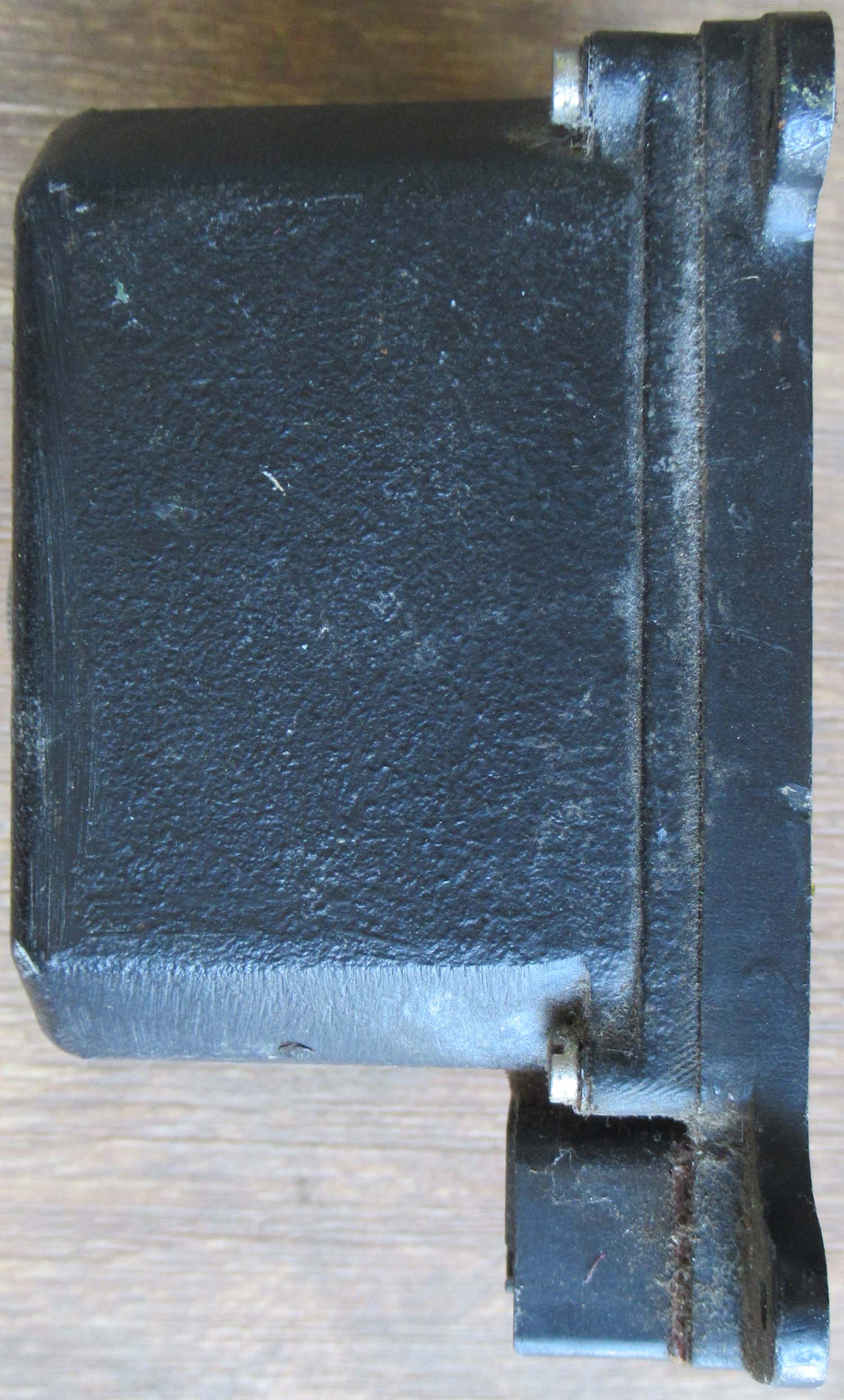 |
Homing Indicator (Cont
pg6 No 14)
Here is a Homing Indicator as
used in RAF Aircraft
Air Ministry Marked 5D/1420
Click on the
pictures to enlarge

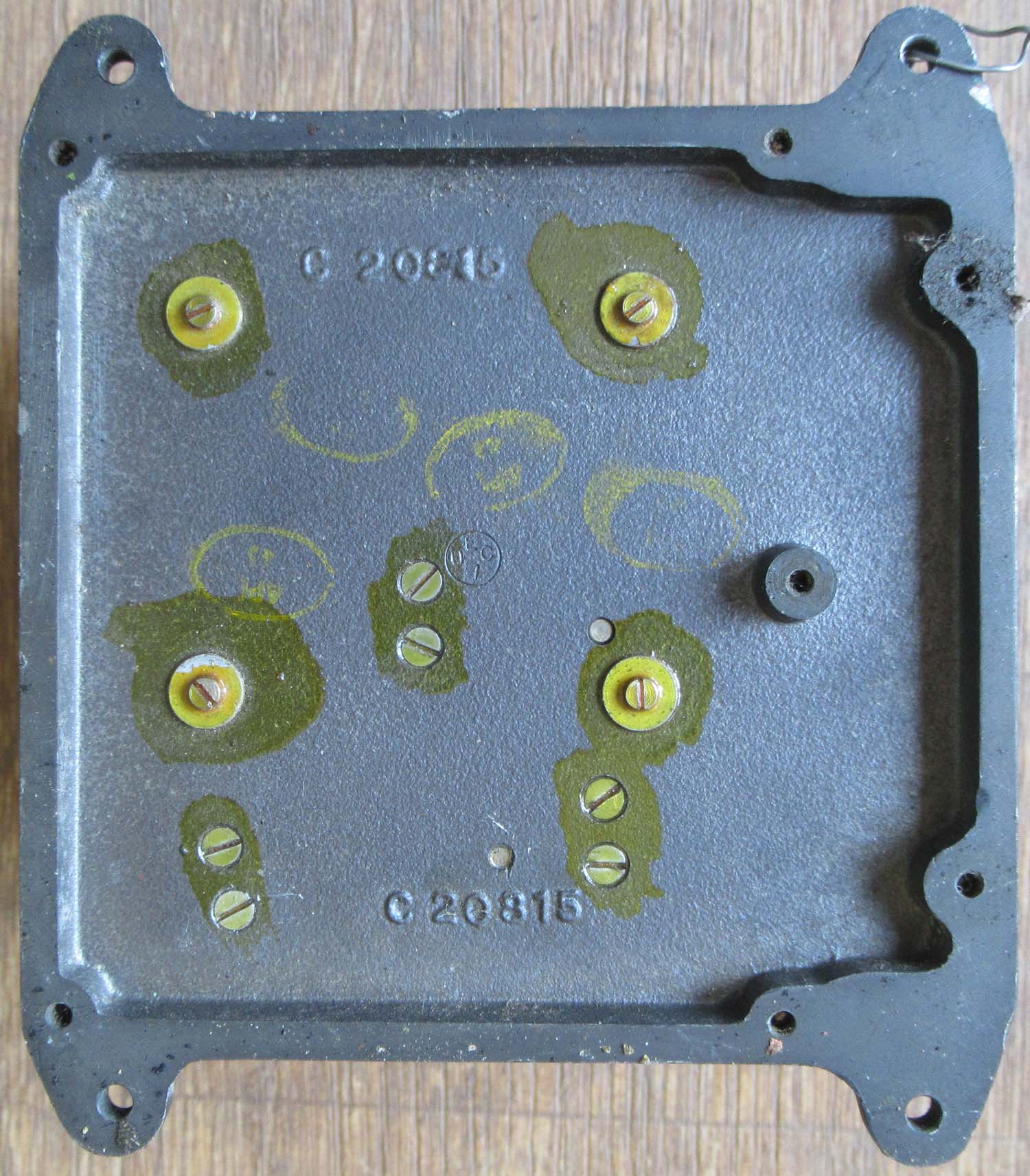
£125


|
|
Click on the
pictures to enlarge
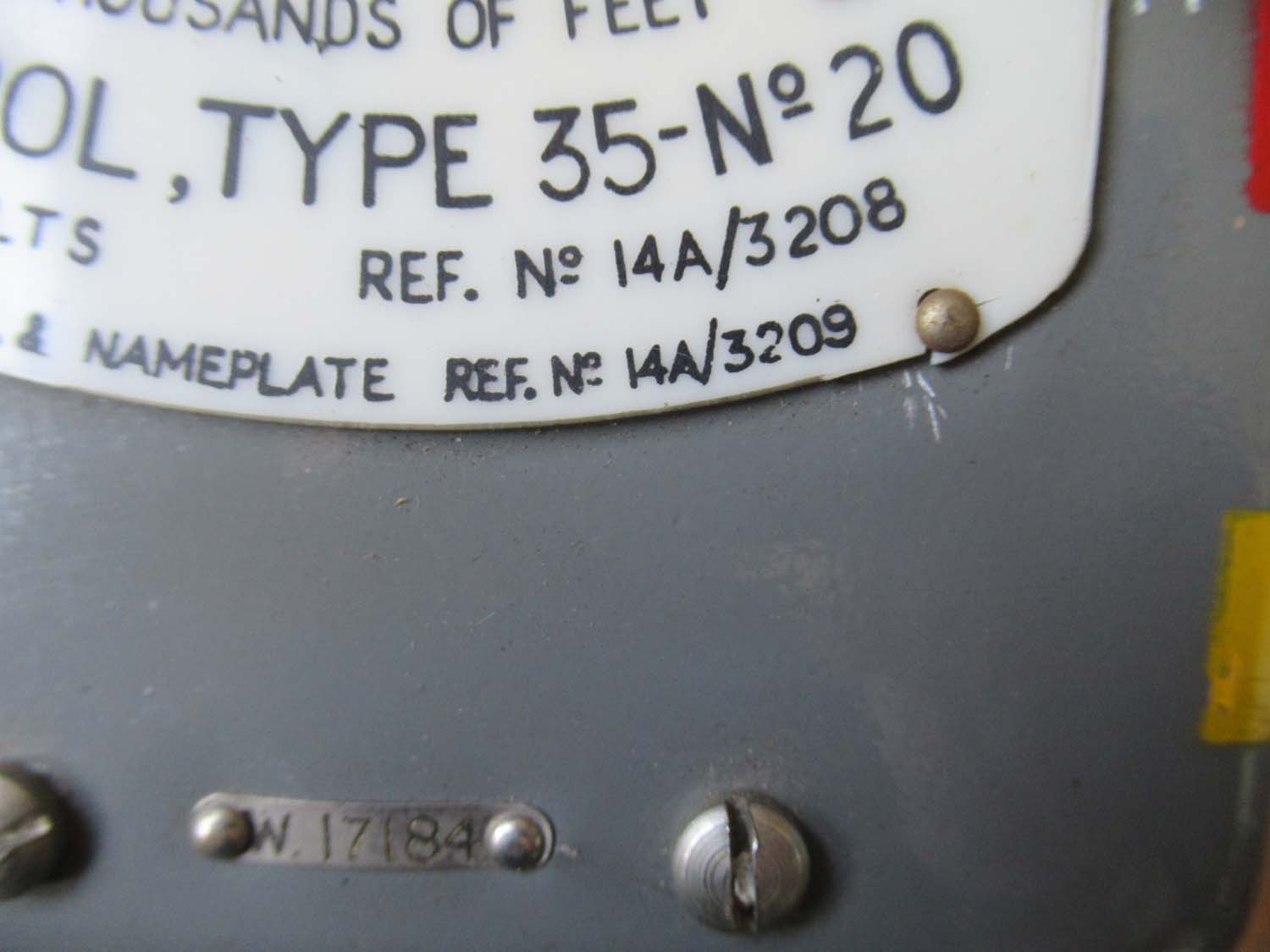
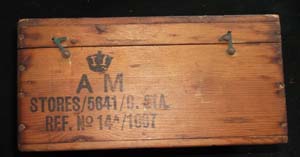
 |
Heavy Bomber Camera
Control (Cont pg6 No 13)
This is a good condition Control
for the camera on heavy bombers to capture the fall of the
bombs. It controls the flash release and is marked in
thousands of feet. Would have been fitted to many types of
Heavy Bomber including the Lancaster. I am not sure if it
was fitted to smaller bombers or recognisance aircraft but
this is a possibility.
Ref: 14A/1007
Click on the
pictures to enlarge
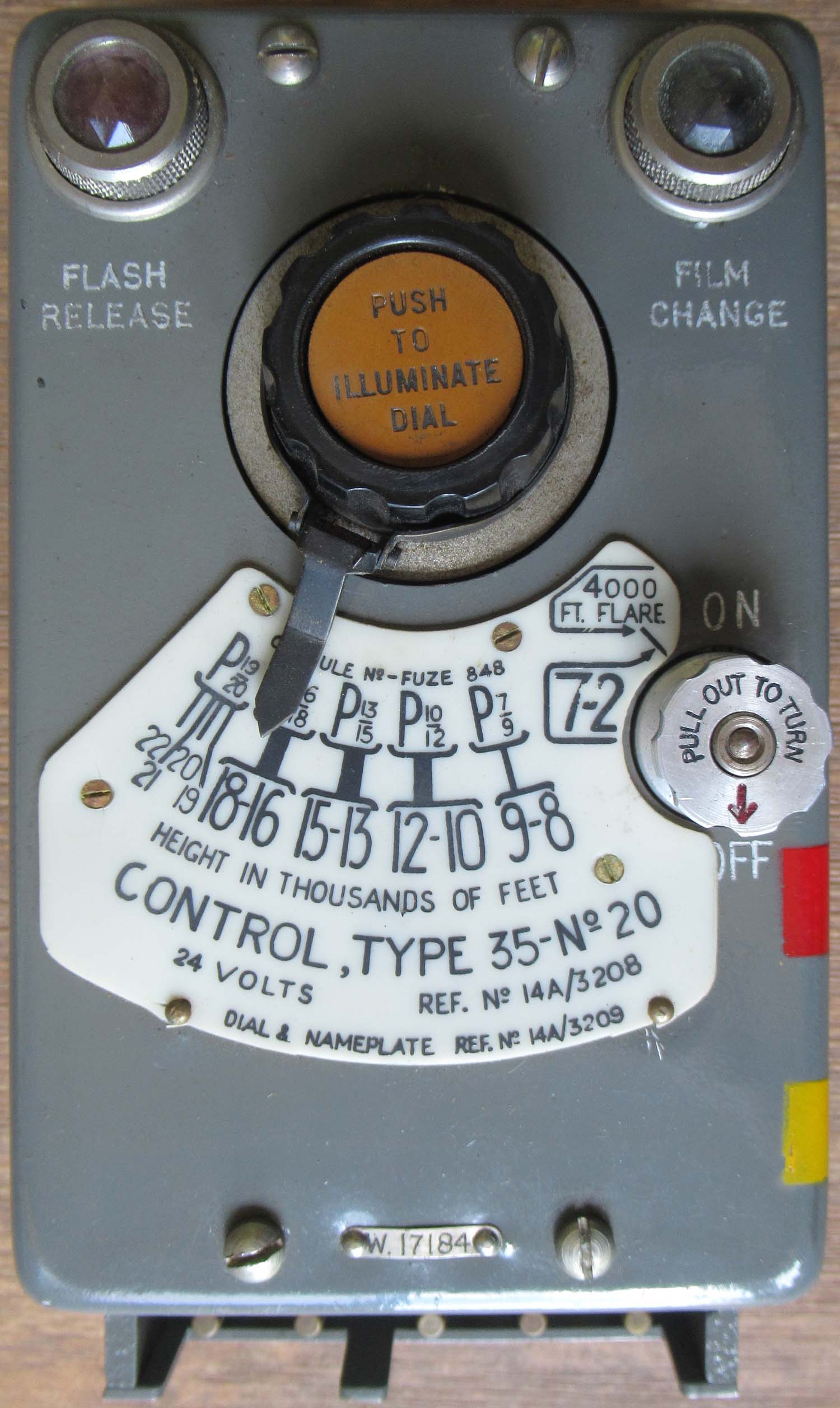

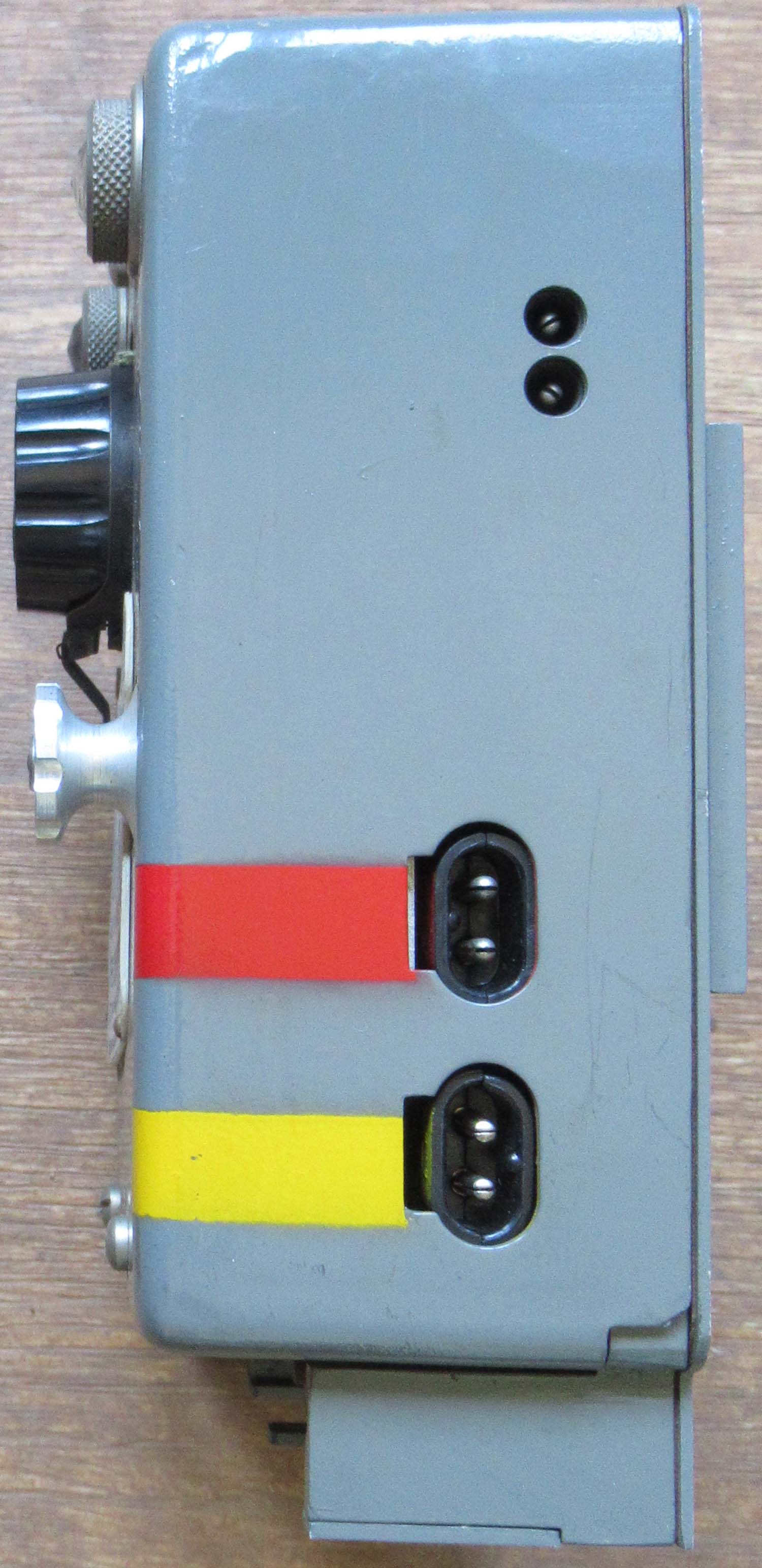
£275


|
|
Click on the
pictures to enlarge

|
Lancaster auto pilot control (Cont
pg6 No 12)

The is an
steel machined and cut reproduction of the extremely rare Lancaster auto
pilot, situated ion the lower LHS of the main instrument
panel.
The legend
is engraved this is a quality piece.
Click on the
pictures to enlarge

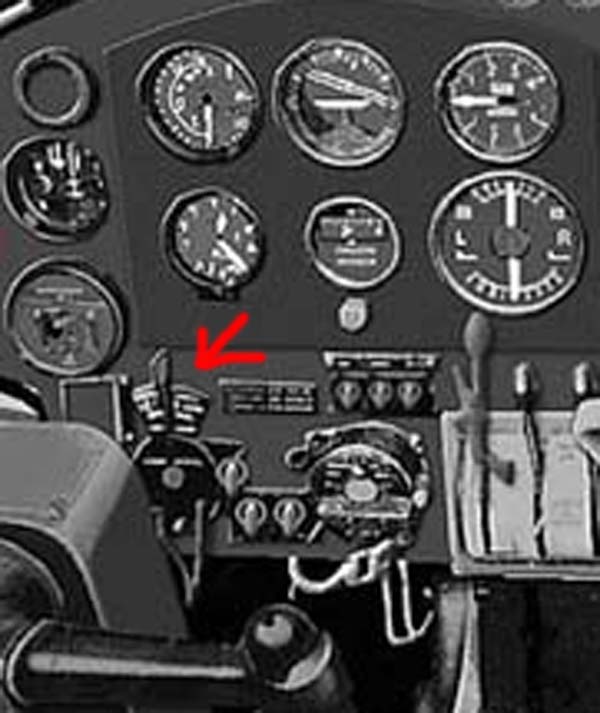 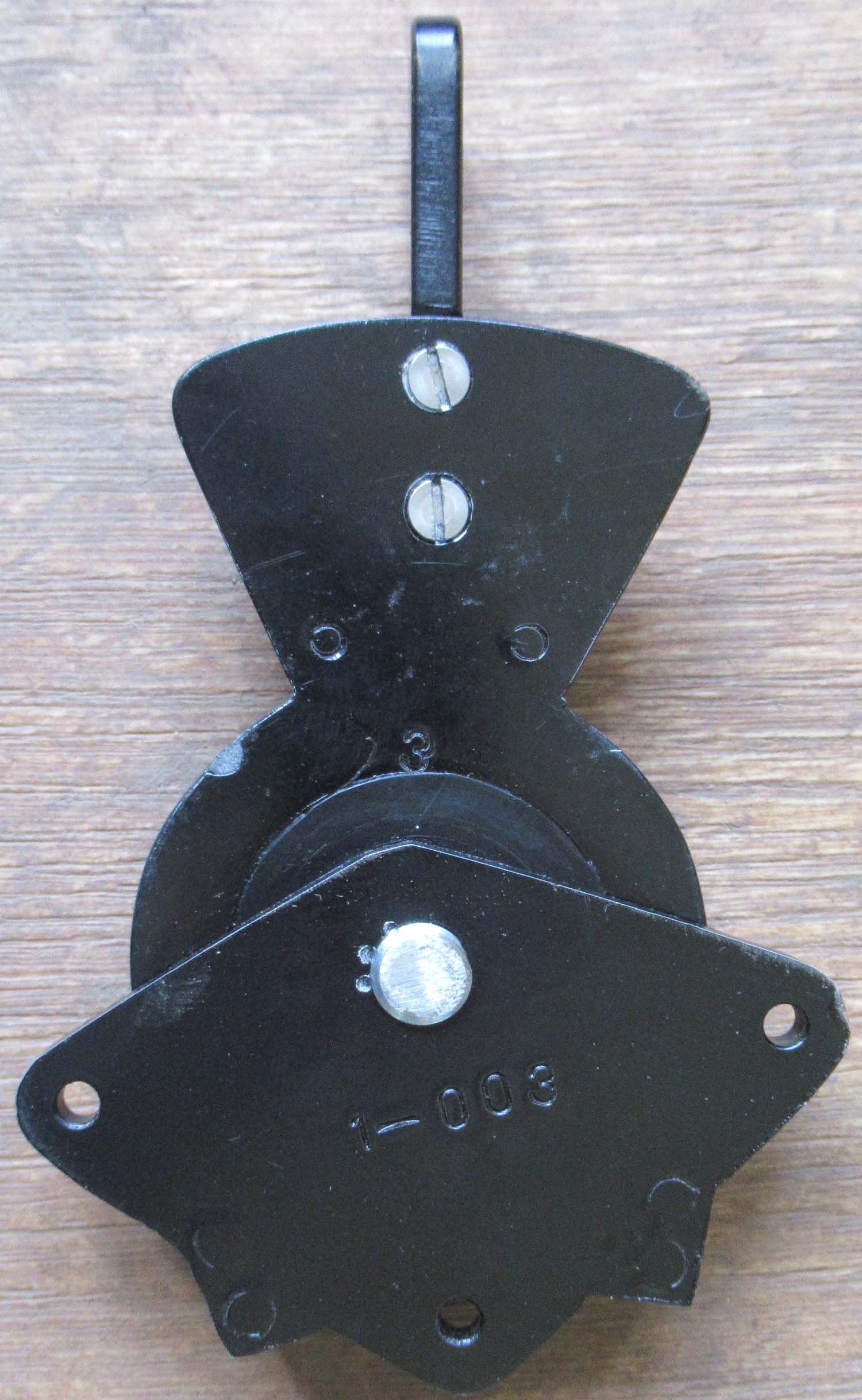
£295


|
|
Click on the
picture to enlarge
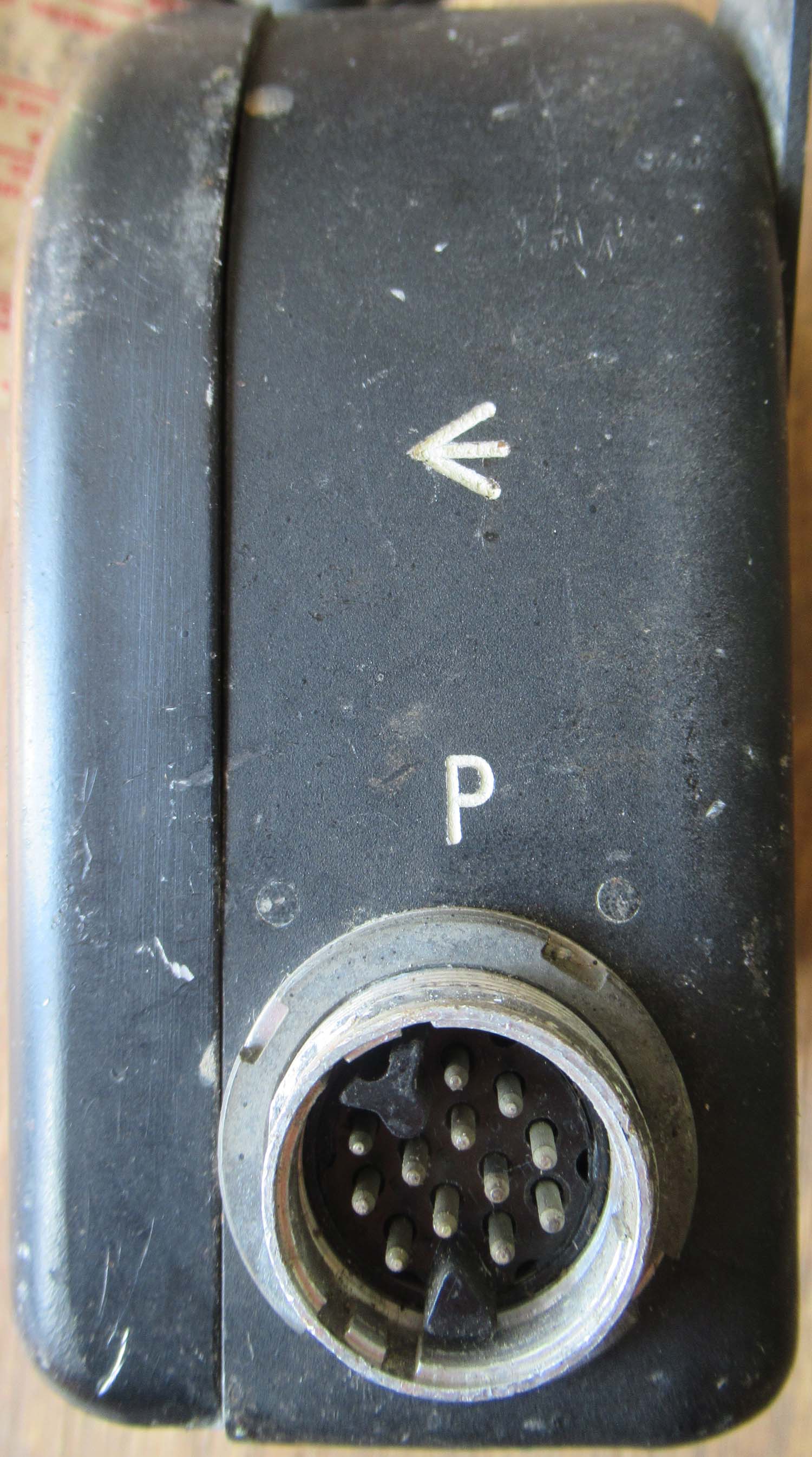
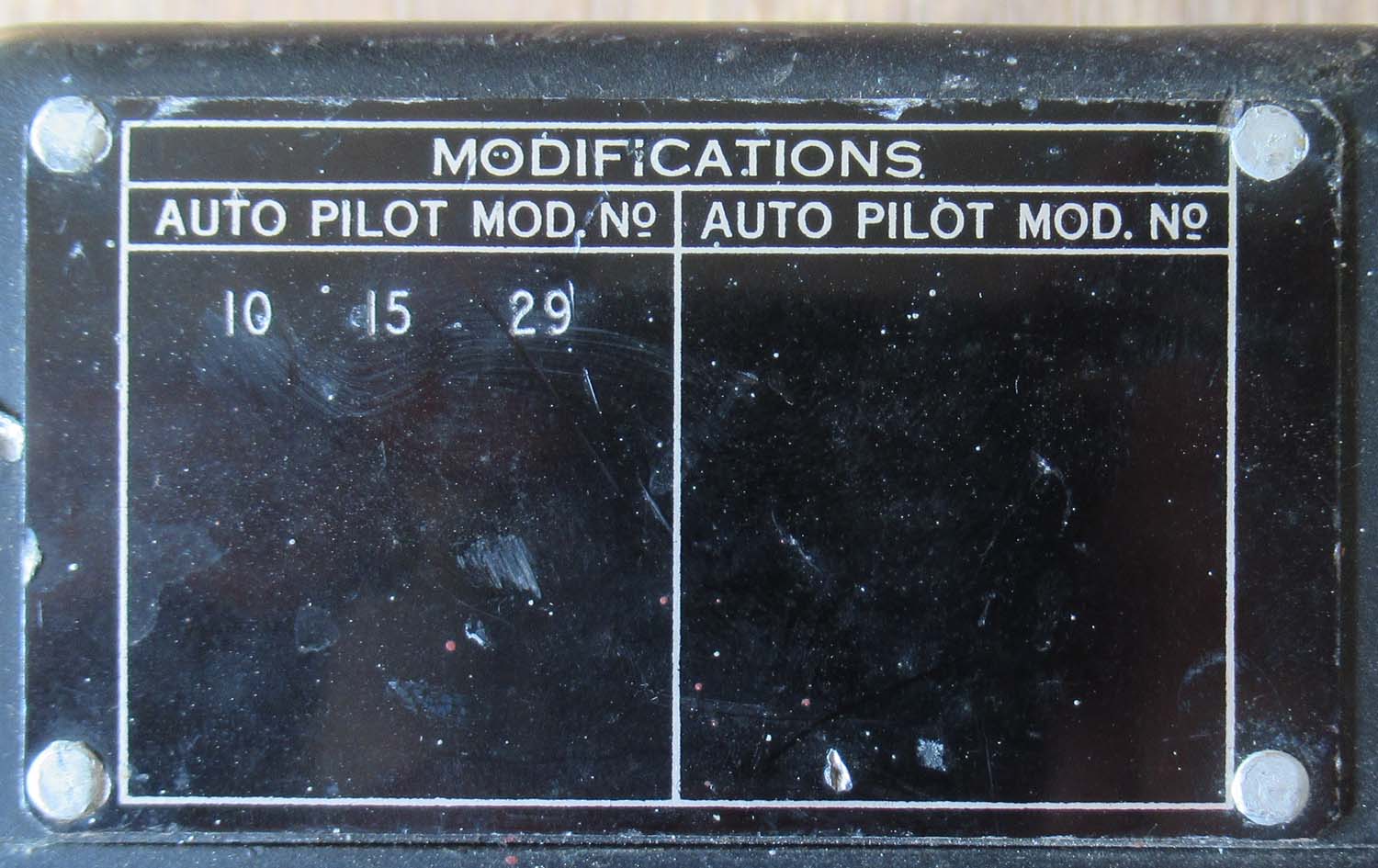
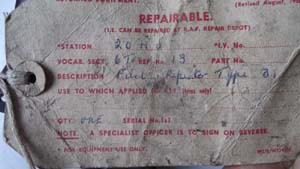
See this link for information about
the Hastings.
|
Handley Page Hastings auto pilot control to named aircraft (Cont
pg6 No 10) This
is an auto pilot control for a Hastings, it has the aircraft
serial number and date marked on it identifying the actual
aircraft. Here is a picture of the actual aircraft
this control came from.
Handley Page
Hastings C1A, TG561 / K, Royal Air Force
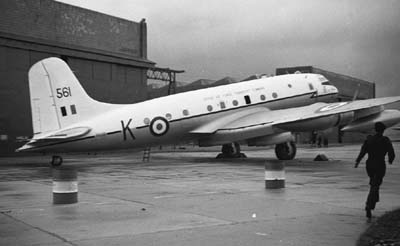
Reference 6T/31 Automatic Pilot Mk.9 Type
B1
Click on
pictures to enlarge
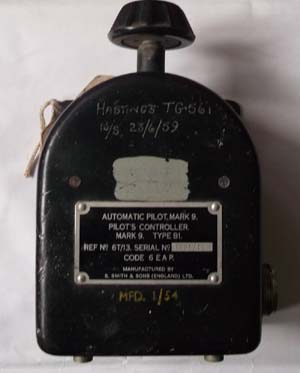
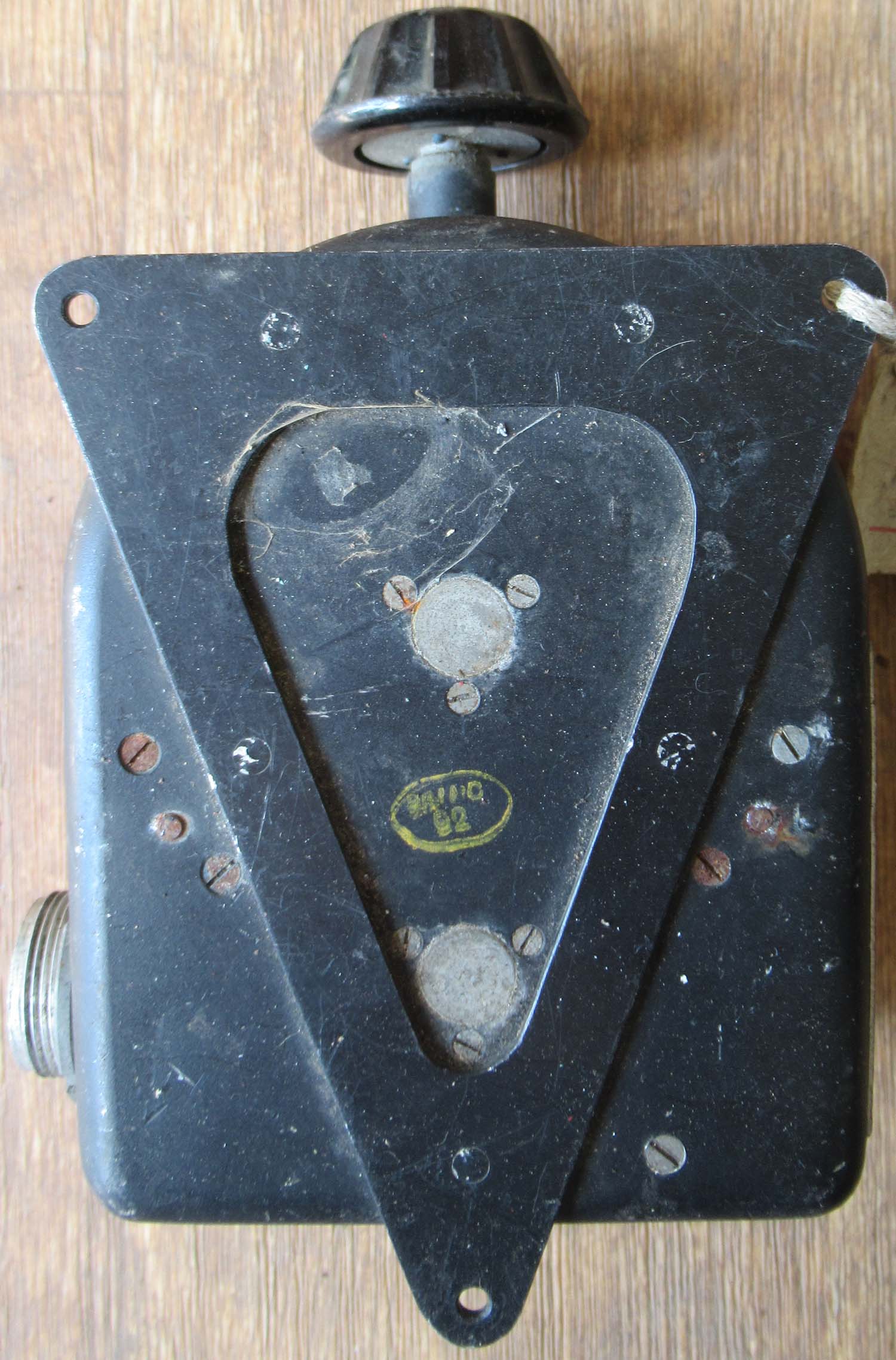
£75


|
|
Click on the
Pictures to Enlarge
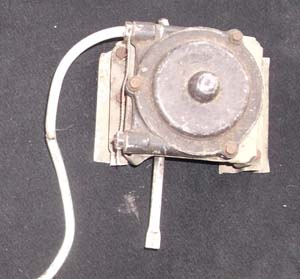


Click on the
Pictures to Enlarge £
175


|
Beaufighter Teleflex control (Cont
pg6 No 8)

This is a Teleflex control as
used in the Bristol Beaufighter
I have seen the exact same piece fitted
to the Beaufighter at the IWM Duxford shown left. This one appears to
have a different mounting bracket so I would not claim its
exclusive to this aircraft. It could be fitted to a whole
array of Wartime RAF and commonwealth multi engine aircraft.
Bracket is
marked 5163 HK5N Click on the
picture to Enlarge
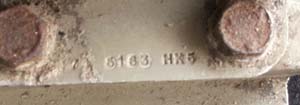
During World War II, the Bristol Bristol Beaufighter played
a significant role in the Battle of Britain, protecting the
skies over the south of England. Flying
at night, all-black painted Bristol Bristol Beaufighters
acted as Night Interceptors.
In the hands of skilled pilots such as Grp Captain John
‘Cats-Eyes’ Cunningham. Cunningham's nickname 'Cats Eyes'
originated from him being credited with the highest number
of ‘Night Kills’ in his Bristol Bristol Beaufighter and
alike.
In
reality however, it was later revealed that his success
was due to the Bristol Bristol Beaufighter’s secret AI
Radar, rather than his exceptional night-vision.

The Beaufighter was used in may roles including a torpedo
Bomber it was used in many theatres of operation and was
feared by its enemies as it was relatively quiet and very
heavily armed the Japanese named it "Whispering death"
|
|
Click on the
pictures to enlarge


|
Oil Shutter control Bristol Hercules (Cont
pg6 No 7)
This Rotax switch
is an oil cooler shutter switch
radial engines such as the Bristol
Hercules and was used in a huge range of aircraft fitted
with radial engines including the Halifax III, Lancaster II, Beaufighter,
and Stirling to name but a few.
Reference: 5C/3187
Click on
the pictures to enlarge
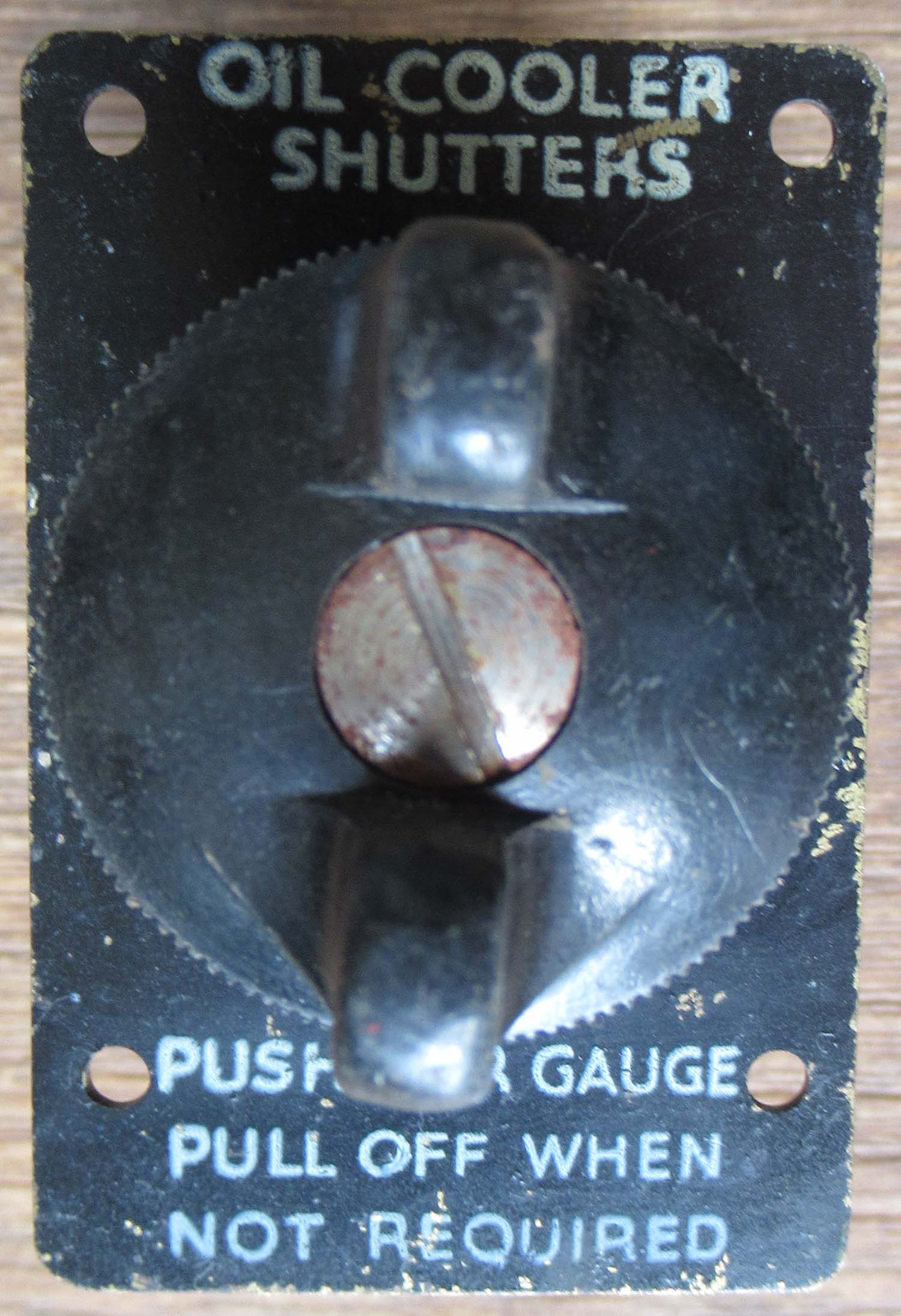

£75 each multiples
available


|



Click on
the pictures to enlarge.
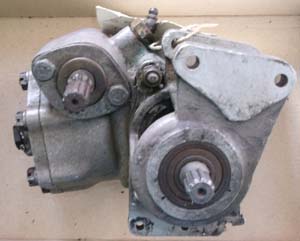
£395


|
Arnhem Dakota C 47 nos 42-100896 gear unit (Cont
pg6 No 6)
This is superb piece of
history of the bridge to far, purchased on our trip to
Arnhem
from an aviation archaeologist who recovered it from the
crash site . It appears to be be part of
a trim unit.
It belonged
C-47,
42-100896 of the 314th
Troop carrier group. On 18th September 1944 C-47 42-100896
was hit by FLAK from the Grebbeberg and caught fire. The
aircraft was on it’s way to drop zone Y with 19 paratroopers
of C Company, 11 Battalion. It crashed between the Rijnsteeg
and the Slagsteeg near Wageningen. 13 of those on board
bailed out in time.
This
was the third ship lost by the 314th. 314th Troop Carrier
Group was one of the 62nd Troop Carrier Squadron.
The crew was:
Pilot - 1st Lt Frederick N Hale Jr Copilot - 2nd Lt Thaddeus
C Harvey Radio Operator - S/Sgt Clarence V Parson Crew Chief
- T/Sgt Milfred L Harold
USAAF 314 TCG - 62 TCS.C-47 42-100896, Base Saltby. It is
assumed that the aircraft was not just shot down by Flak,
but also by men of a Wehrmacht unit who used infantry
weapons. The plane crashed in a meadow west of the Rijnsteeg
near Mr. Vermeer's farm, Wageningen , at 14.15h. The crew
members who perished, were first buried in the local General
Cemetery on 20 September 1944. They were reinterred in the
Ardennes American Cemetery at Neuville-en-Condroz, Belgium,
on 21 March 1946.
The soldiers they were carrying were
from the 11th Battalion, Parachute Regiment of whom seven
were also killed
Sgt. Housham,
Cpl. Knowless and Privates Barlow, Bell, Borland, James,
Morris en Page
Shown
under the area of the crash site.
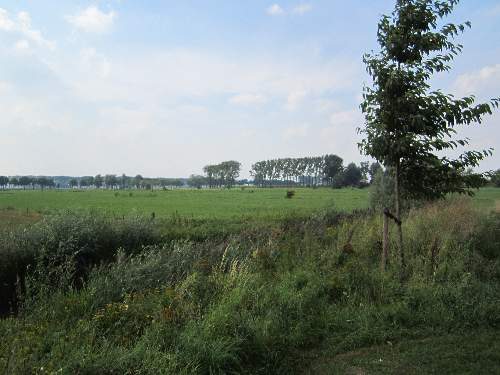
The 11th Parachute Battalion was an airborne
infantry battalion of the parachute regiment,
raised by the British army during WWII
The battalion formed
in the Middle East was assigned to the 4th
parachute brigade, 1st airborne division. As it
was still training it was left behind when the
rest of the brigade took part in the Allied
invasion of Italy. One company later parachuted
onto the island of Kos taking prisoner the large
Italian garrison. The battalion rejoined the
rest of the division in England. The only battle
in which the battalion participated was the
Battle of Arnhem in September 1944. The
battalion sustained heavy casualties and was
disbanded following the battle.
Under a picture of British paratroops who took
part in the Battle of Arnhem
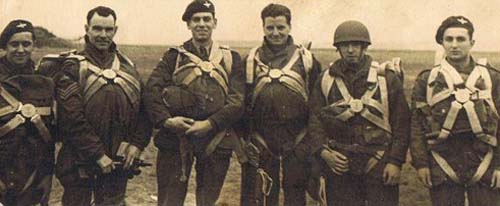
|
|
Click on
pictures to enlarge
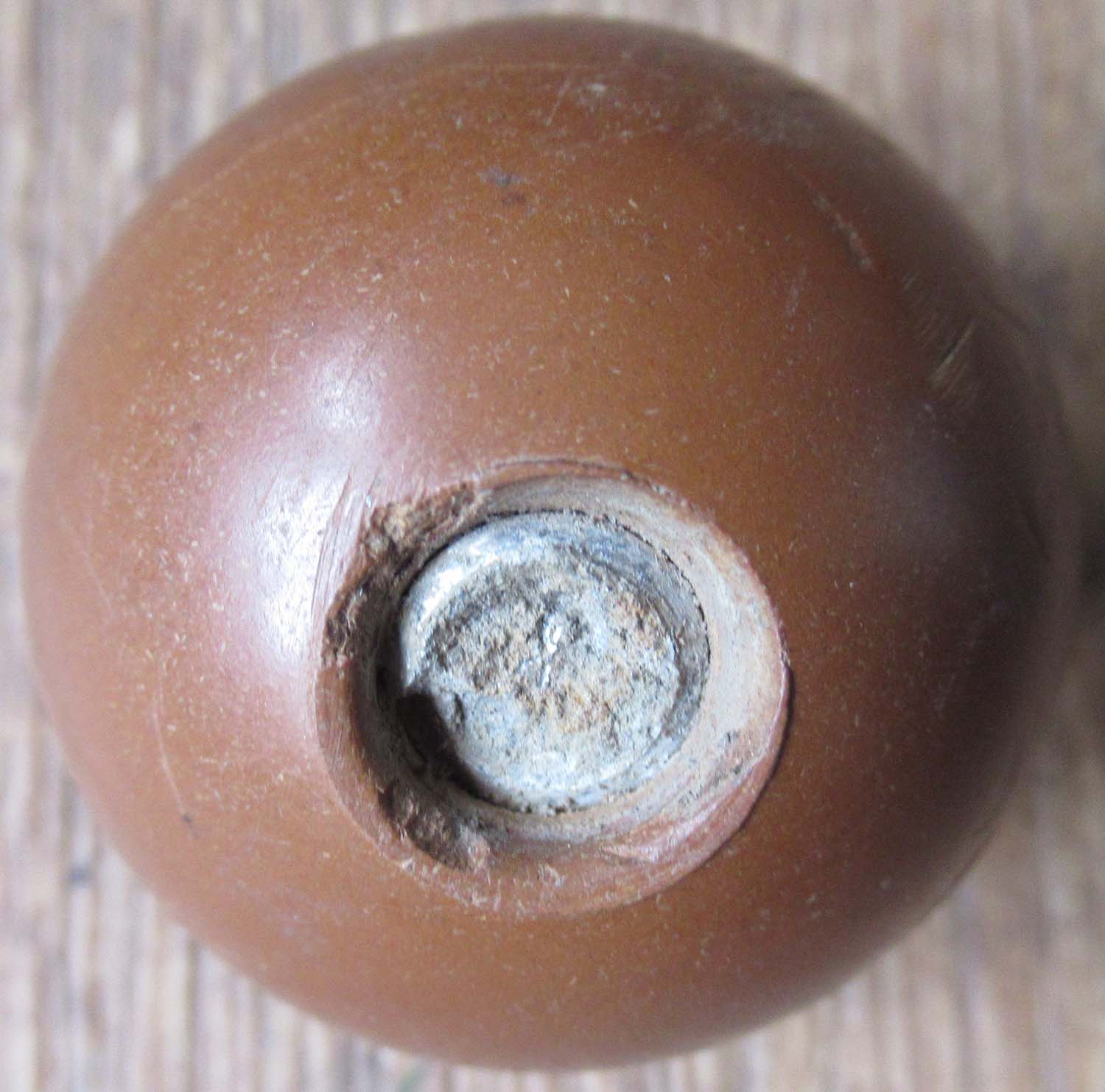
|
JU 88C-6 control knob (Cont
pg6 No 5)
This piece came from an
unknown Ju88C-6 crash sight in Germany. Possibly from
the throttle of prop controls.
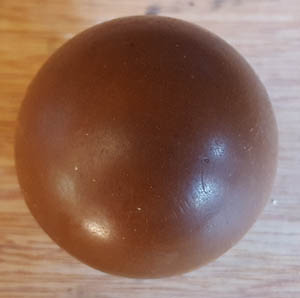
£150


|
|
Click on the
Pictures to enlarge them


£45
Red Letters


£45
White Letters


|
Reproduction Lancaster Bomb Jettison Control (Cont
pg6 No 4)
Here are reproductions 3d
printed in hard durable plastic.
The collar unscrews
allowing the base unit to be fixed to the panel the shaft of
the lever is square as per the original.
These are a
solution to the extremely hard to find original and make a
great budget substitute for that missing peace from your
panel.
I will have a metal version available but they will
be considerably more expensive as they have to be made by
hand and despite its appearance is a complex thing to
reproduce.
Available with Red or white
lettering

Seen above in
situ in a Lancaster. Click on the
Pictures to enlarge them
|
|
Click on pictures to enlarge
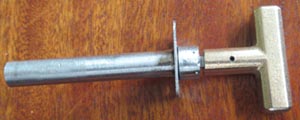
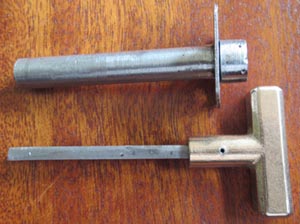
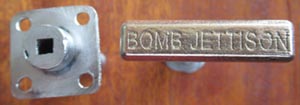
|
Reproduction all metal Lancaster Bomb Jettison Control A (Cont
pg6 No 3)
These are our superb all
metal reproduction Lancaster Bomb Jettison levers. They were
incredibly hard to make and even have the square shaft .
They are identical in proportion to the originals and if
anything of better quality, we have
left out the threaded bar and cable attachment as it would
just add to the cost and its unlikely these will ever have
to jettison bombs and are not visible so not needed for your
panel.

£275


|
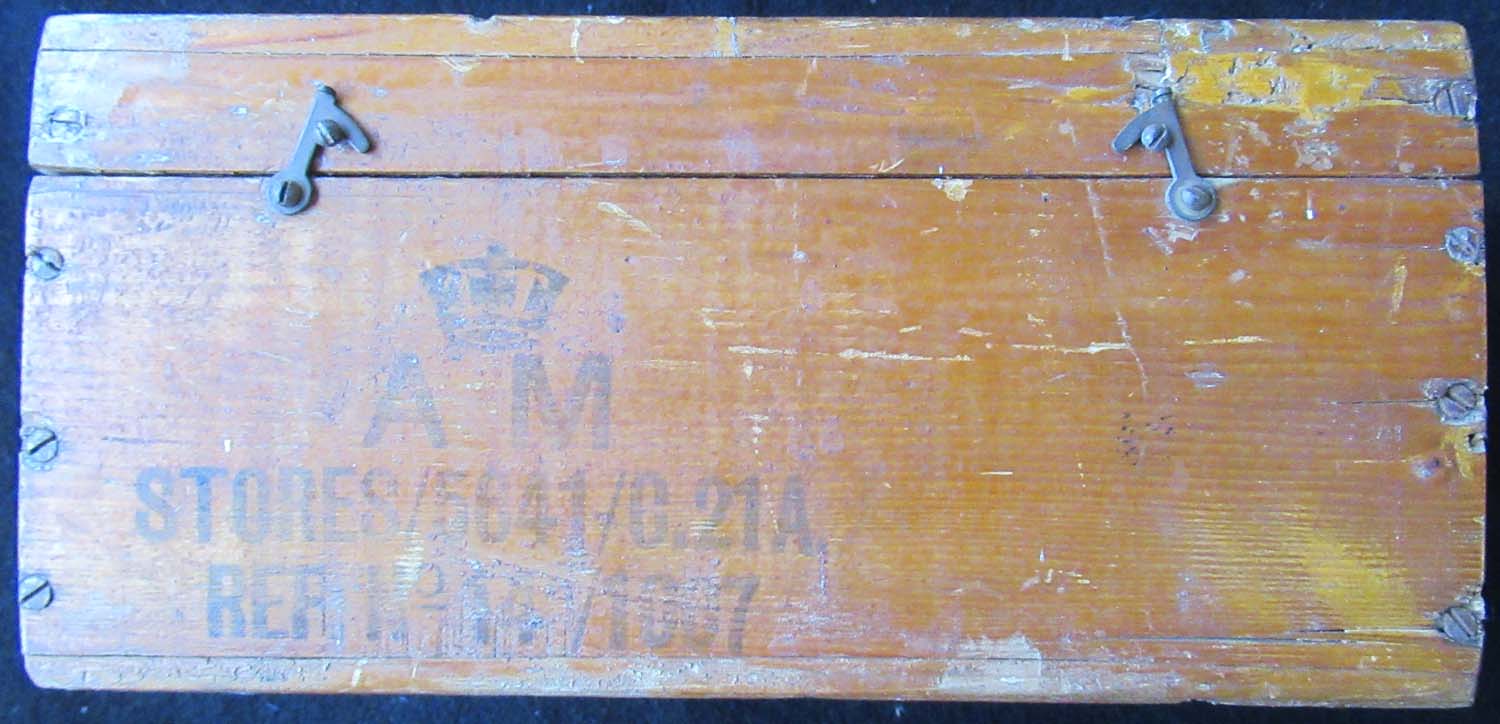
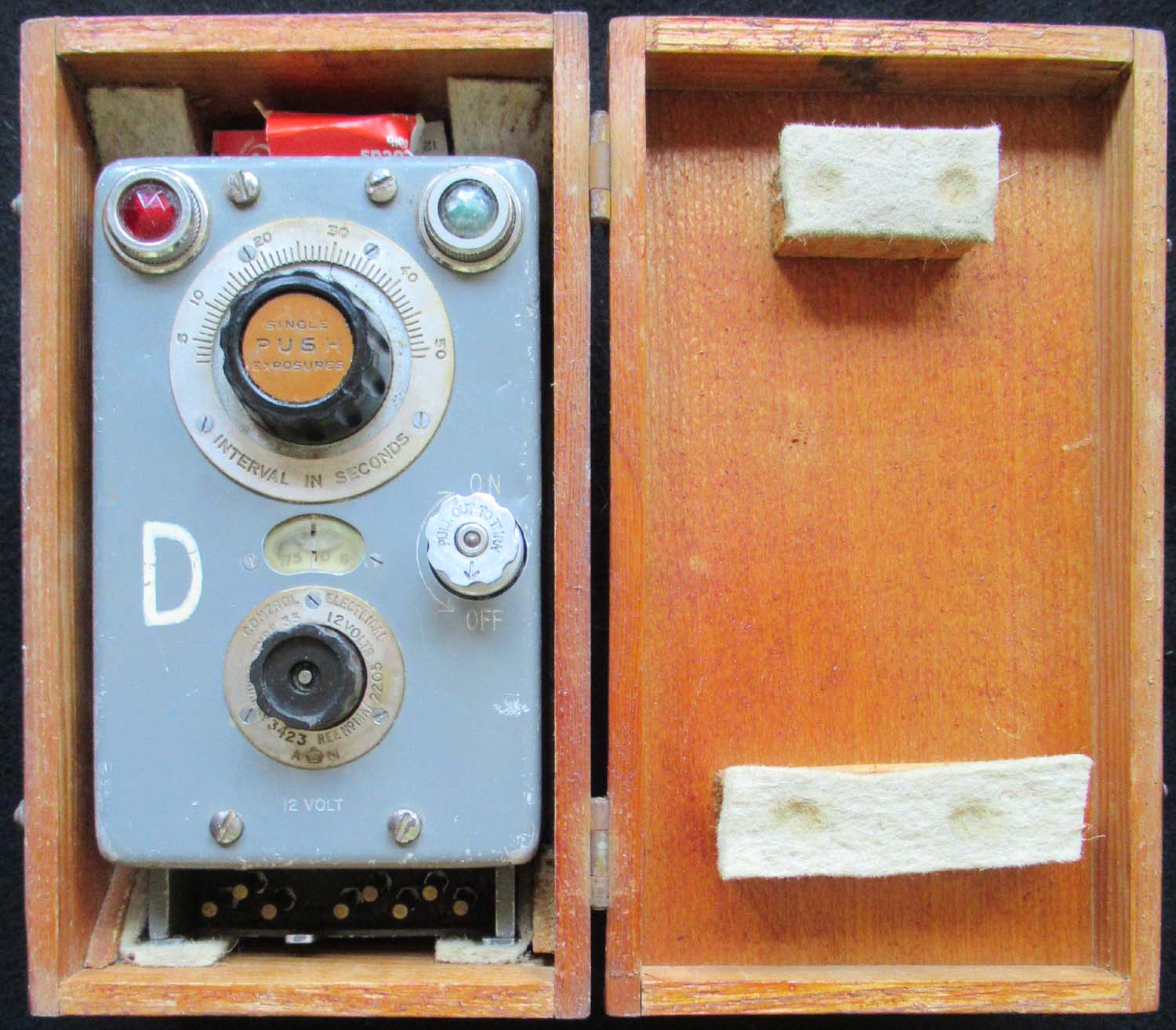
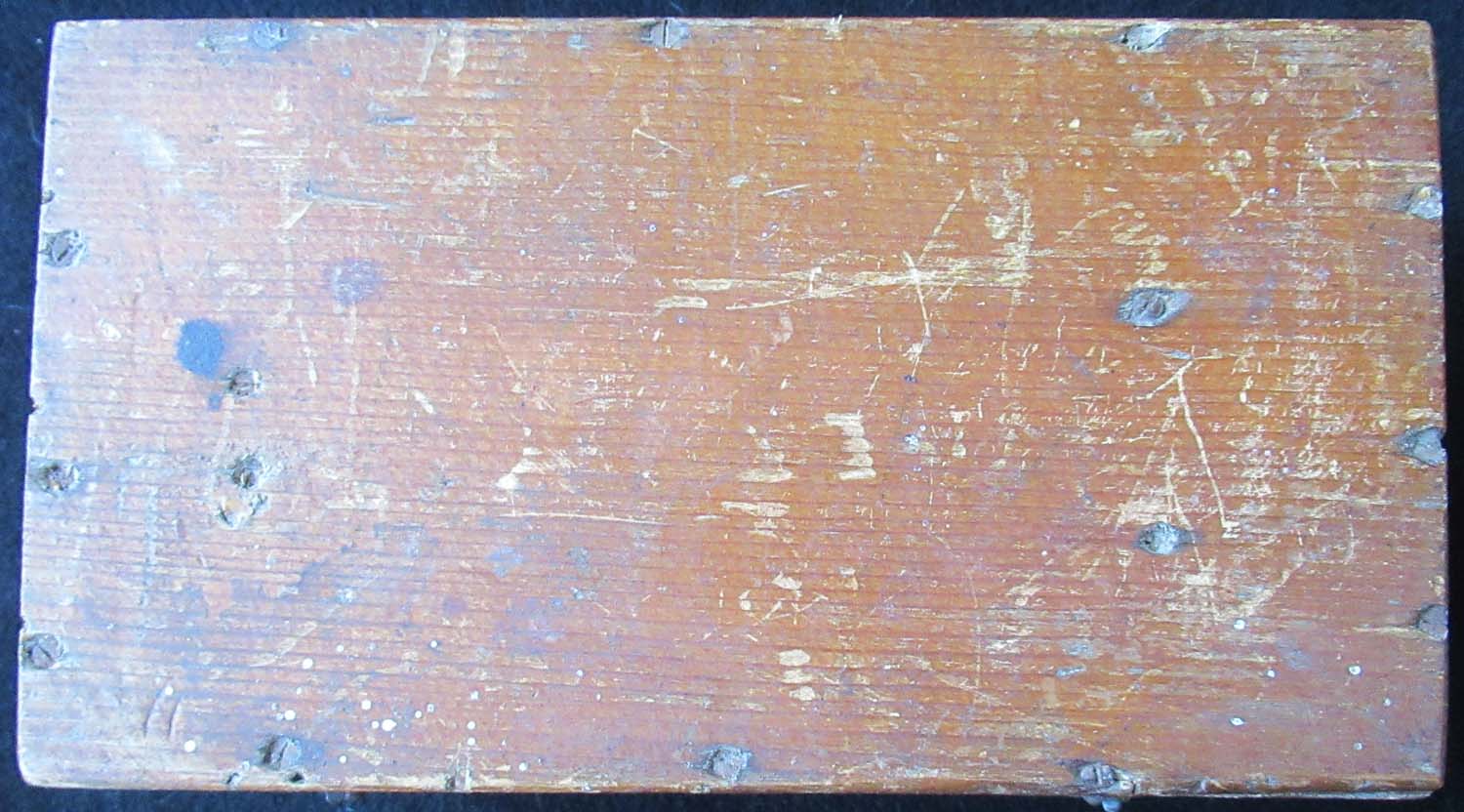
Click on the
pictures to enlarge
 |
PRU Spitfire camera control (Cont
pg6 No 2)
This is a good condition Control
for the camera on PRU Spitfires and other aircraft used for
recognisance. This Spitfires used for this purpose were
unarmed to save weight could fly at very high altitudes and
they were fast.
They used their speed and height to avoid
being engaged in combat and could outrun any armed
fighter.
This control was mounted
on the main Spitfire instrument panel.
This one comes in its
original box. It is 12 volt so almost certainly from a
Spitfire as the other main aircraft used in this role was a
Mosquito which used 12 volts.
12 volt
Ref: 14A/1007
Click on the
pictures to enlarge
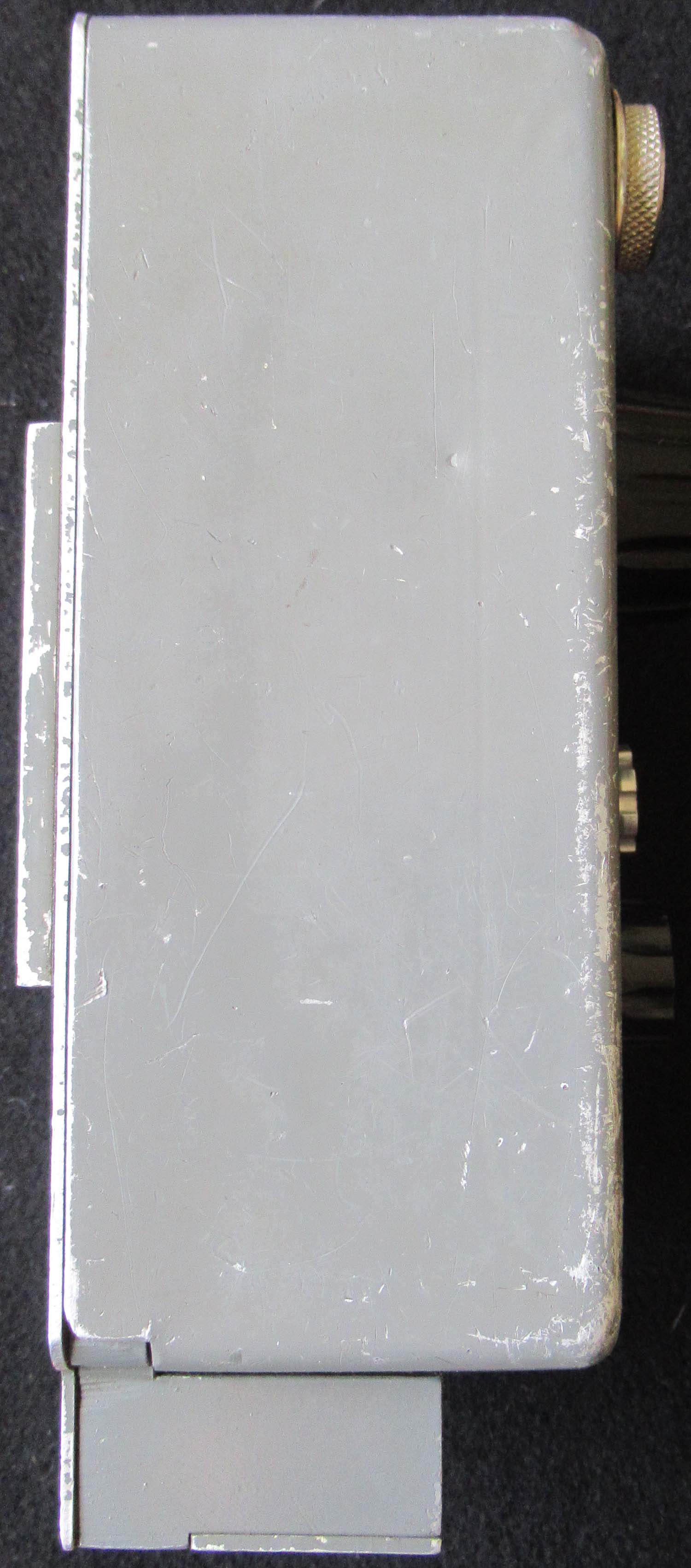



£295


|

Please Click on
the Pictures to Enlarge

|
Stirling Mk III
BK657 Control Assy (page 4 relics 11)
Here is part of the control Assy of
BK657
It has Part
Number ST681103/4 on the bracket attached and FB95678-S/3 on one
of the arms
Click to see this in our
relics section |
|
Click on the
pictures to enlarge

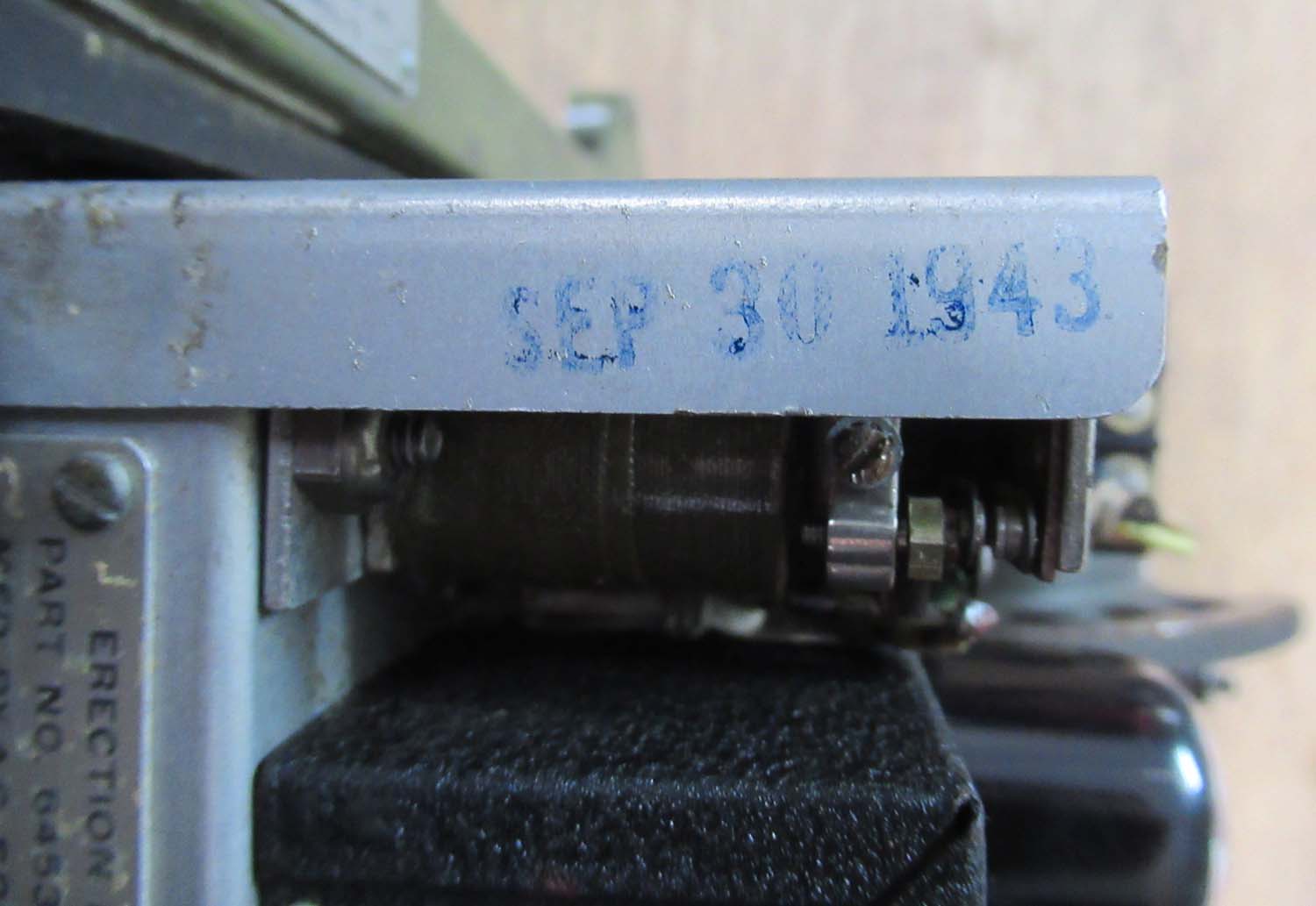
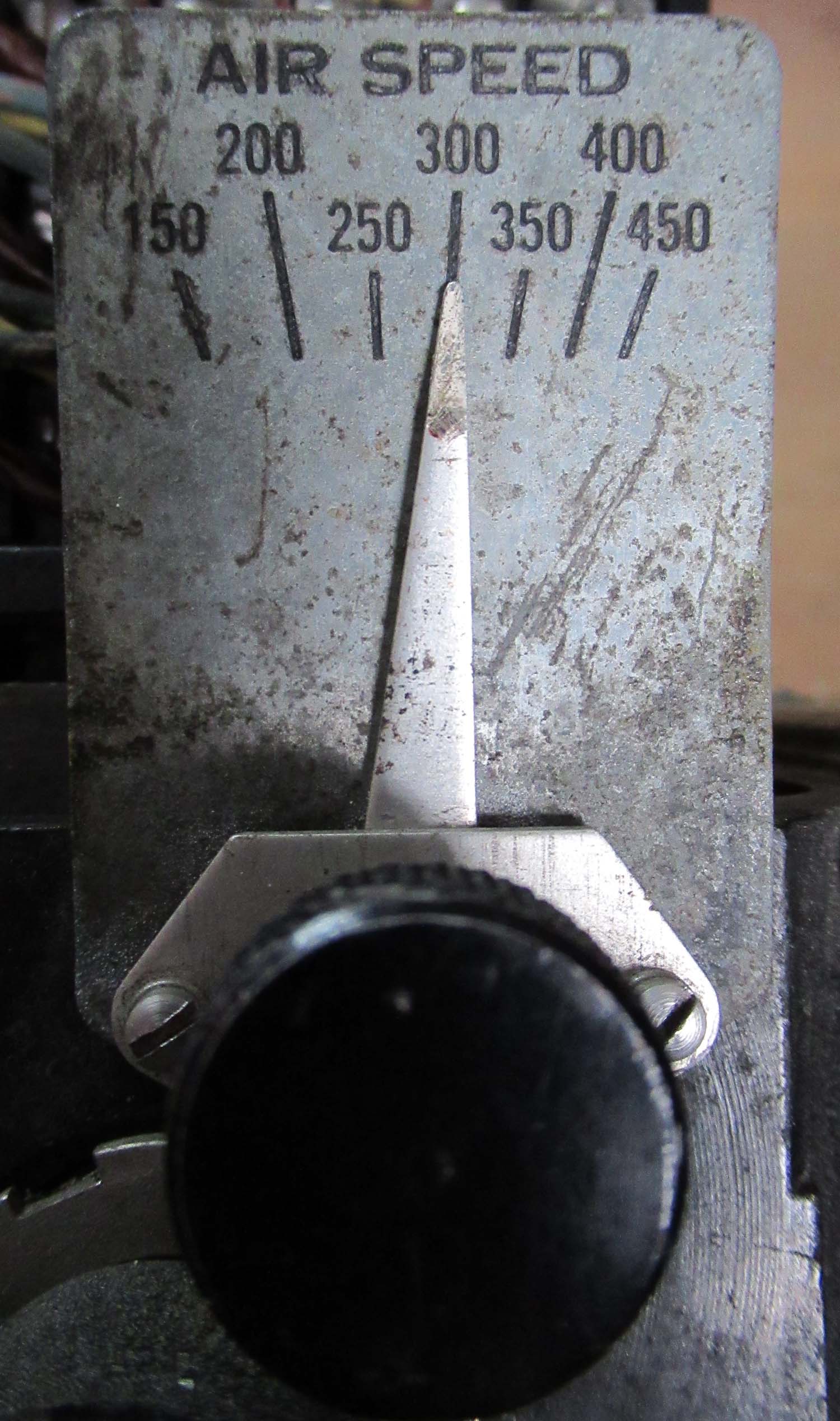 |
A-5 Automatic Pilot Vertical Gyro (Cont
pg6 No 1)
Here is a Vertical gyro mount
component of the A-5 Automatic Pilot.
The A-5's faster
stabilization of the aircraft made it possible for new
bombsights to be used on military aircraft during WWII. When
integrated with the bombsight, the A-5 would be engaged to
fly the aircraft straight and level to the target set by the
bombardier, while the bombsight calculated the release point
of the bombs.
It was the first
all-electronic autopilot, designed by the Instrumentation
Laboratory and manufactured by Sperry.
This was used with both
the Norden and Sperry Bombsights.
Used in the B17, B24 and
other heavy US Bombers.
Click on the
pictures to enlarge

Click on the
pictures to enlarge

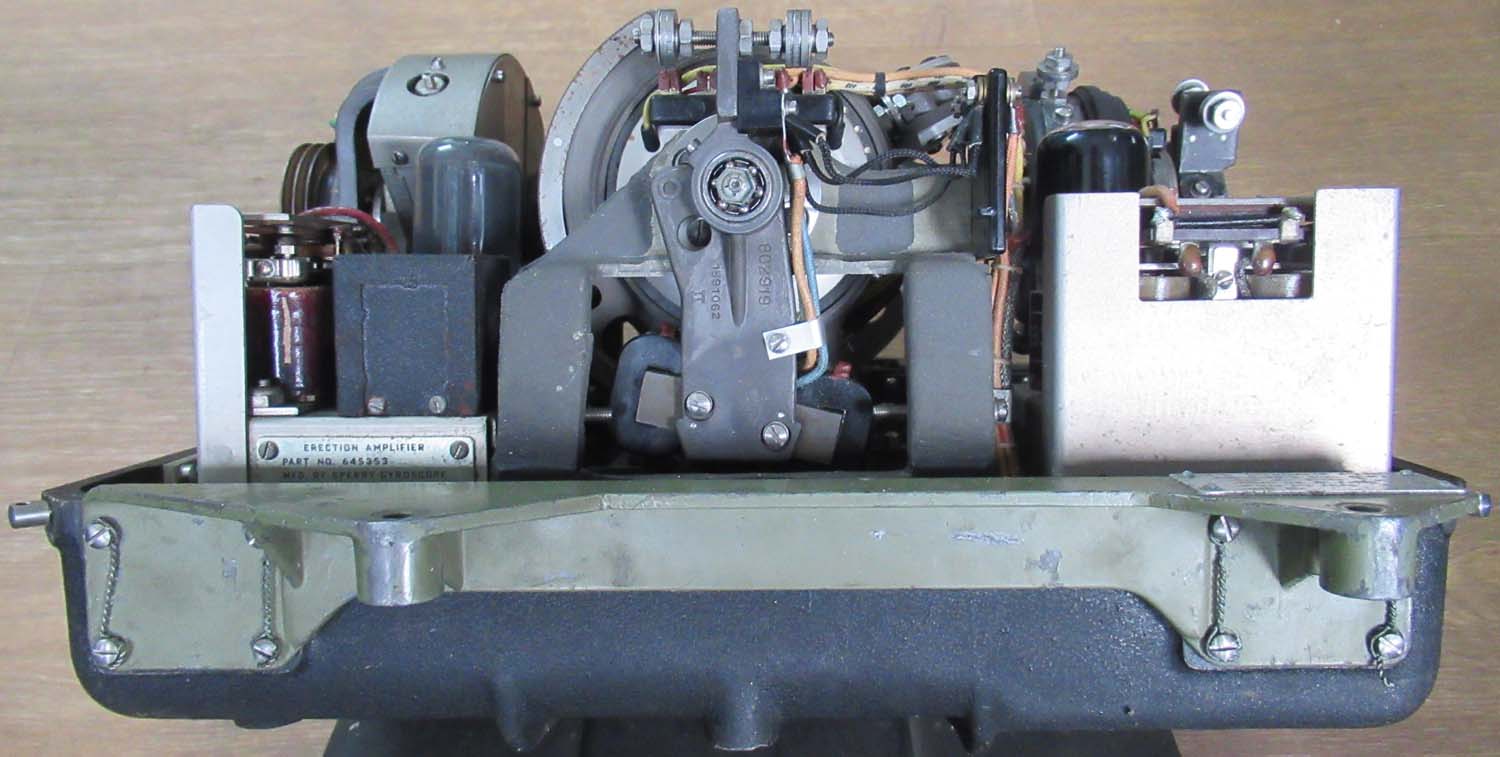
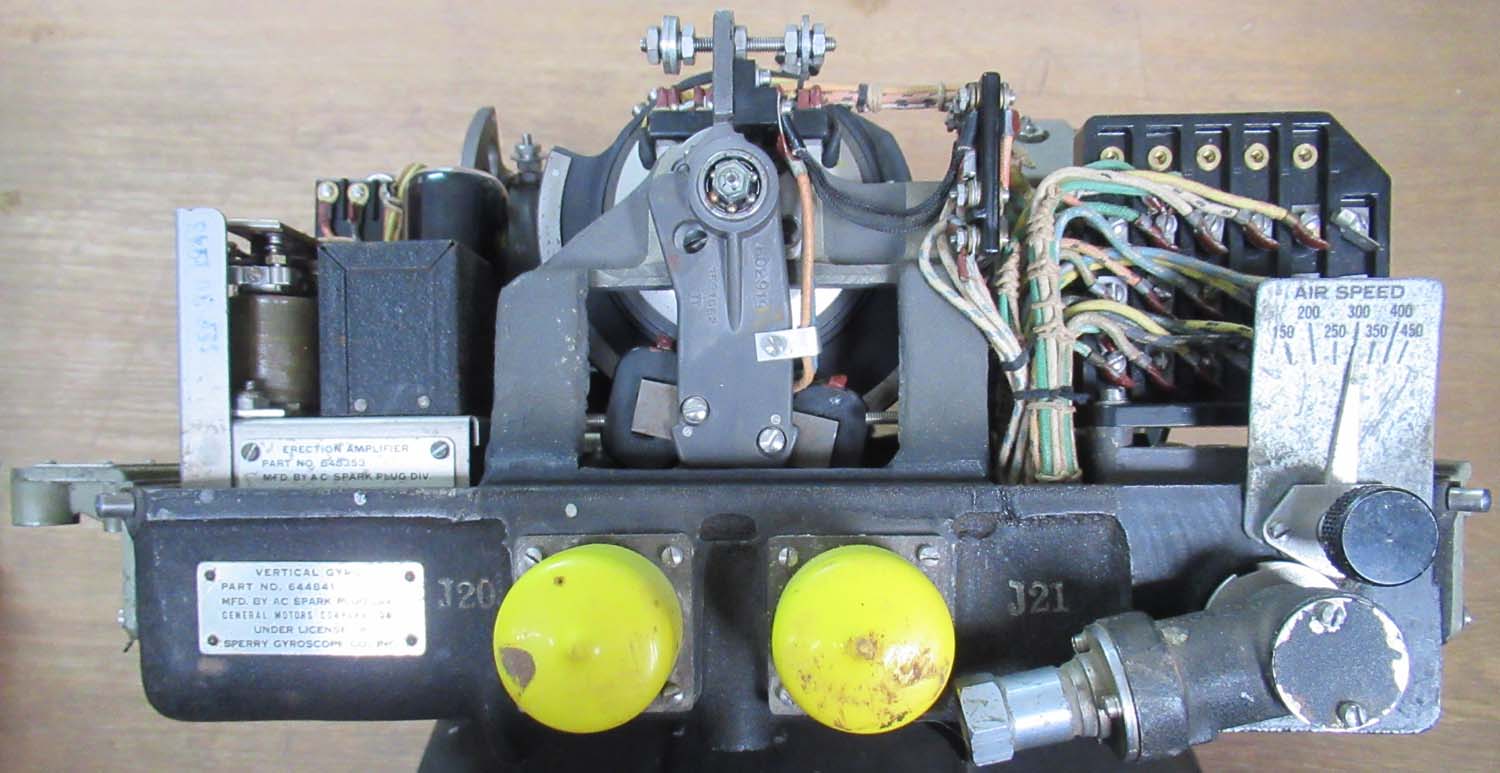

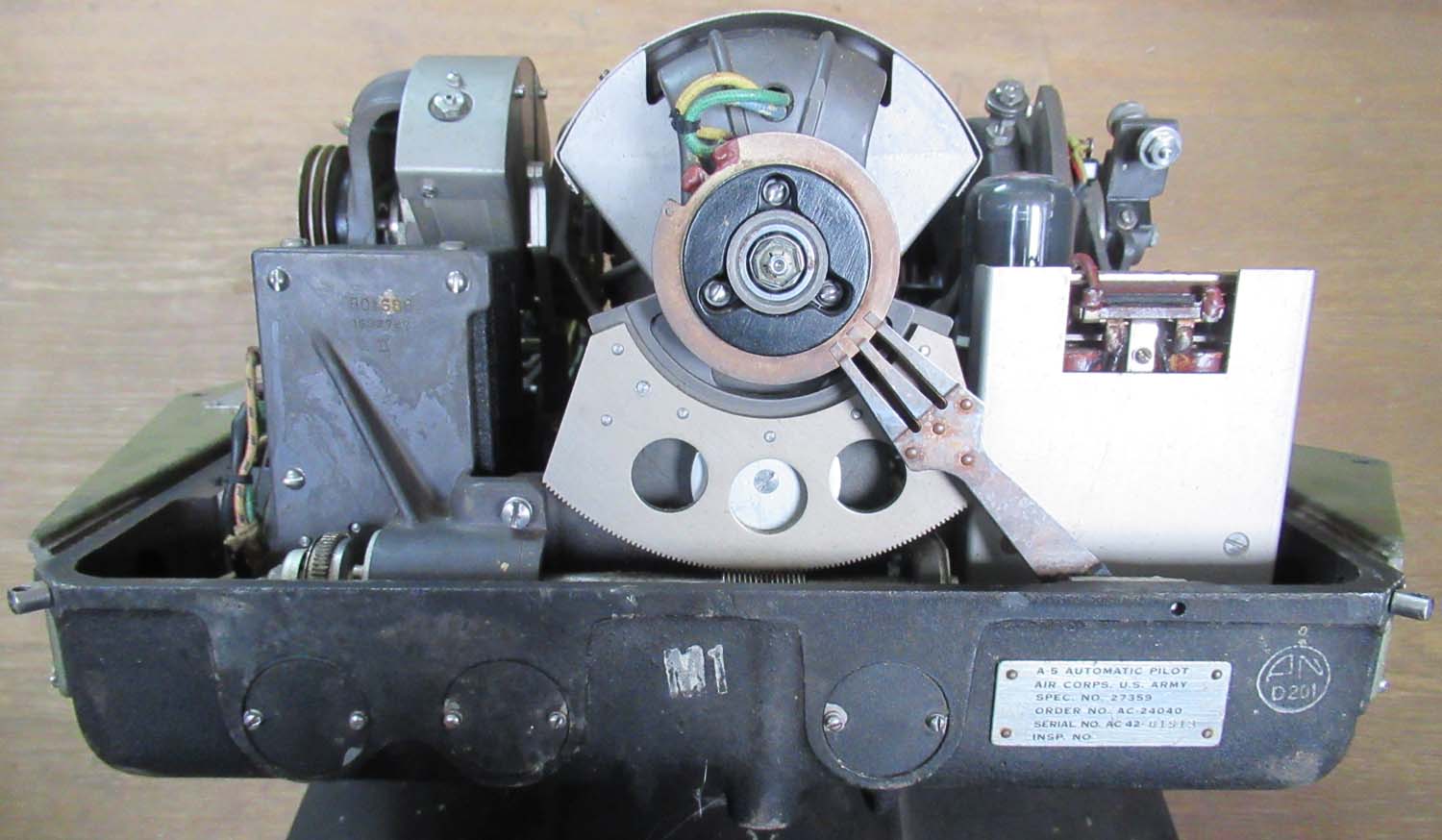
£795


Overseas buyers please
contact me for a shipping
quote
|
|
Click on the
pictures to enlarge them
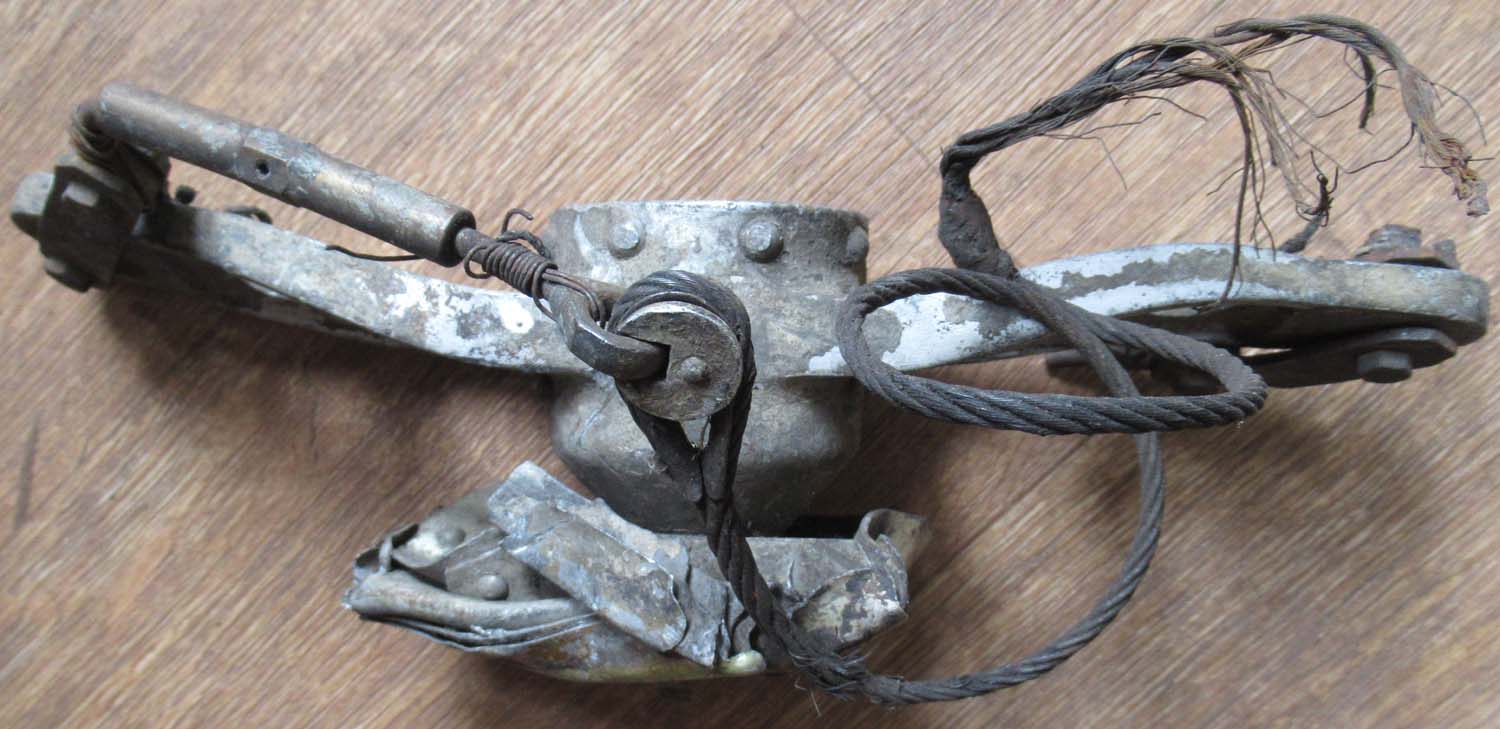
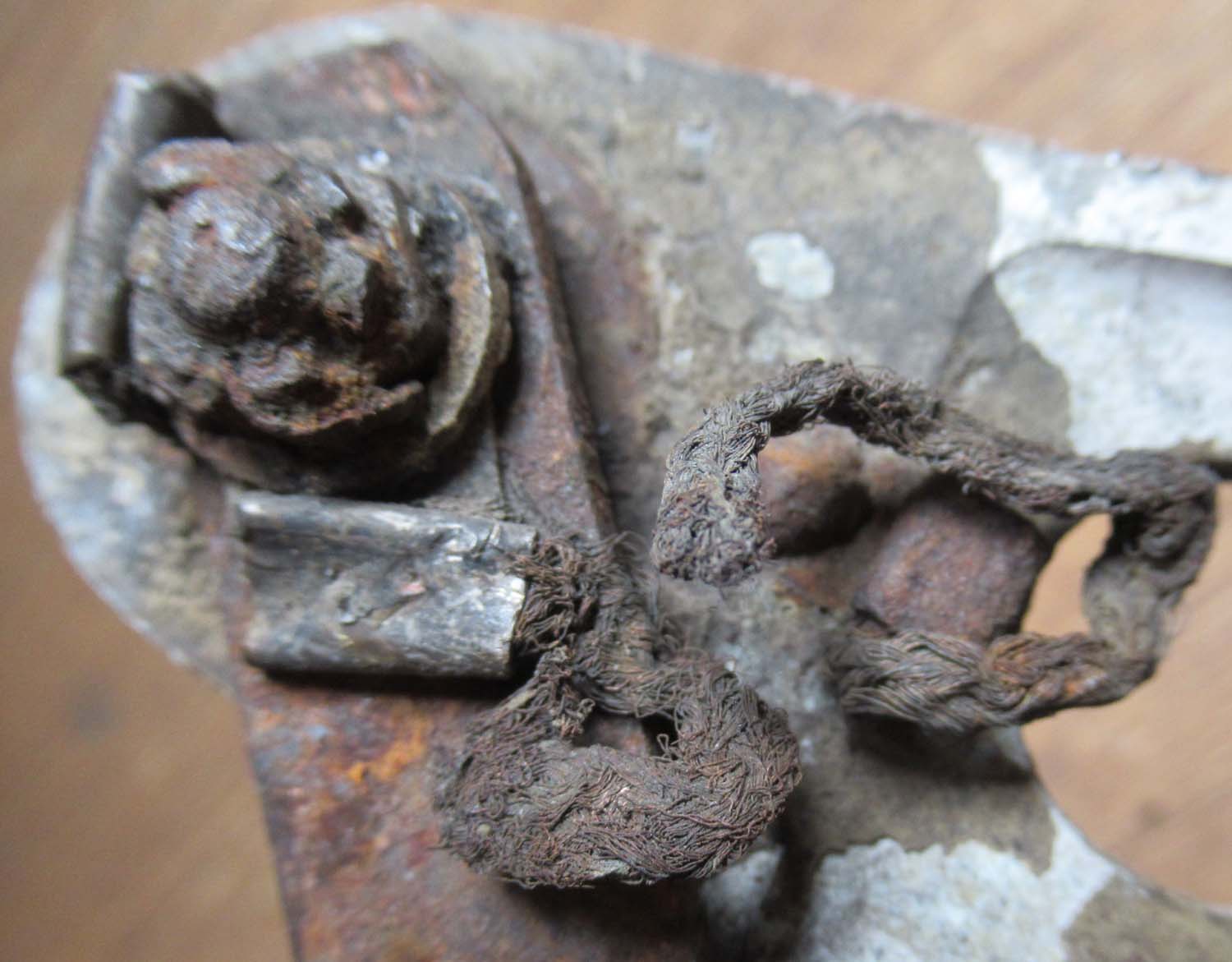

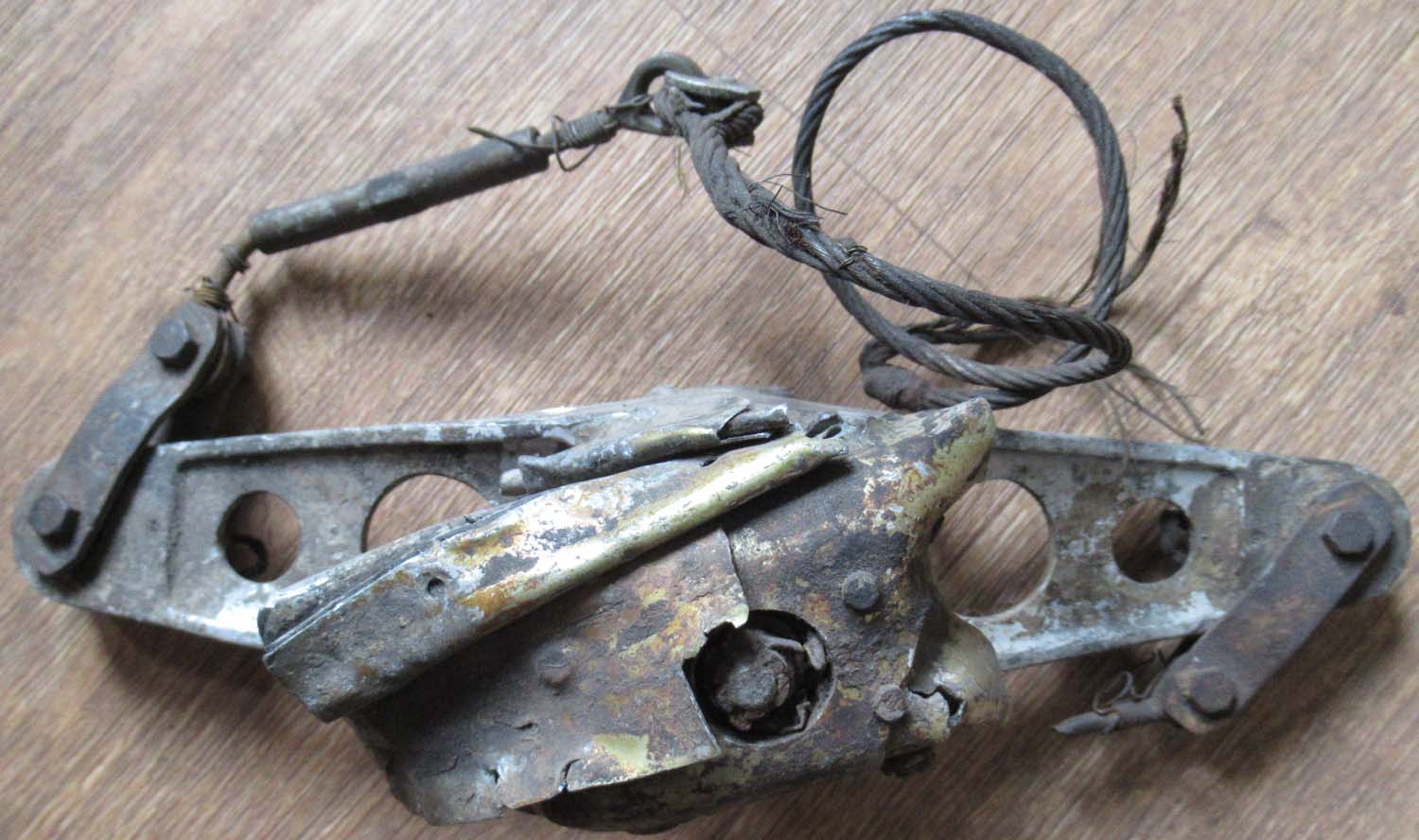
|
JU 88 control crank (Pg1 Relics)
Here is a control crank from a
JU 88 its from the tail or to control the elevator, its
obviously from a crash but we have no idea of the identity of
the aircraft still a nice rare peace.

Shown above the JU 88.
The JU88 Was one of the most versatile German aircraft of the
war.
It was first designed in
1936 and amazingly flew later that year as a fast daylight
bomber it was soon shown to have excellent performance and was
used in multiple roles throughout the war.
Click on the
pictures to enlarge them
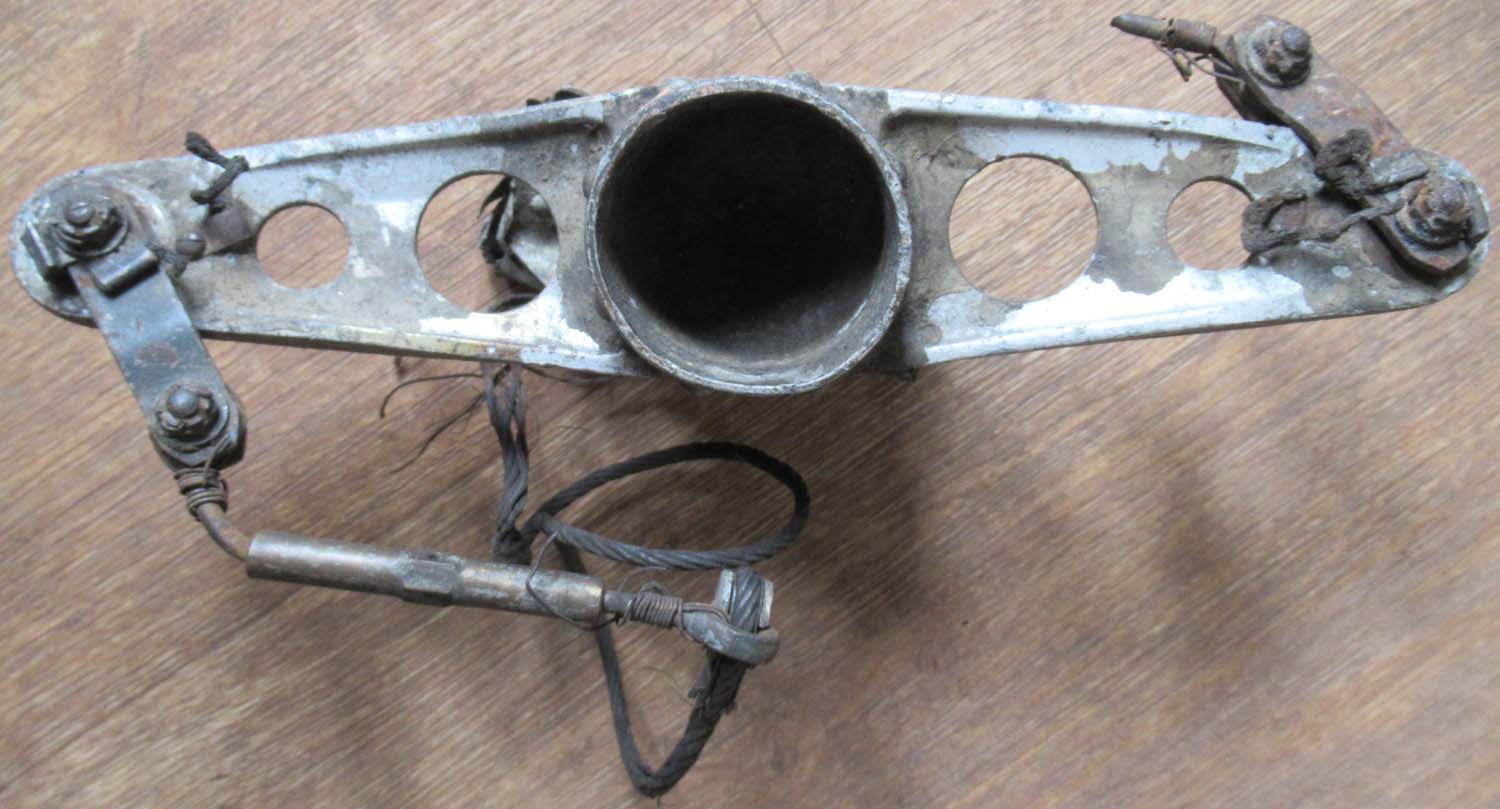


Available in Relics.
Please click this link to navigate to the page
|
|
|

 |




